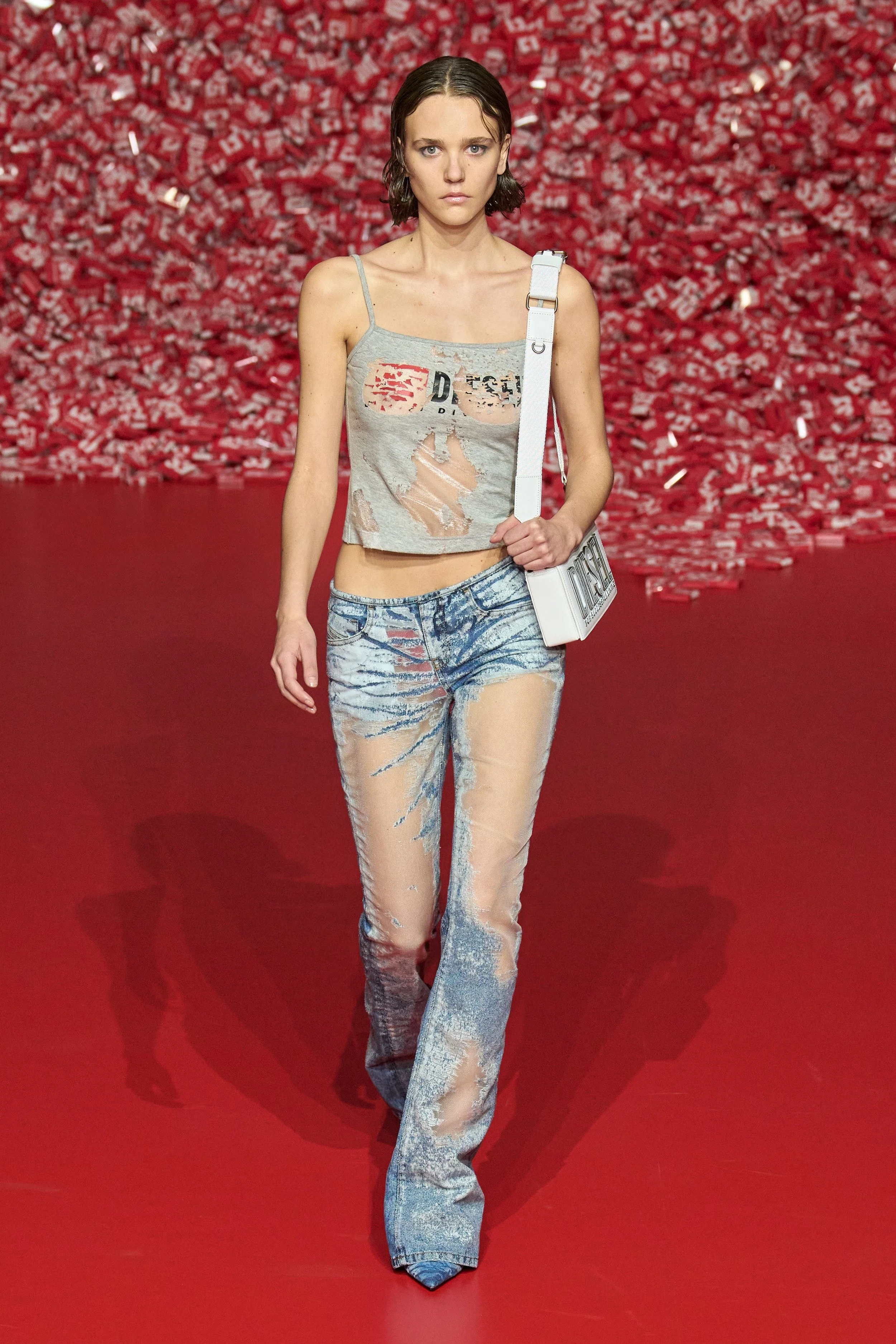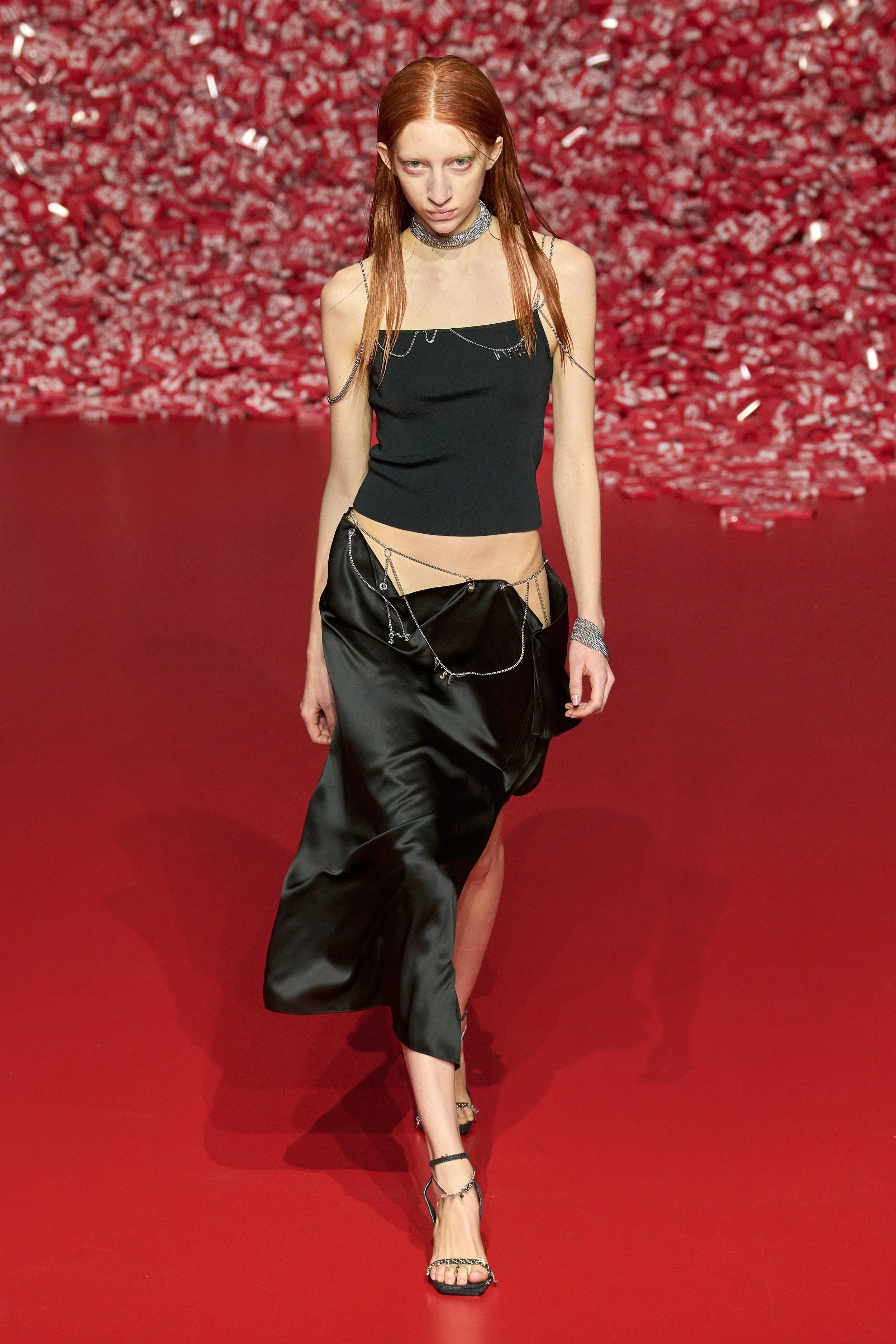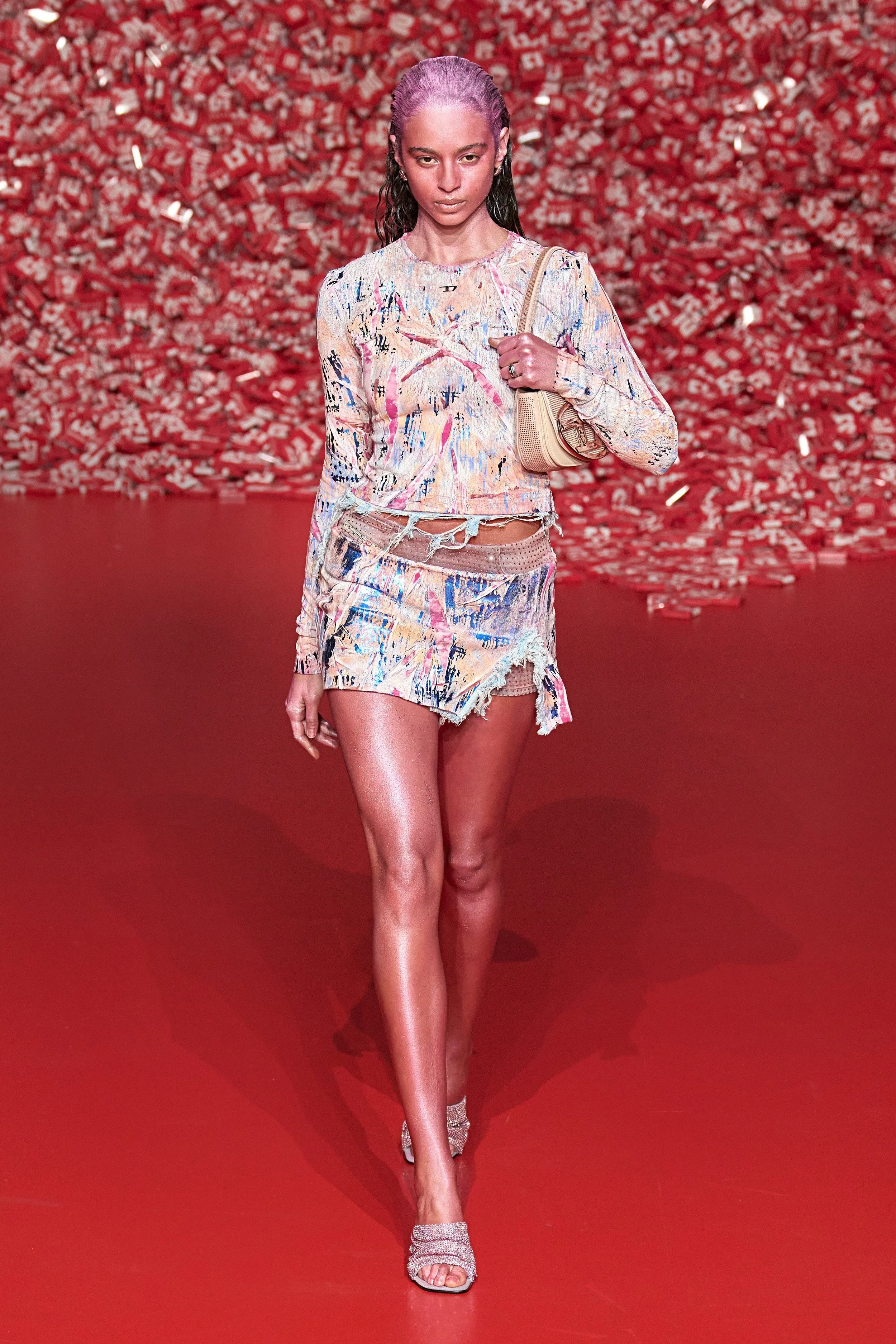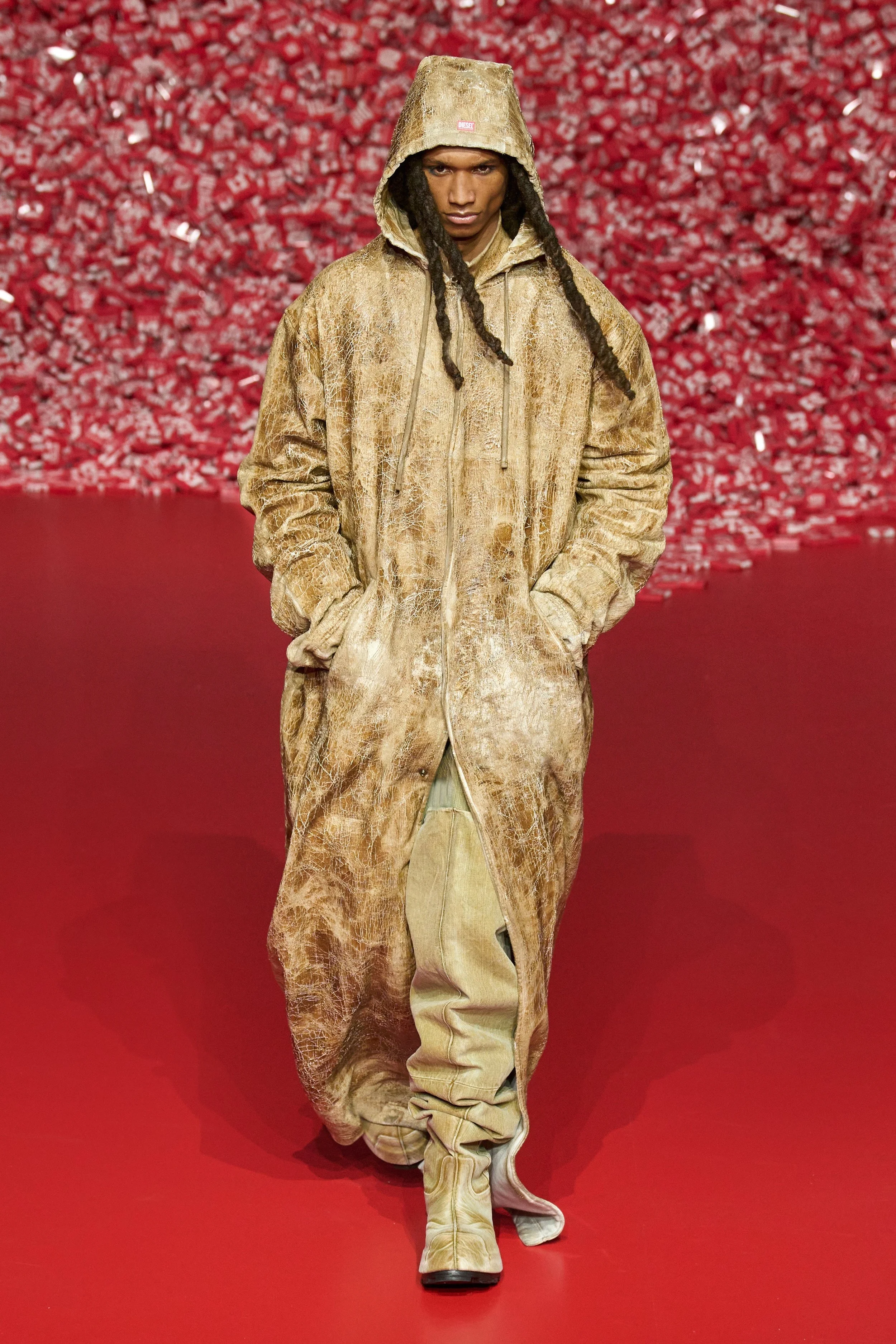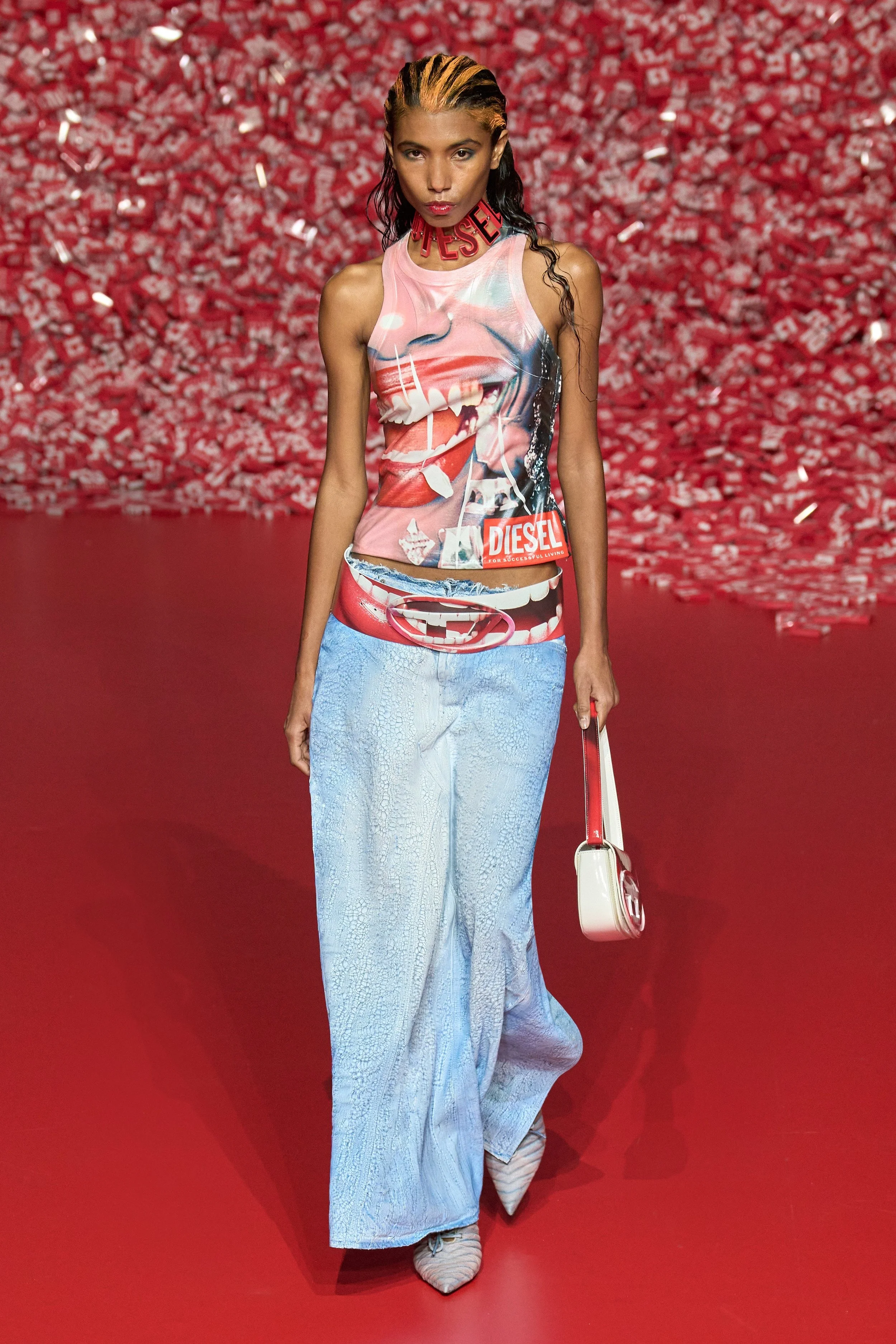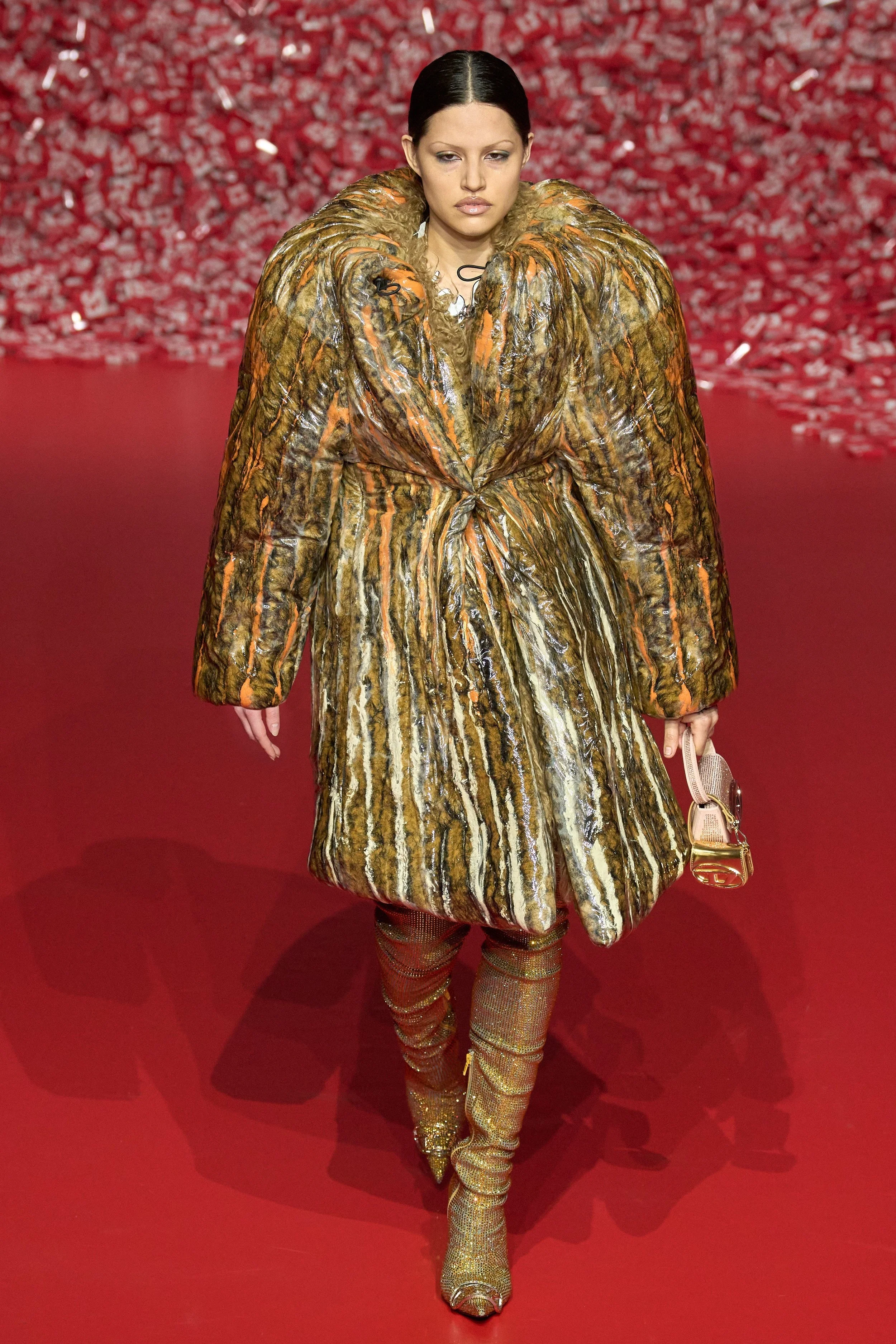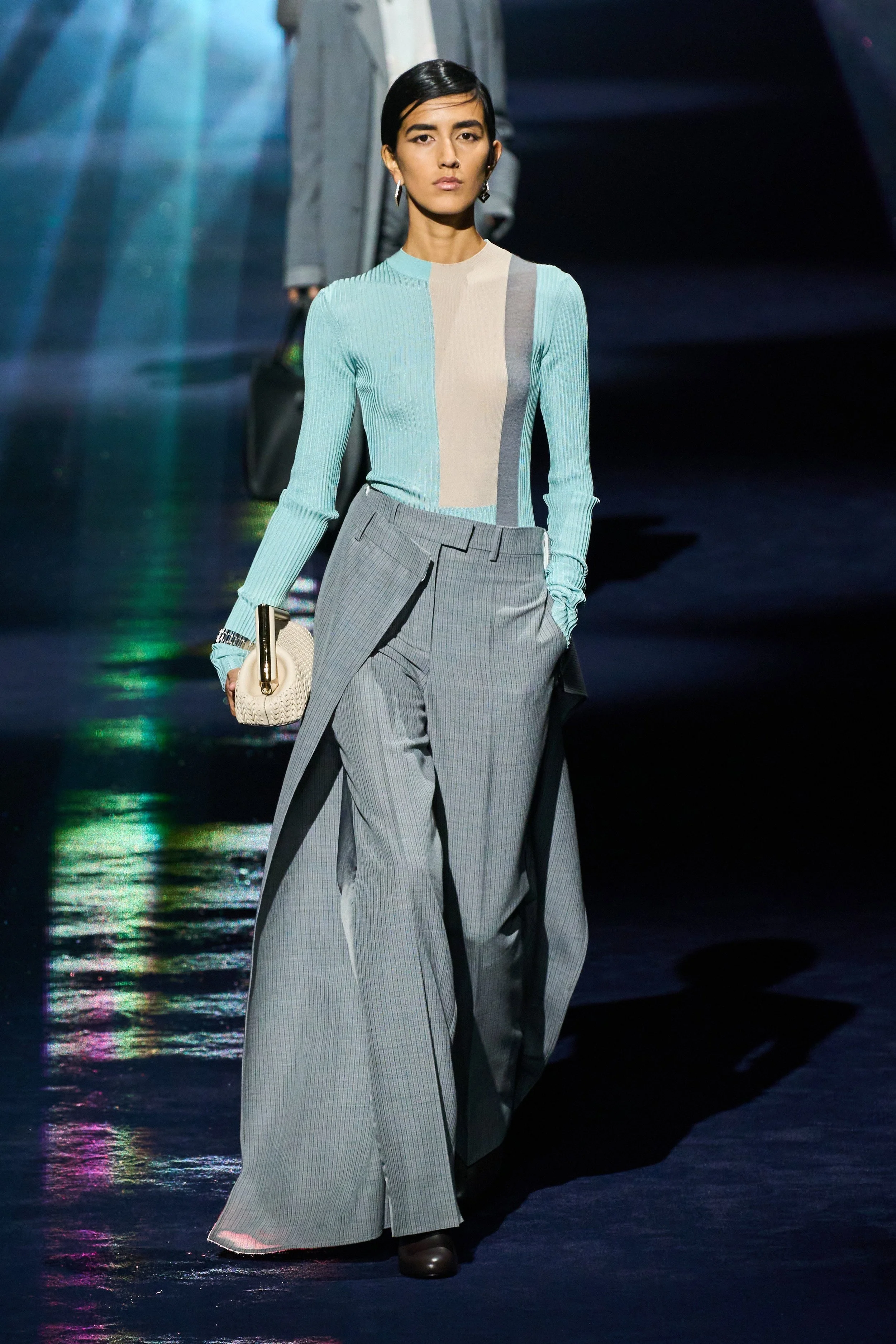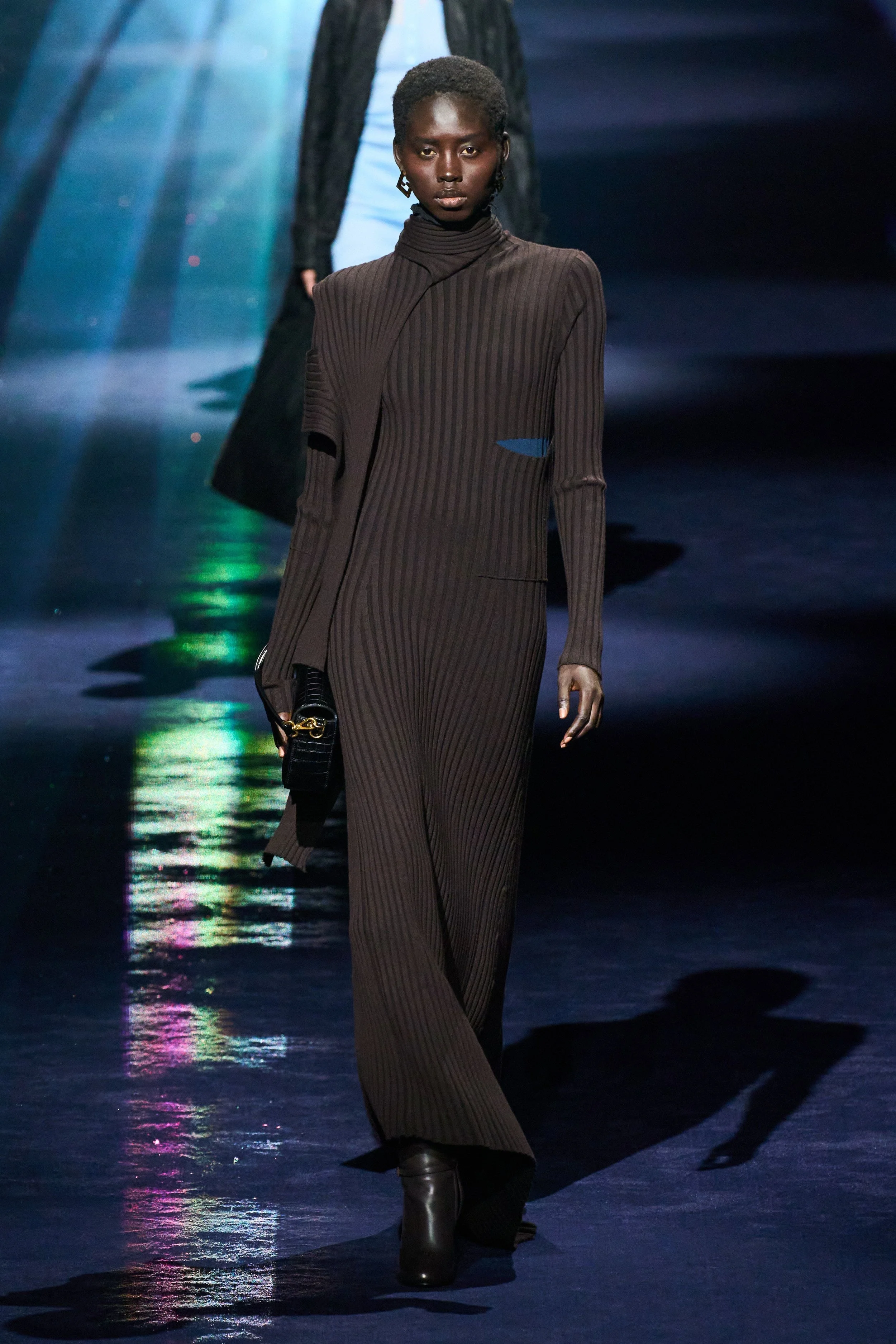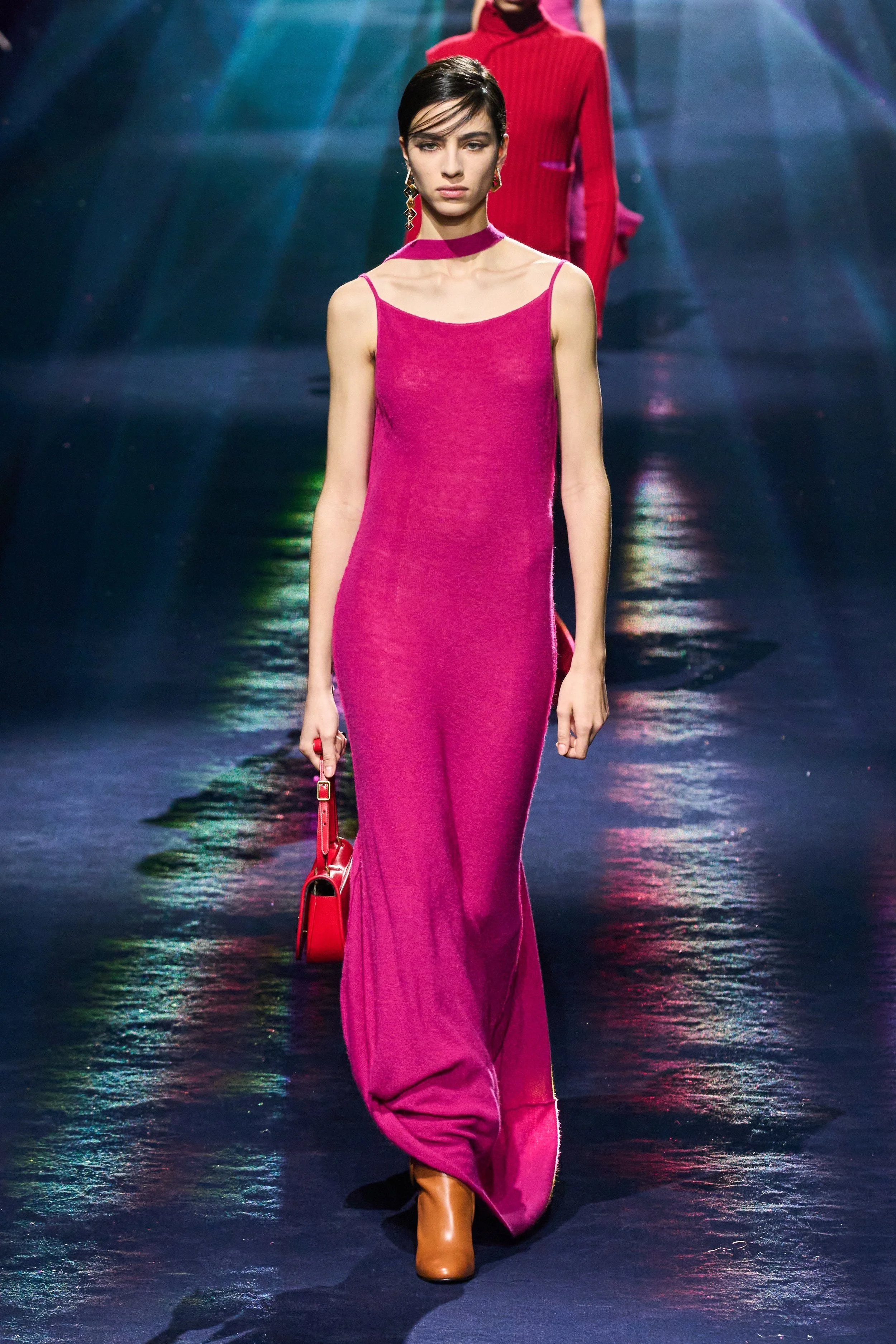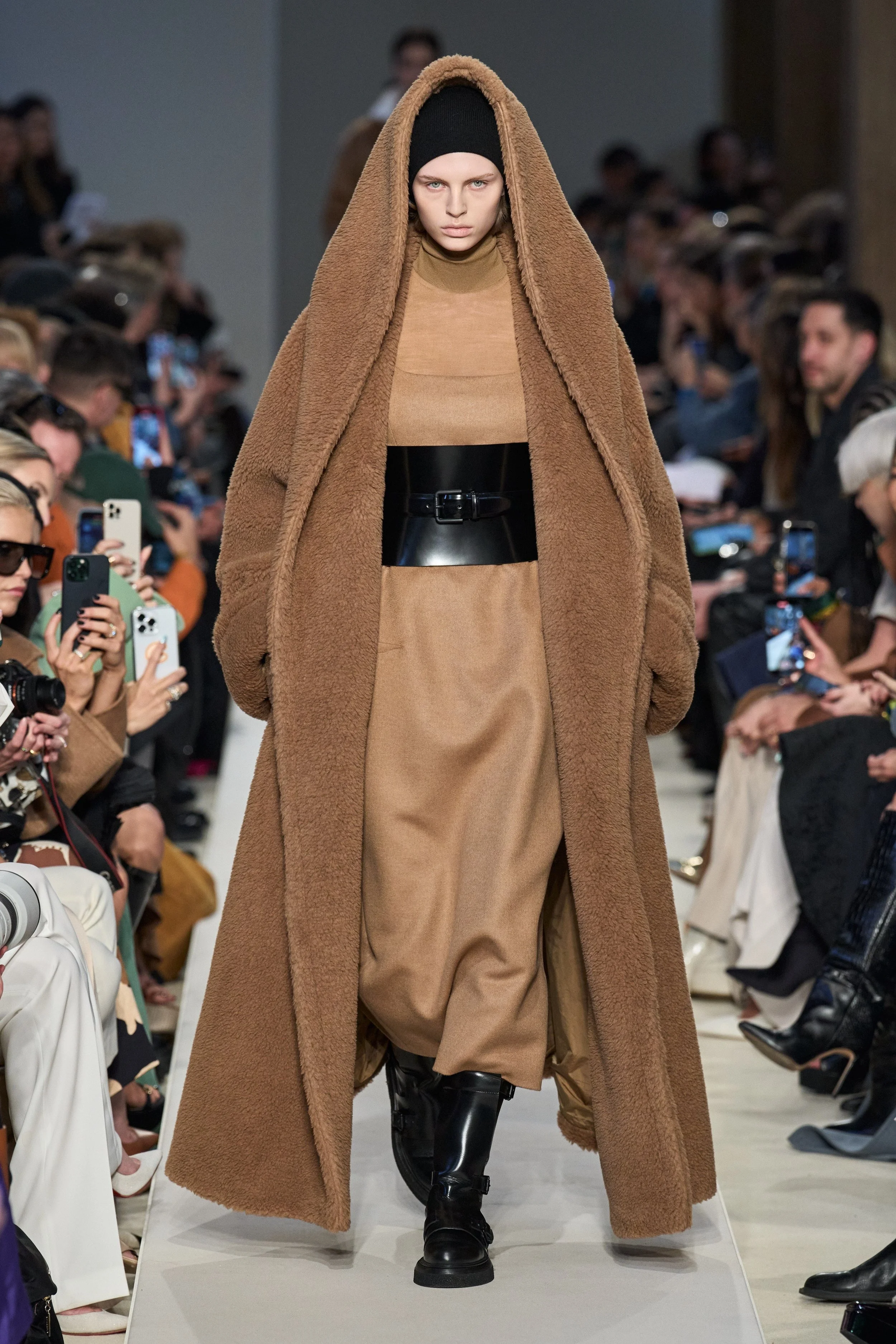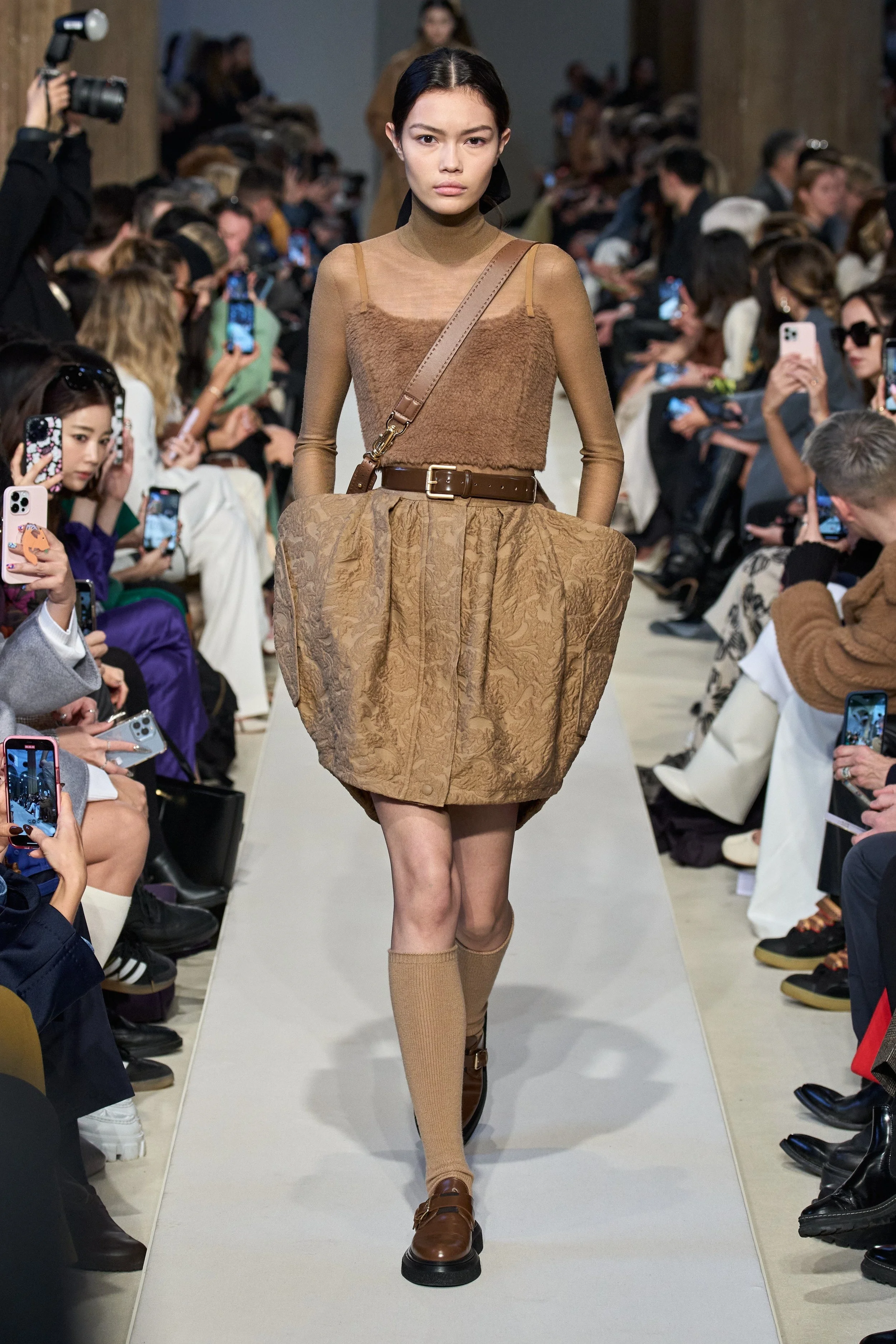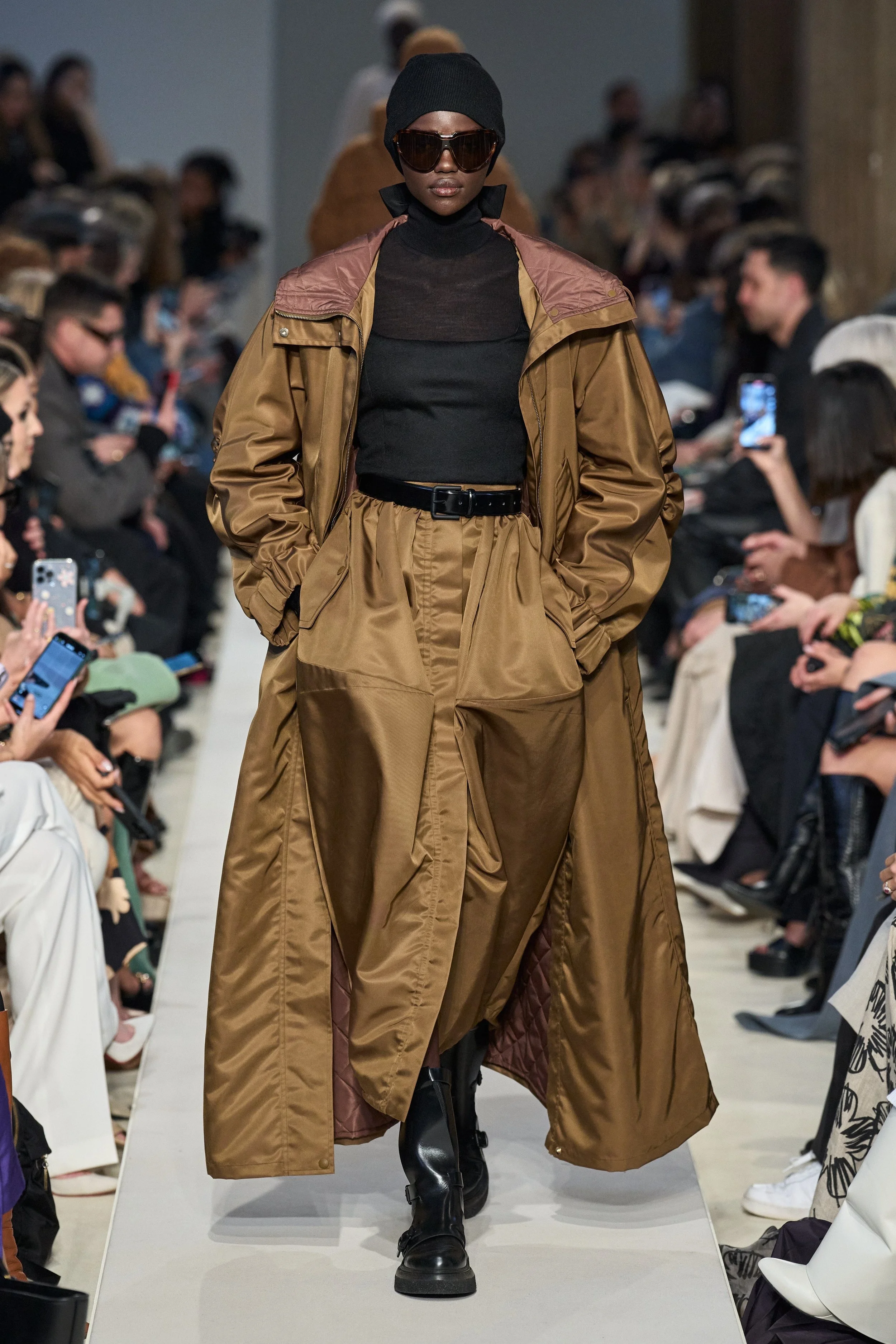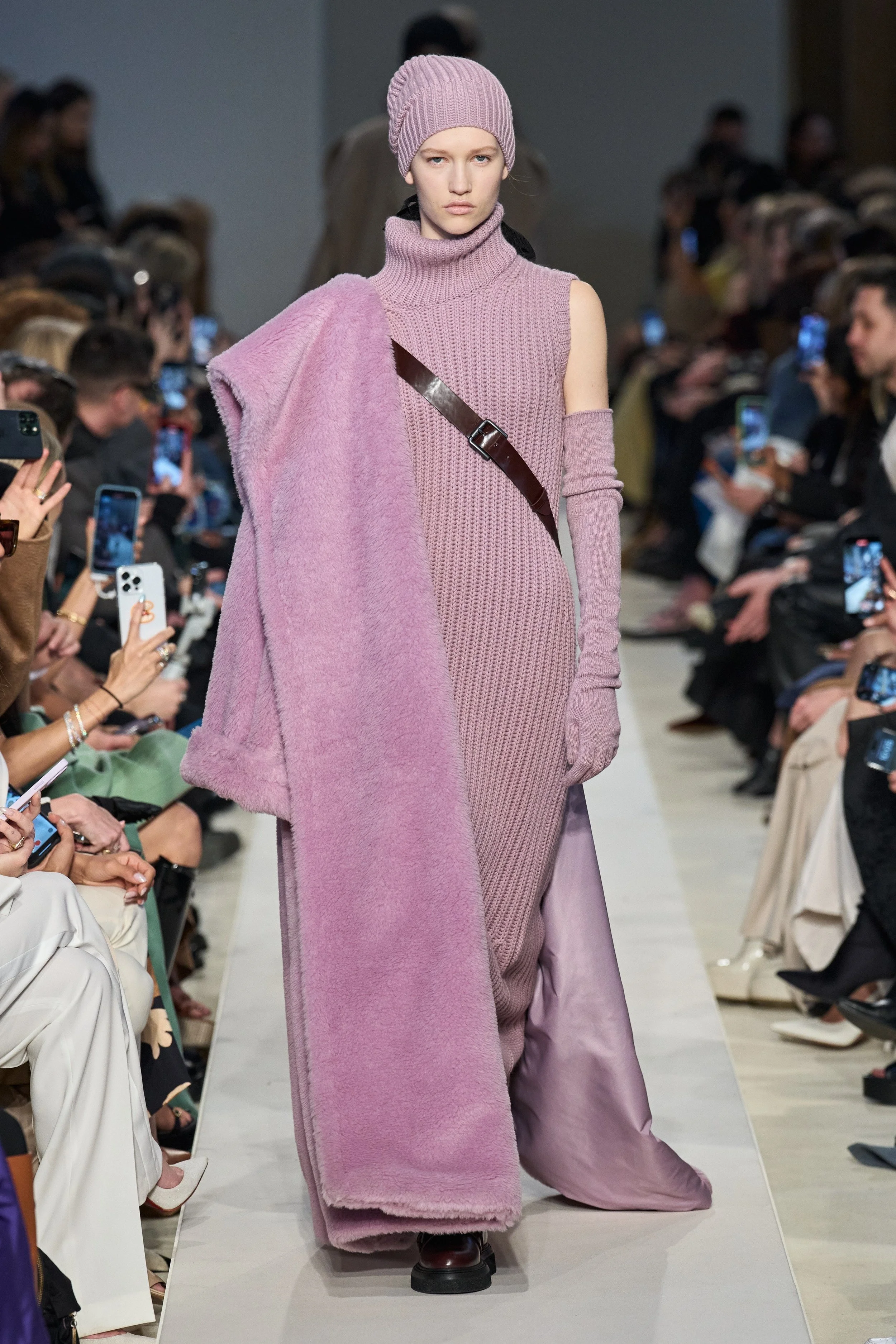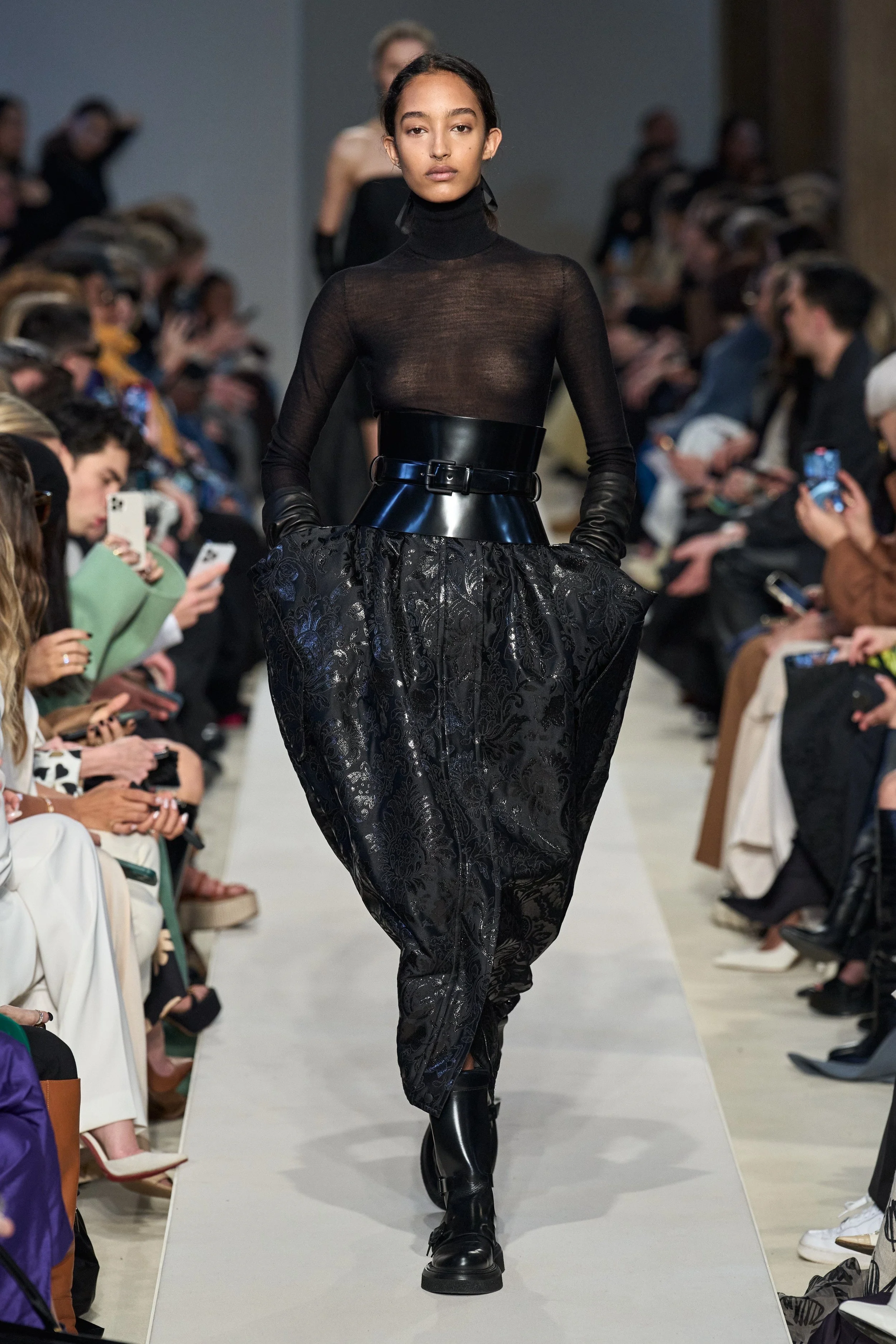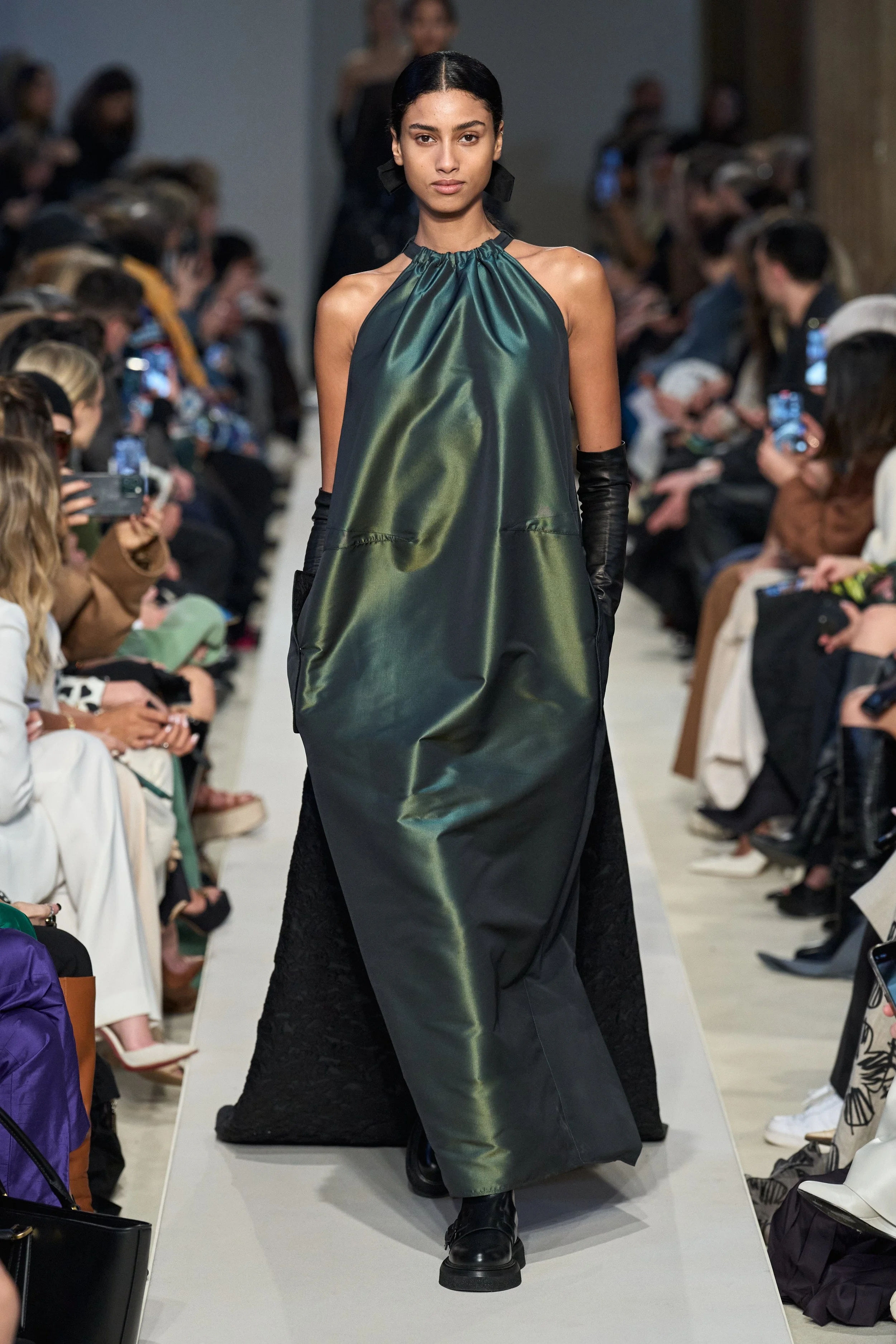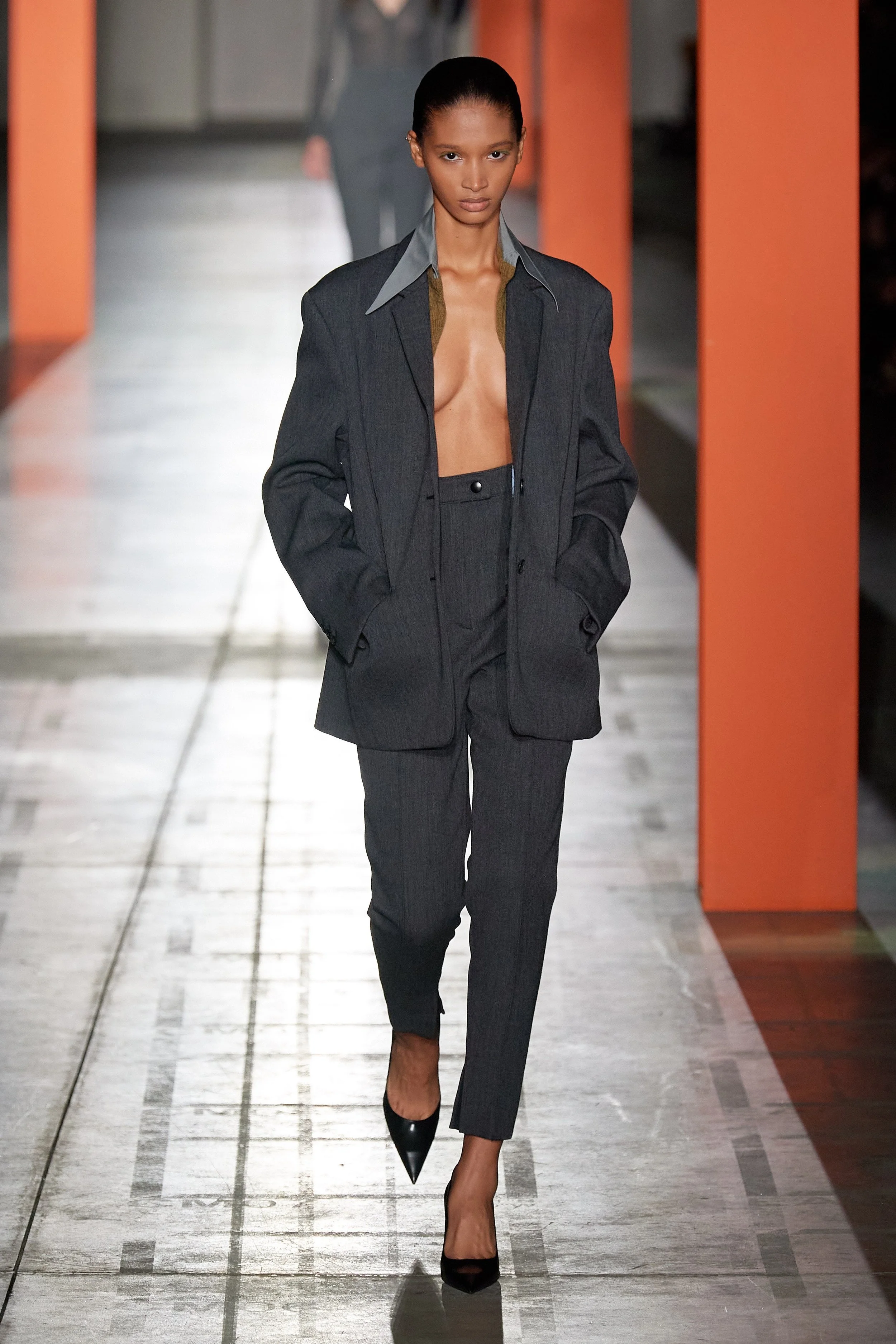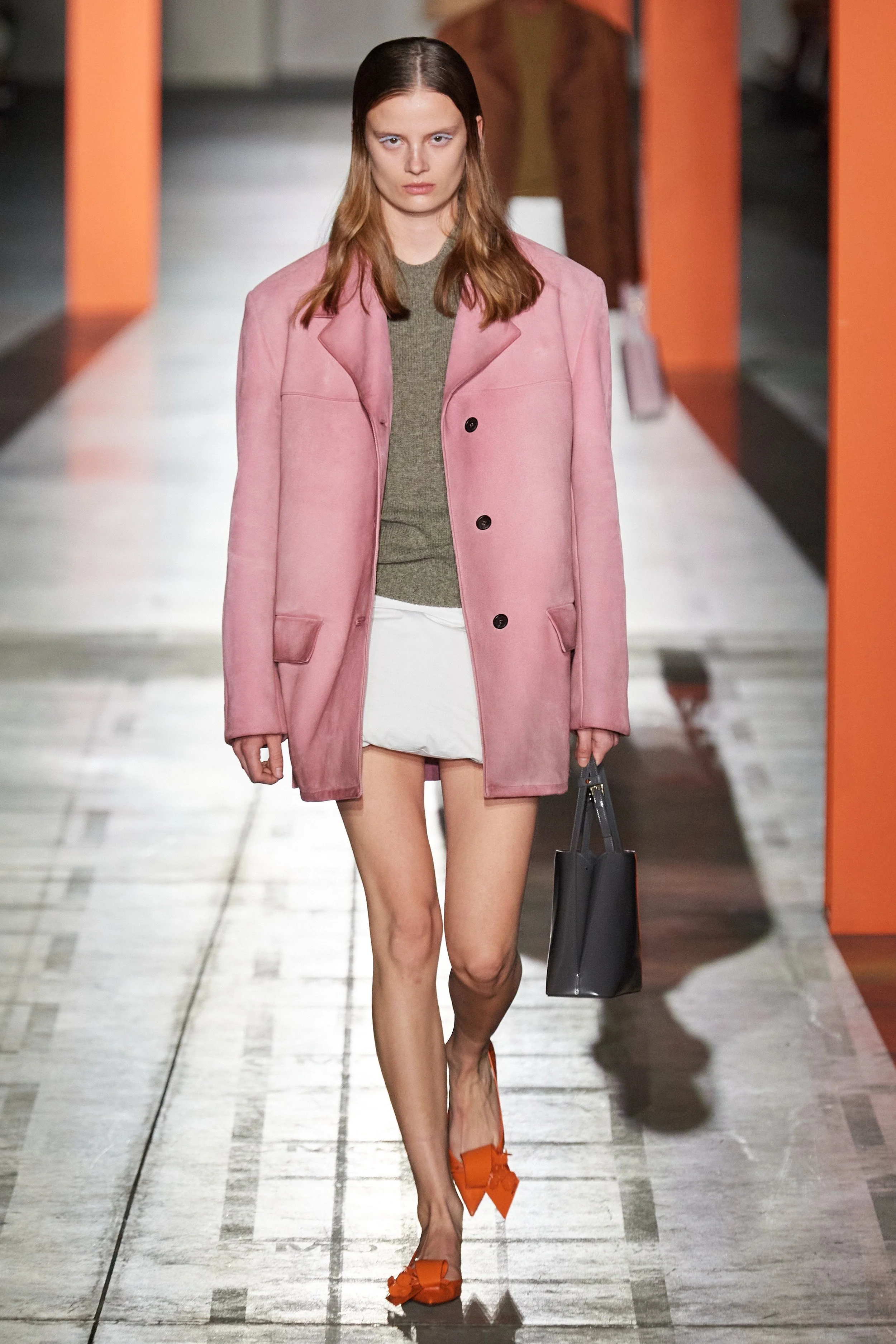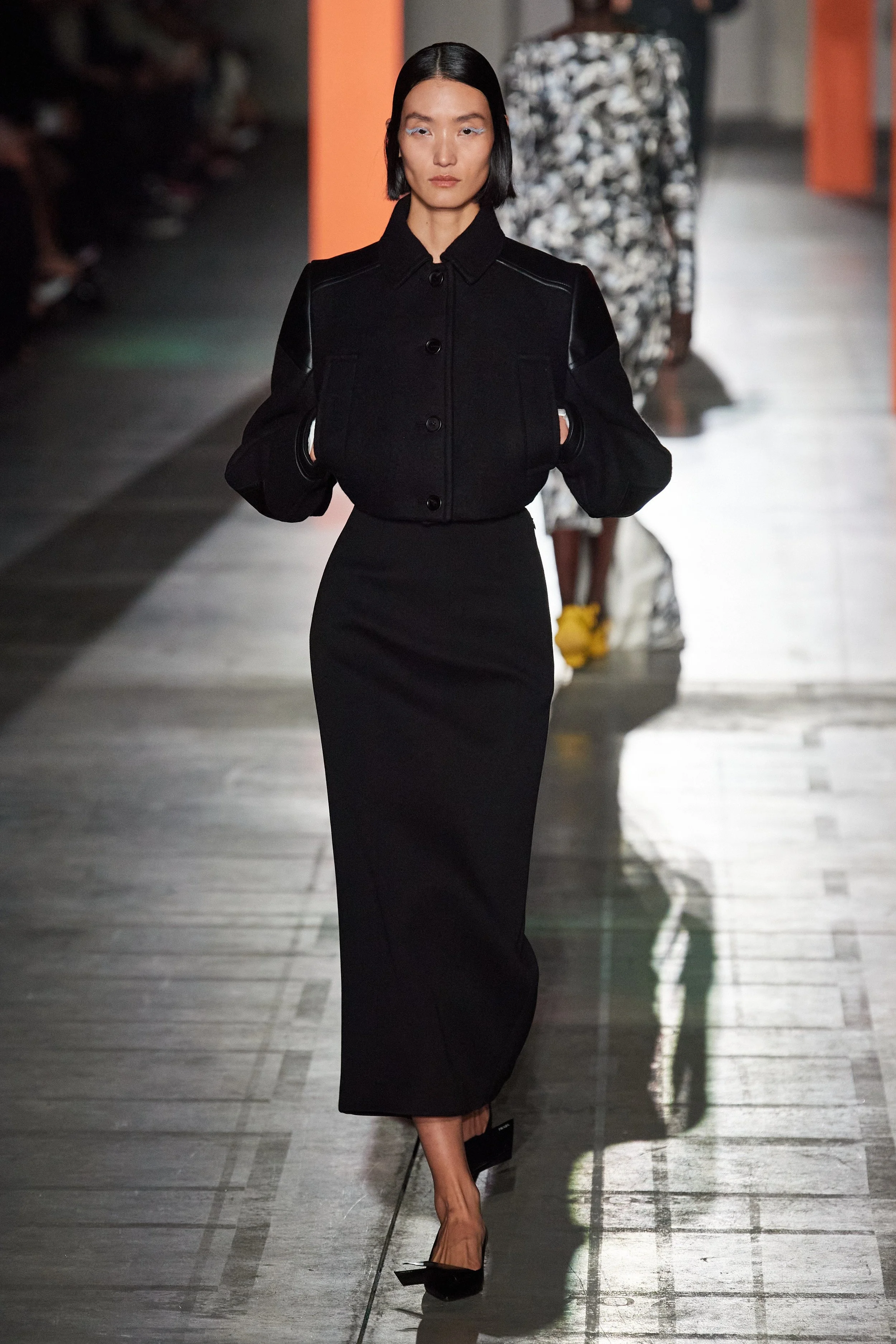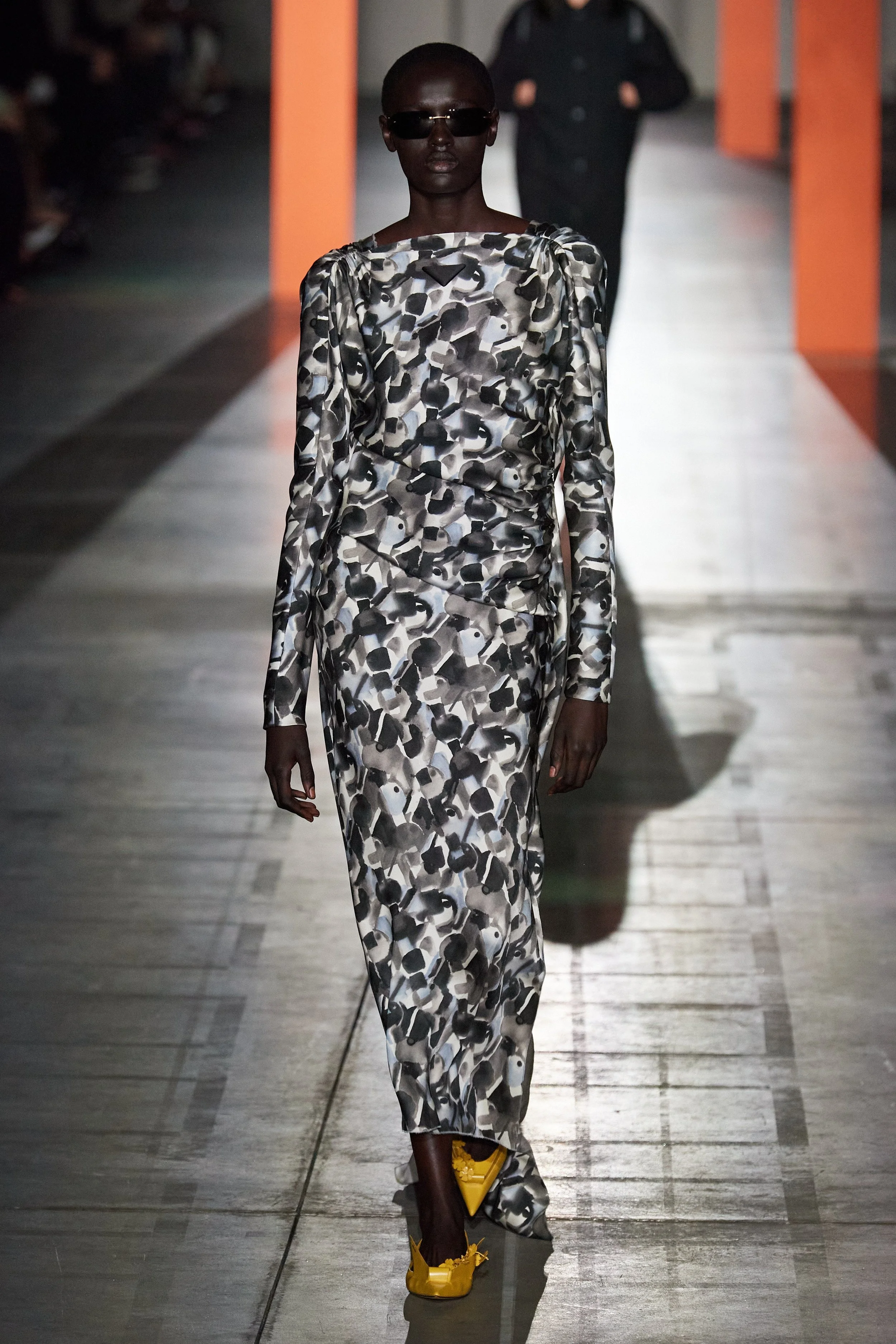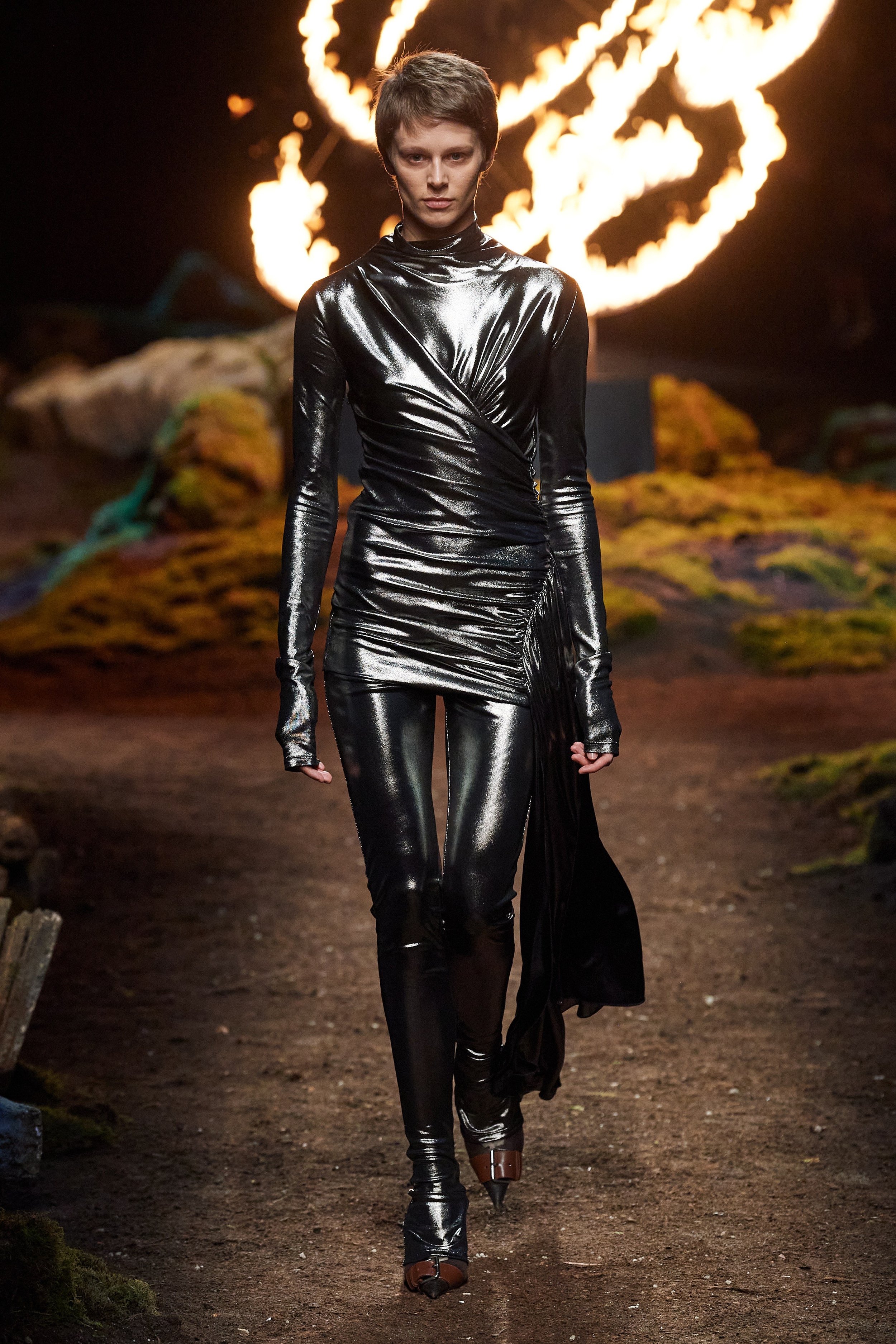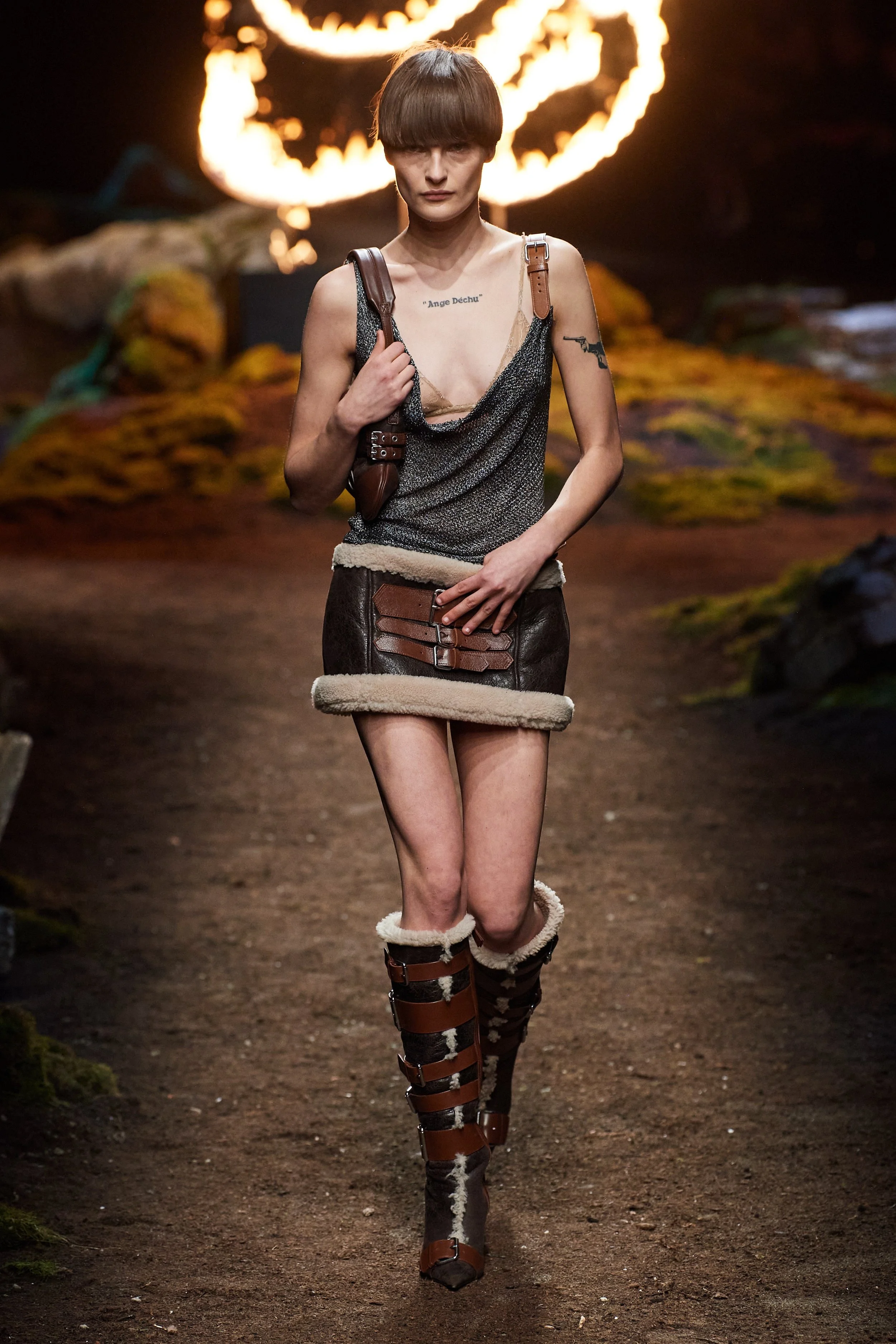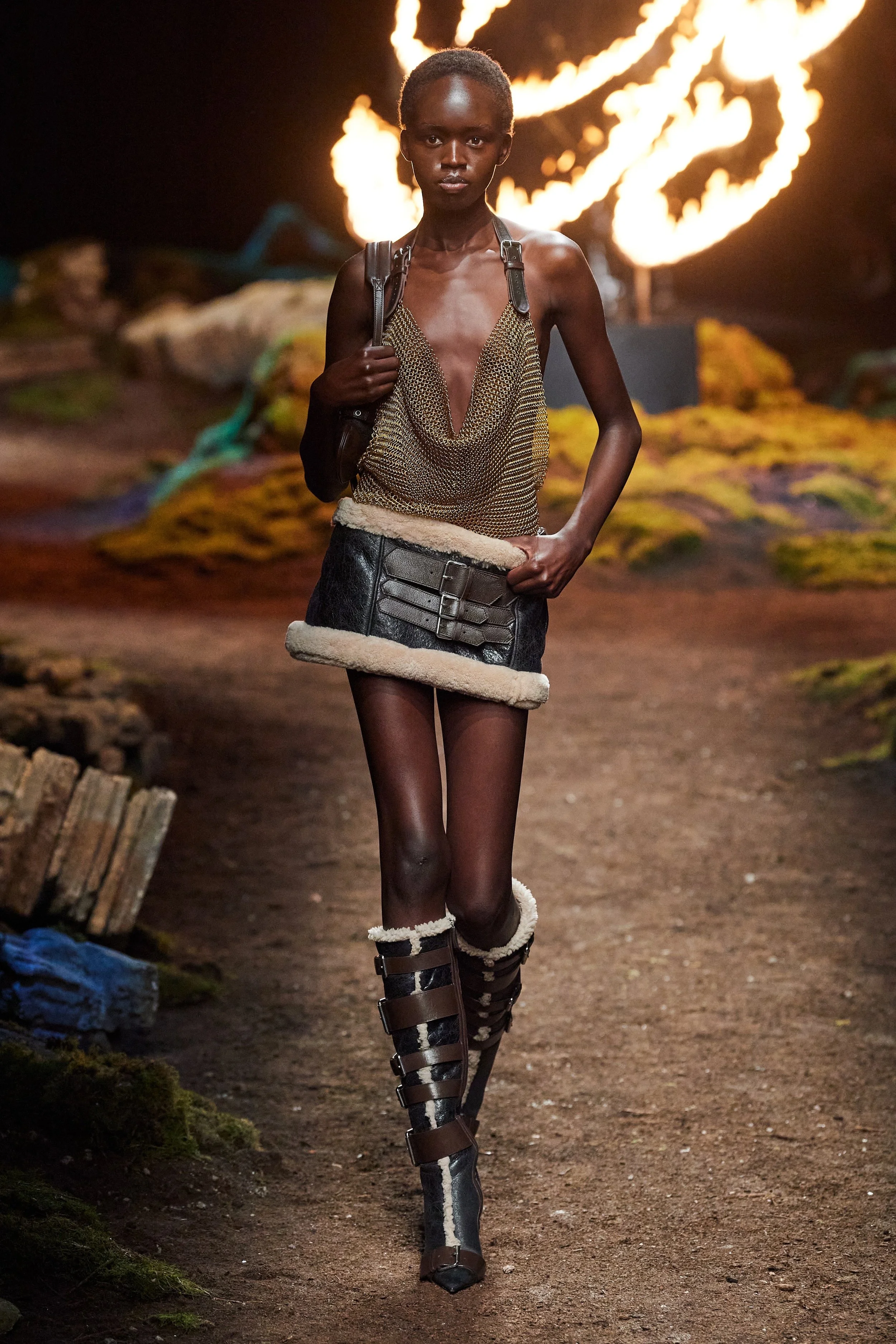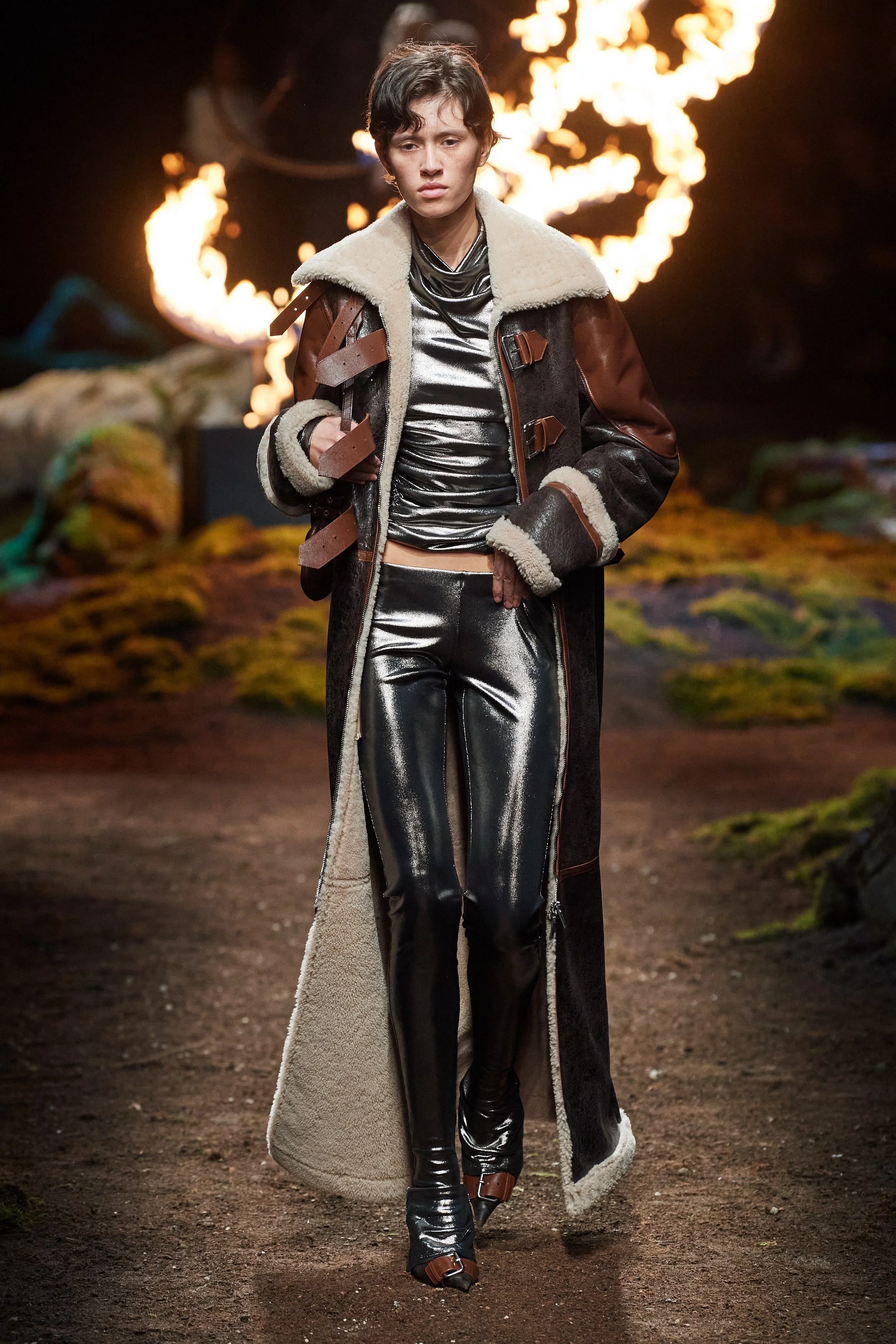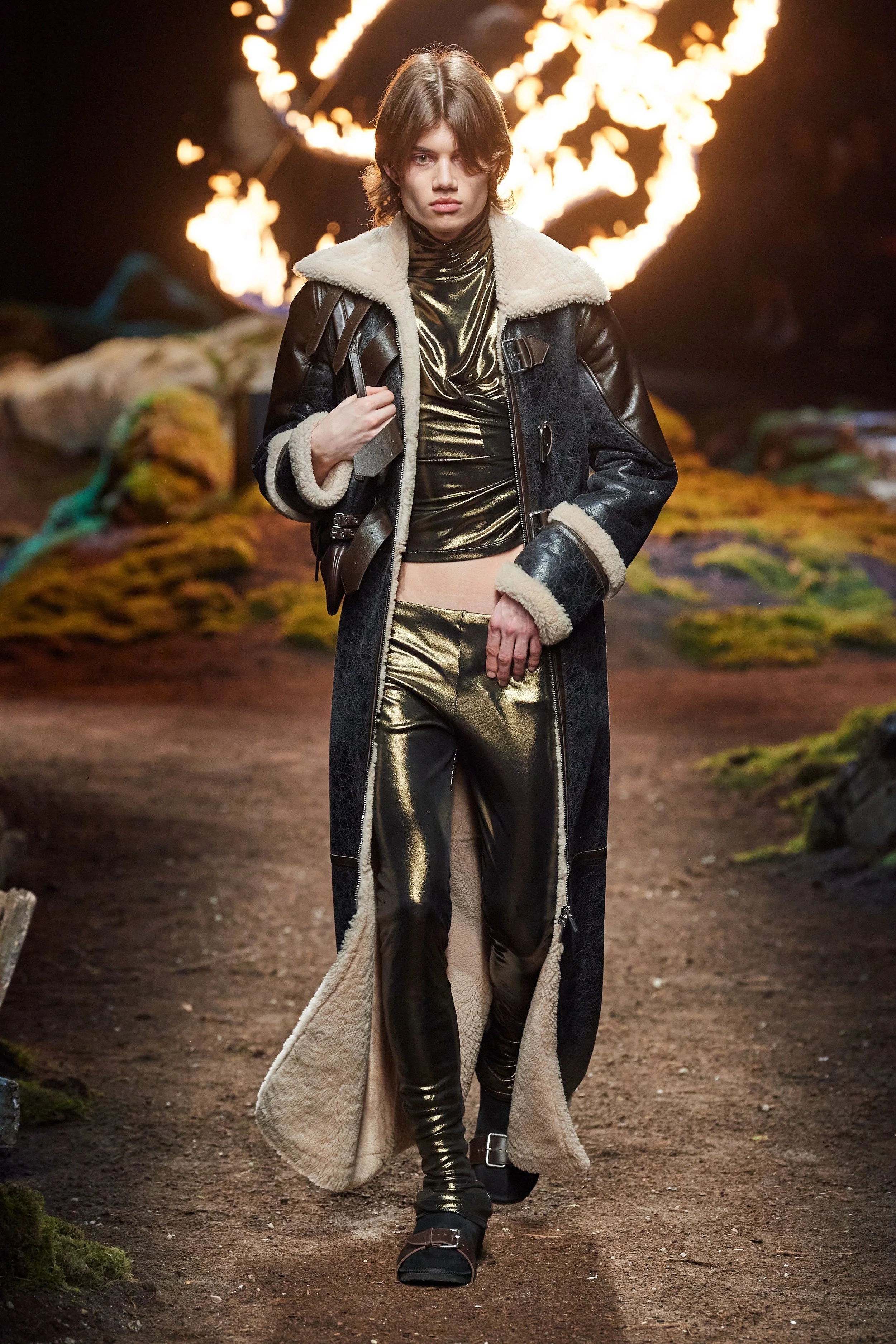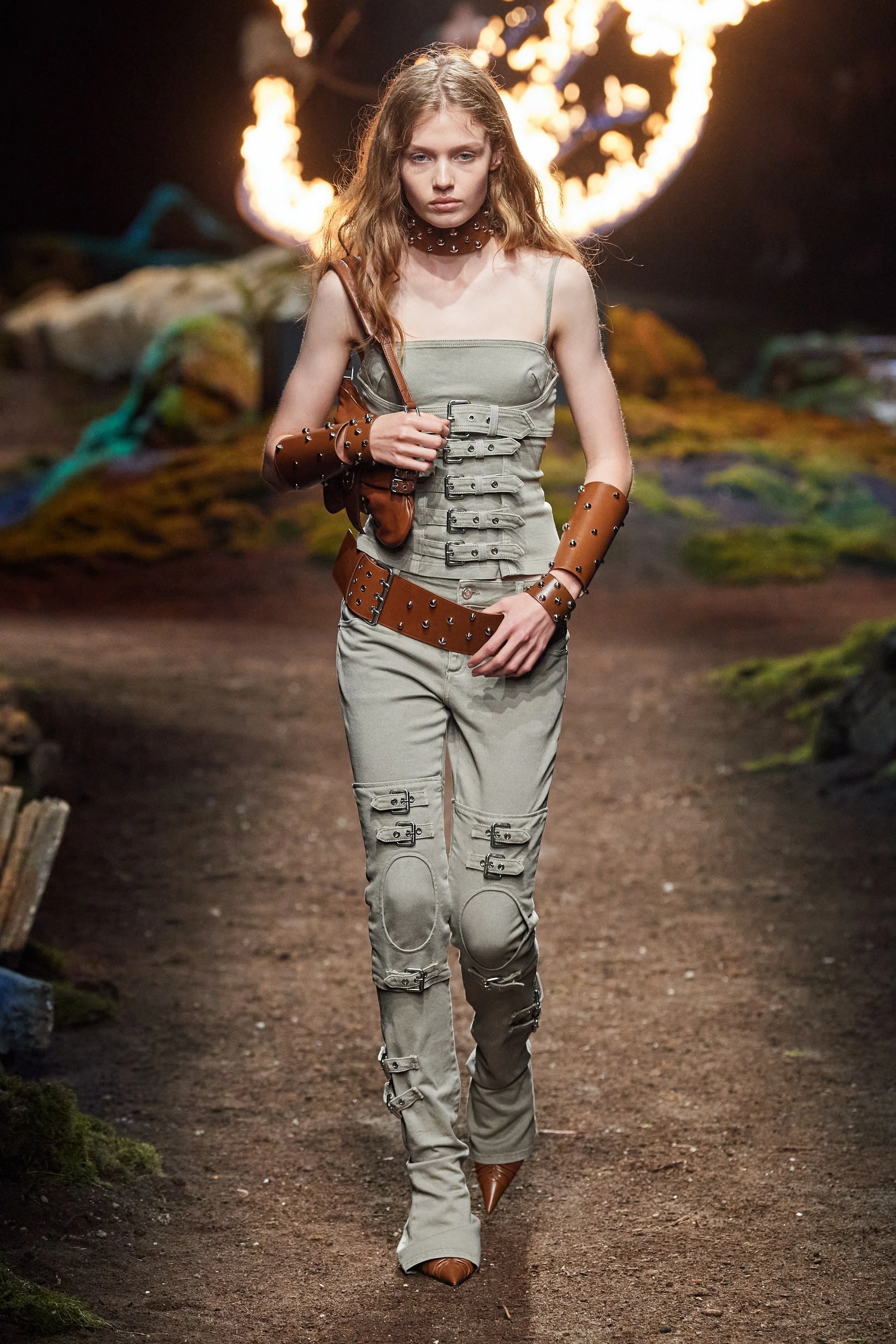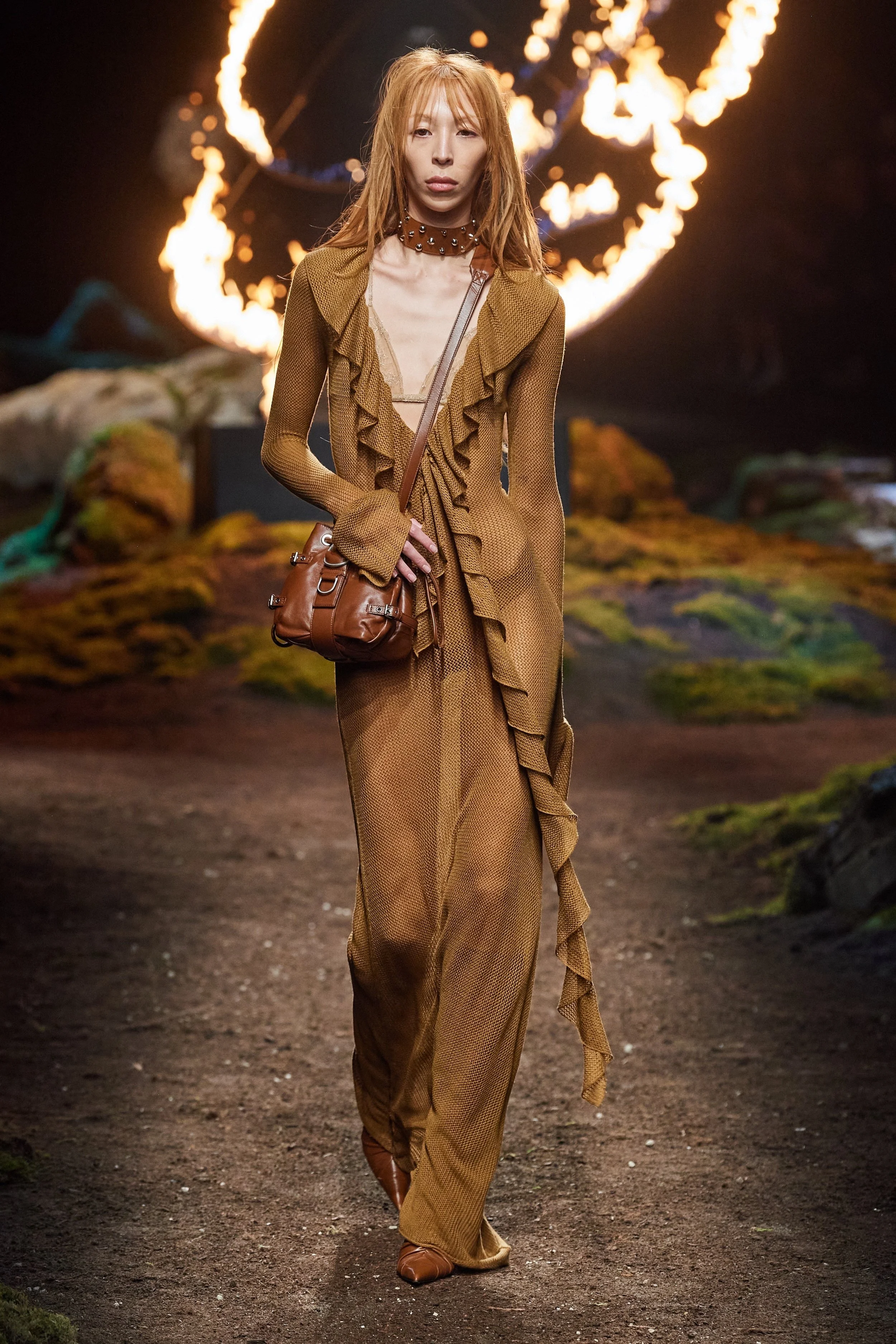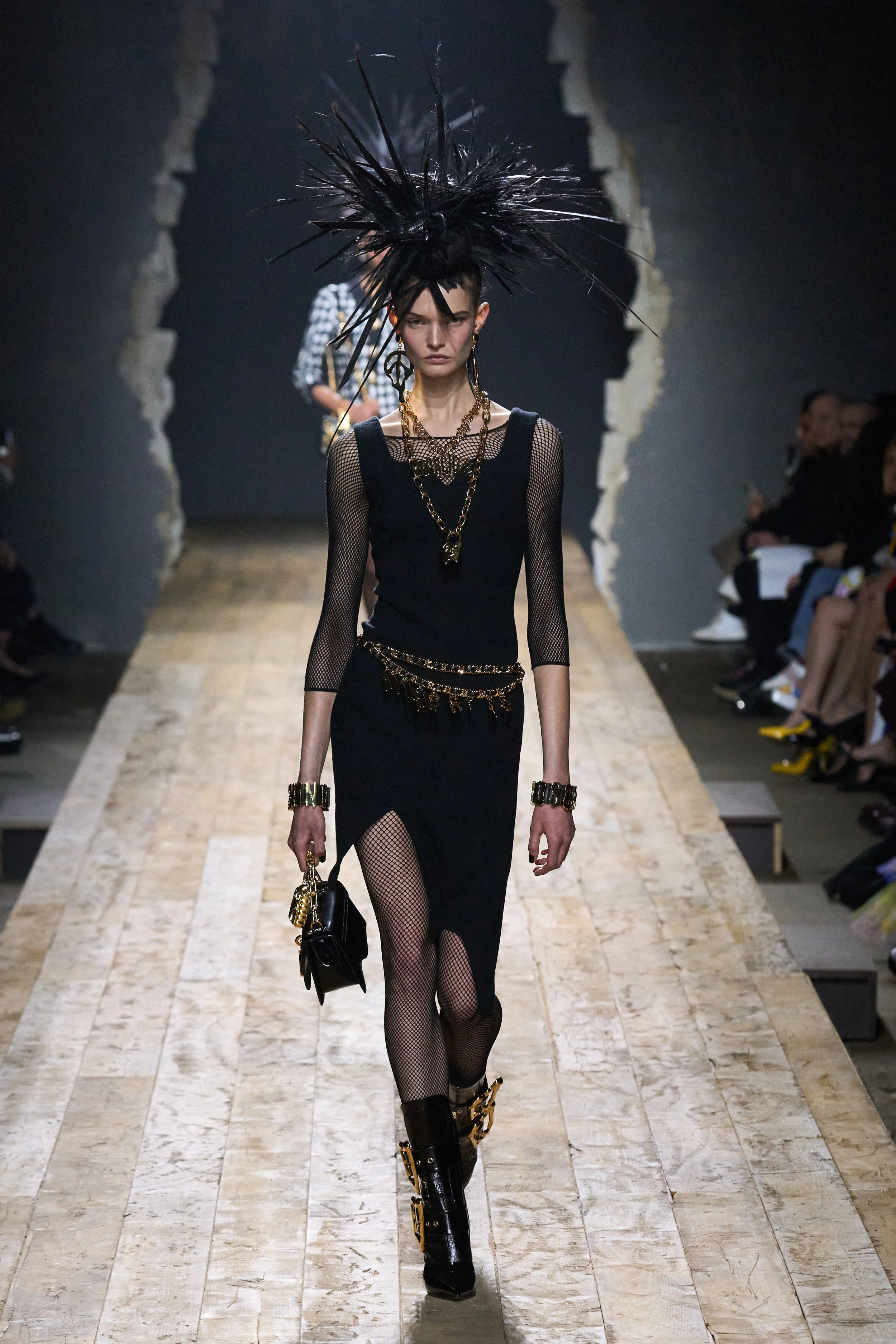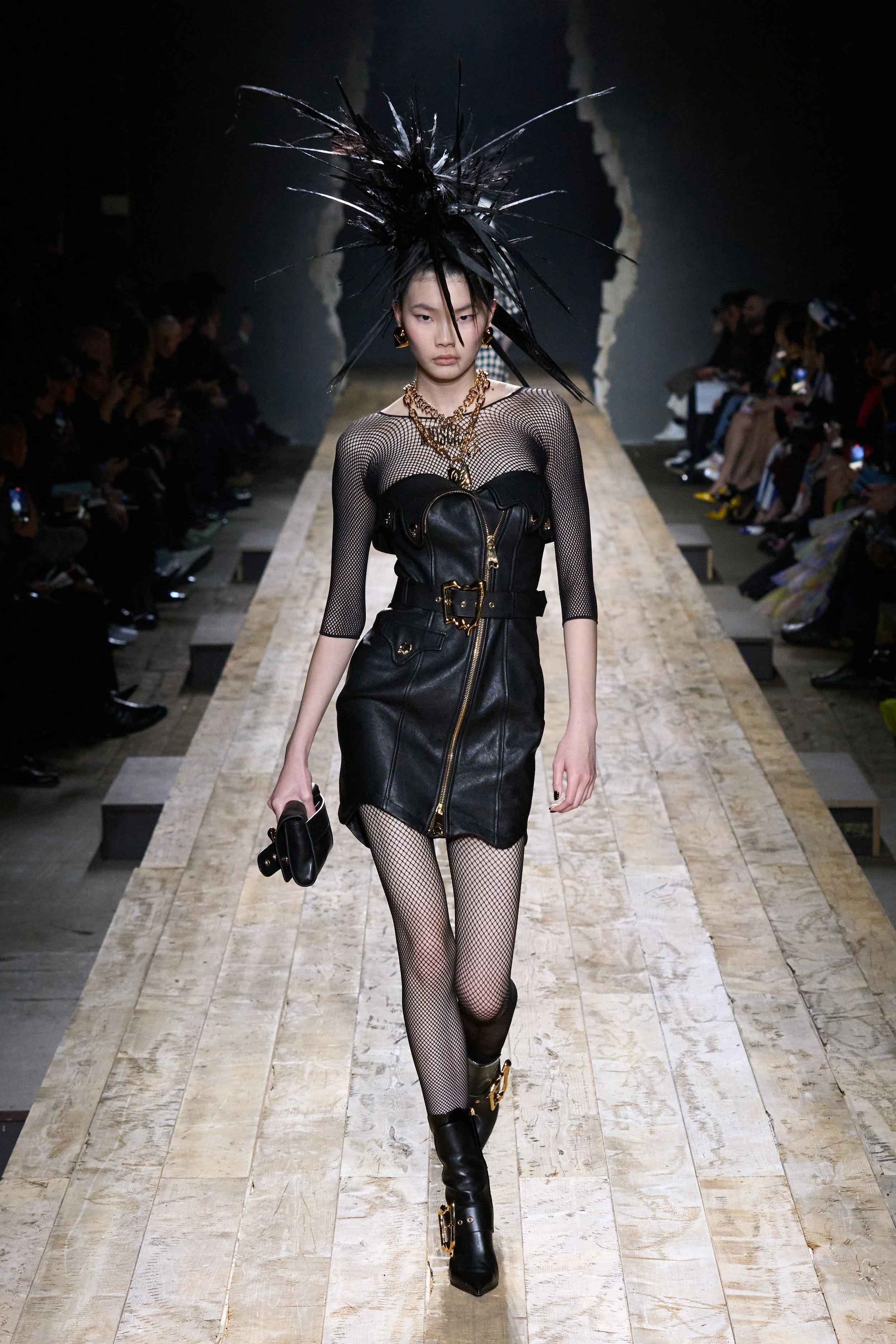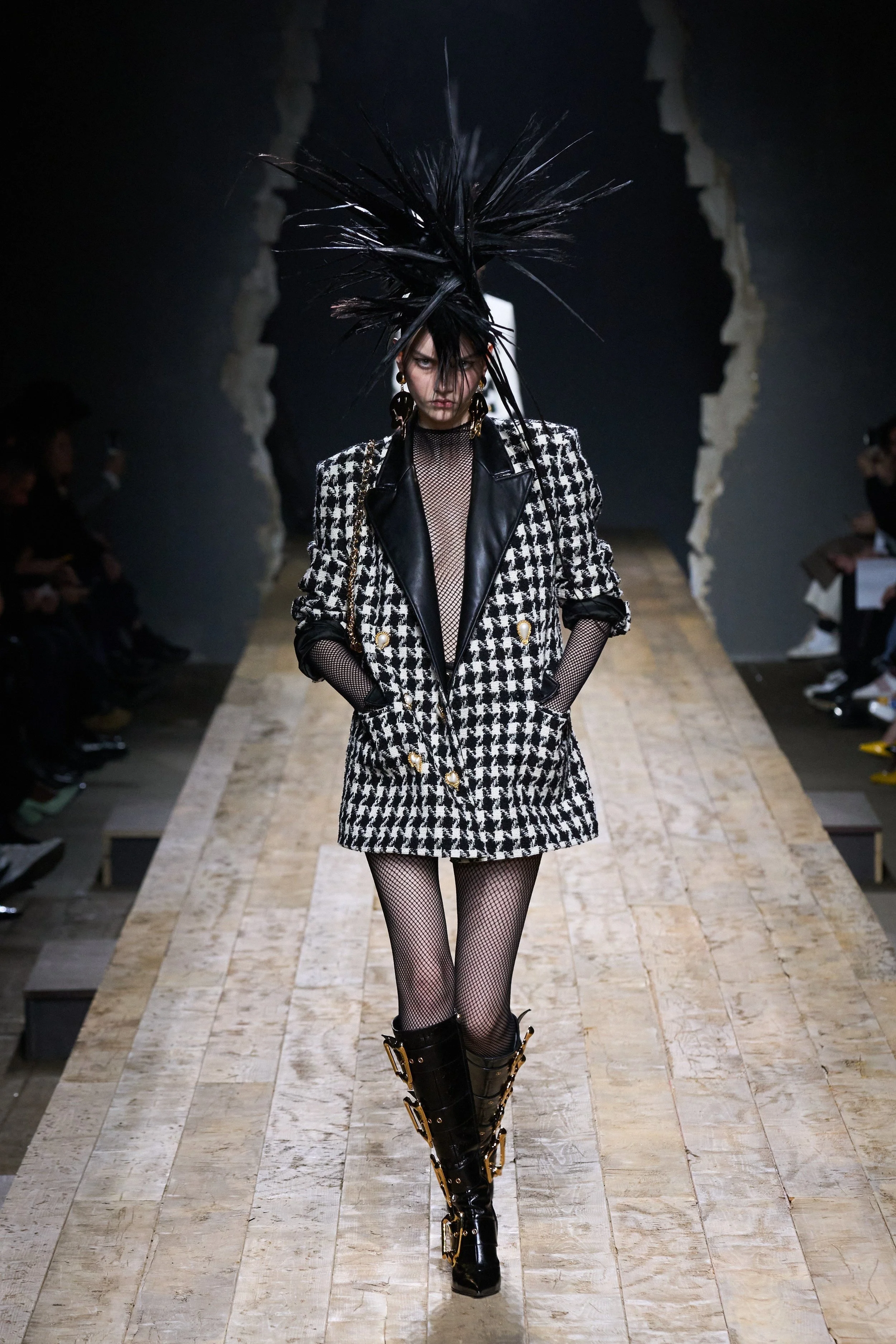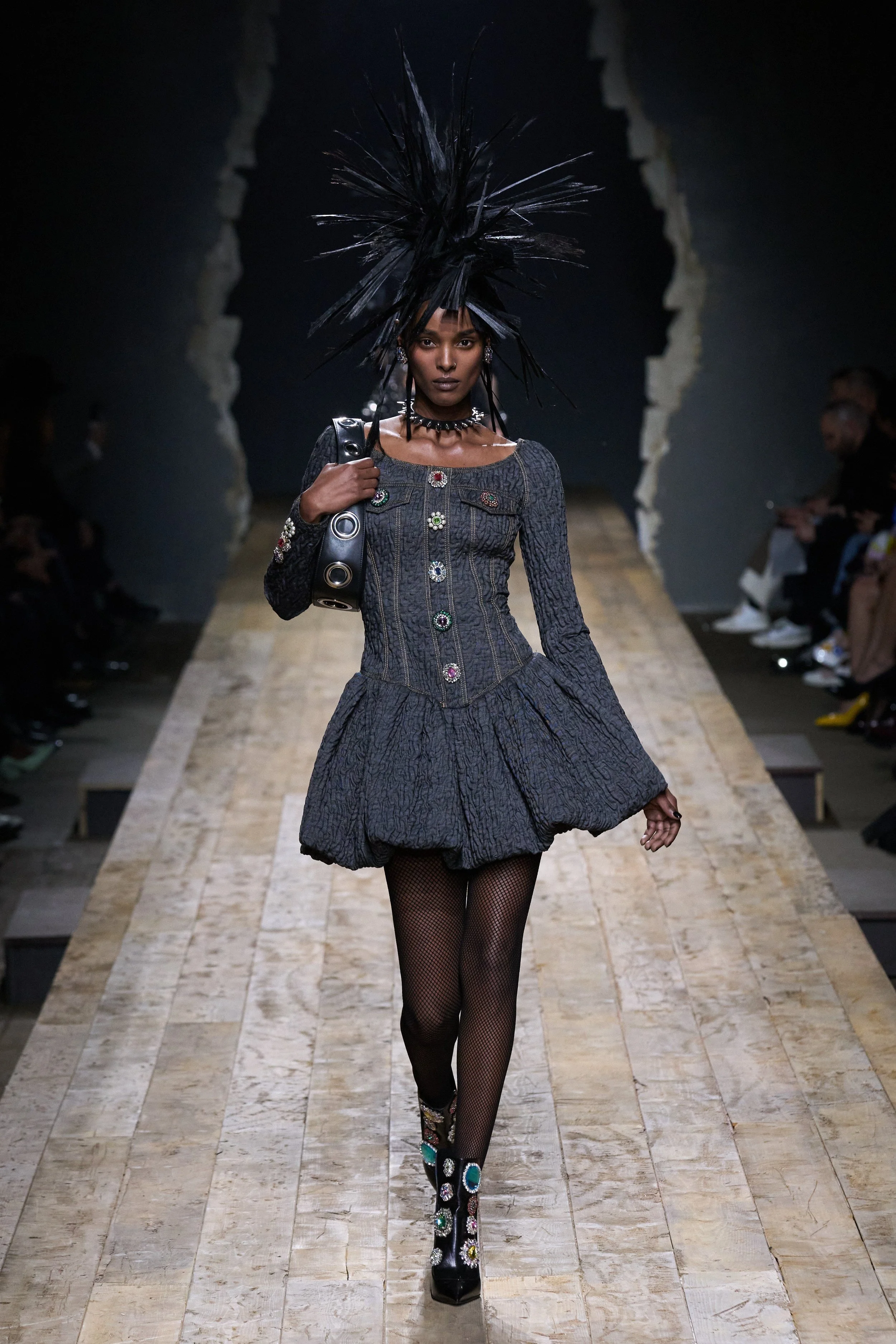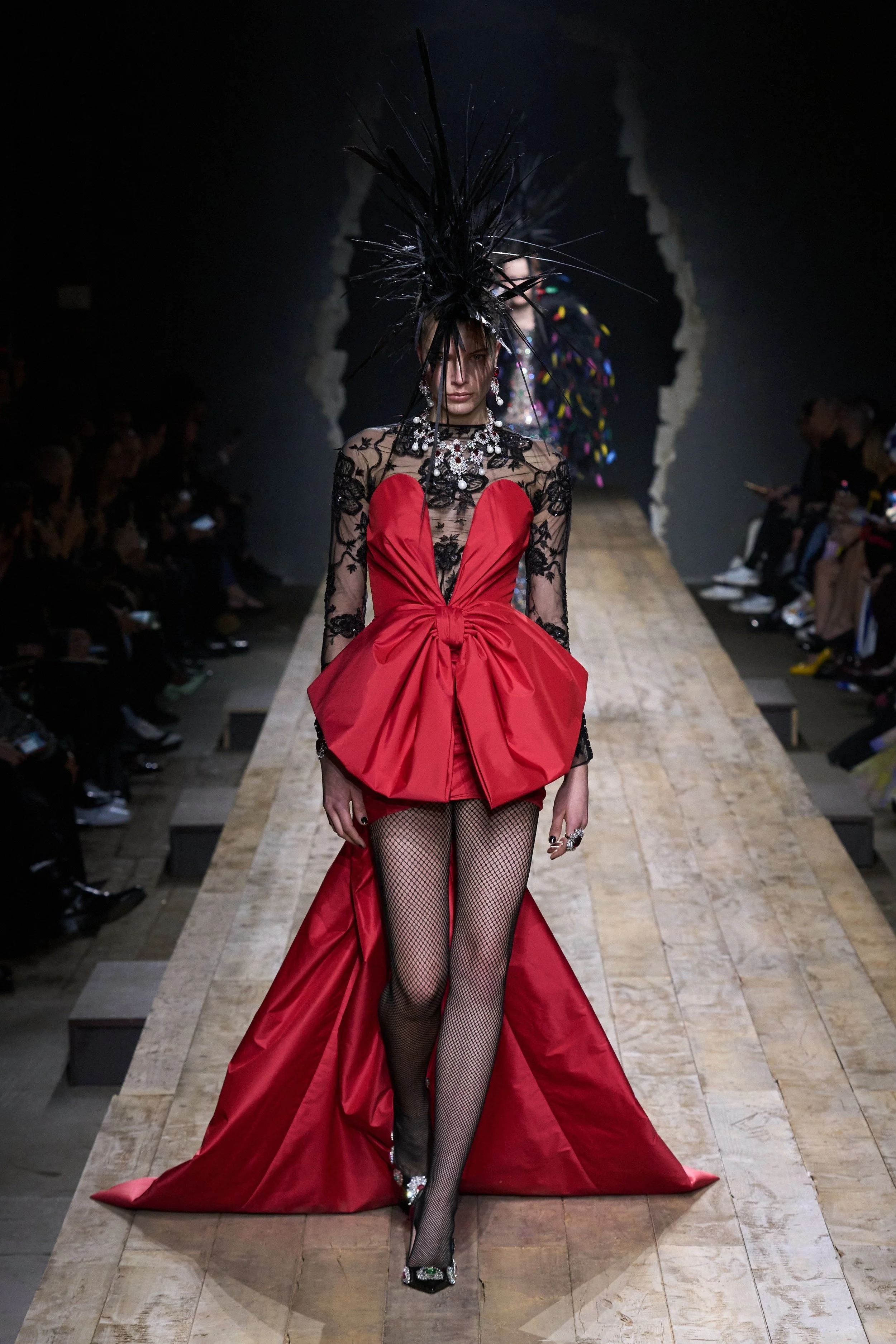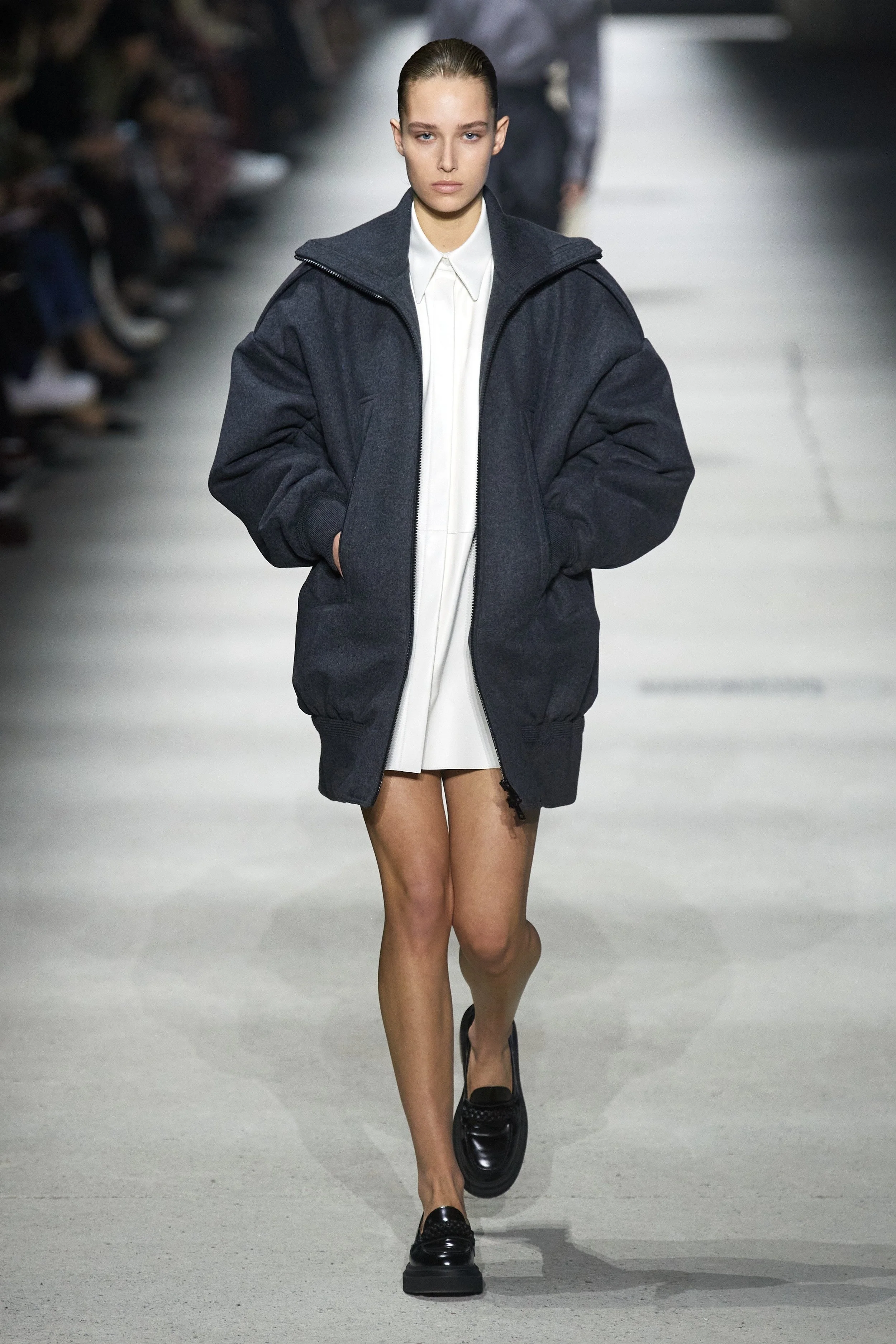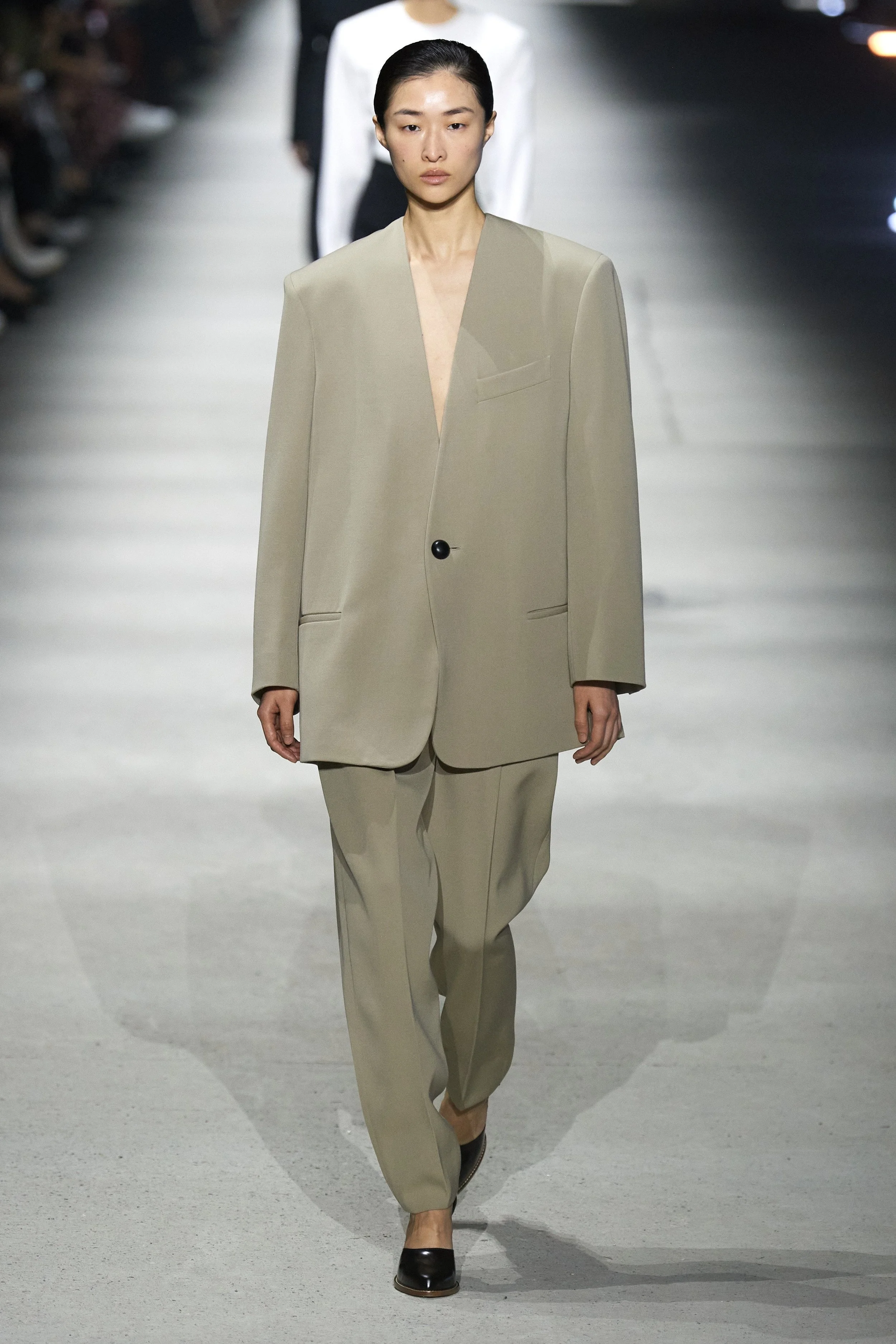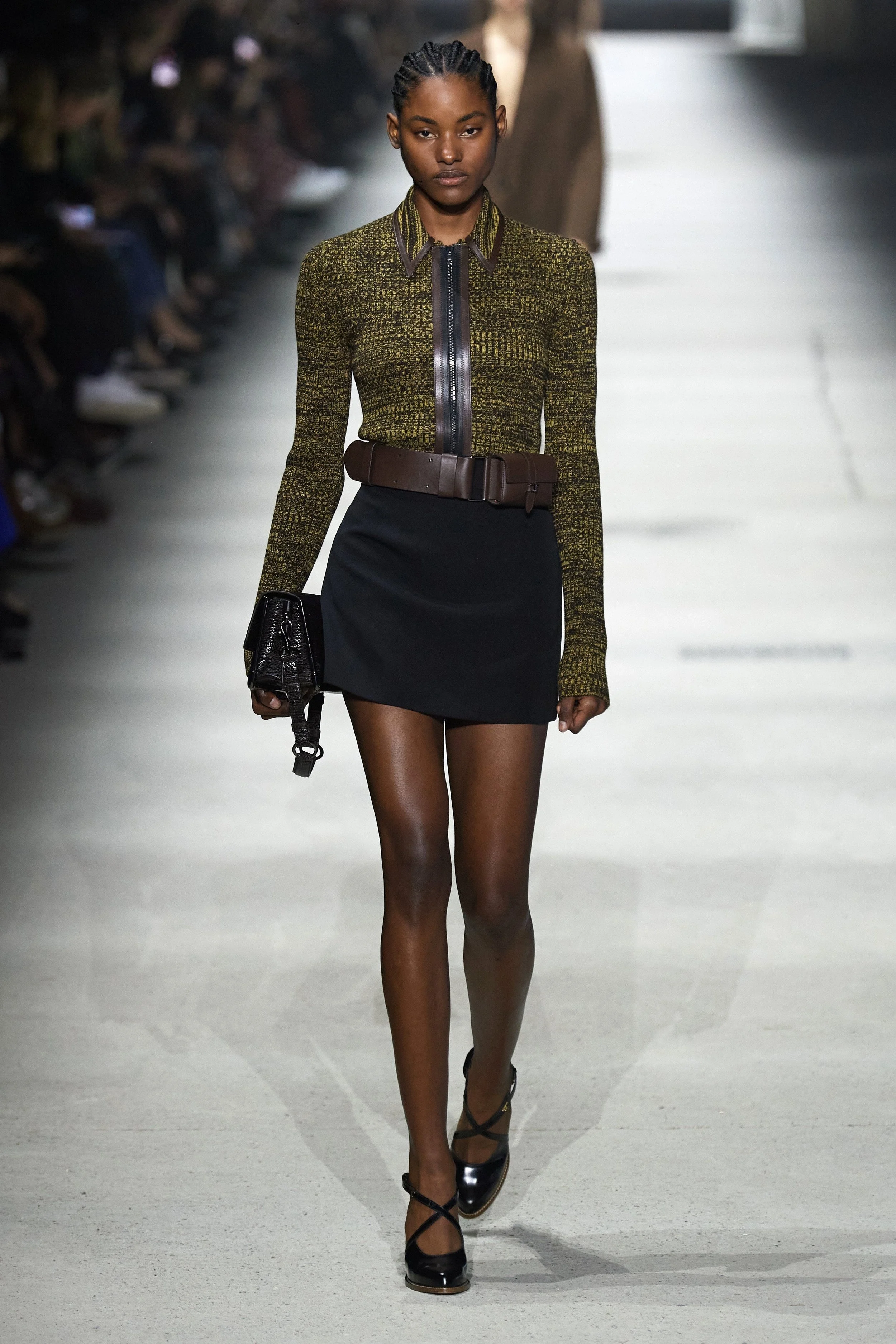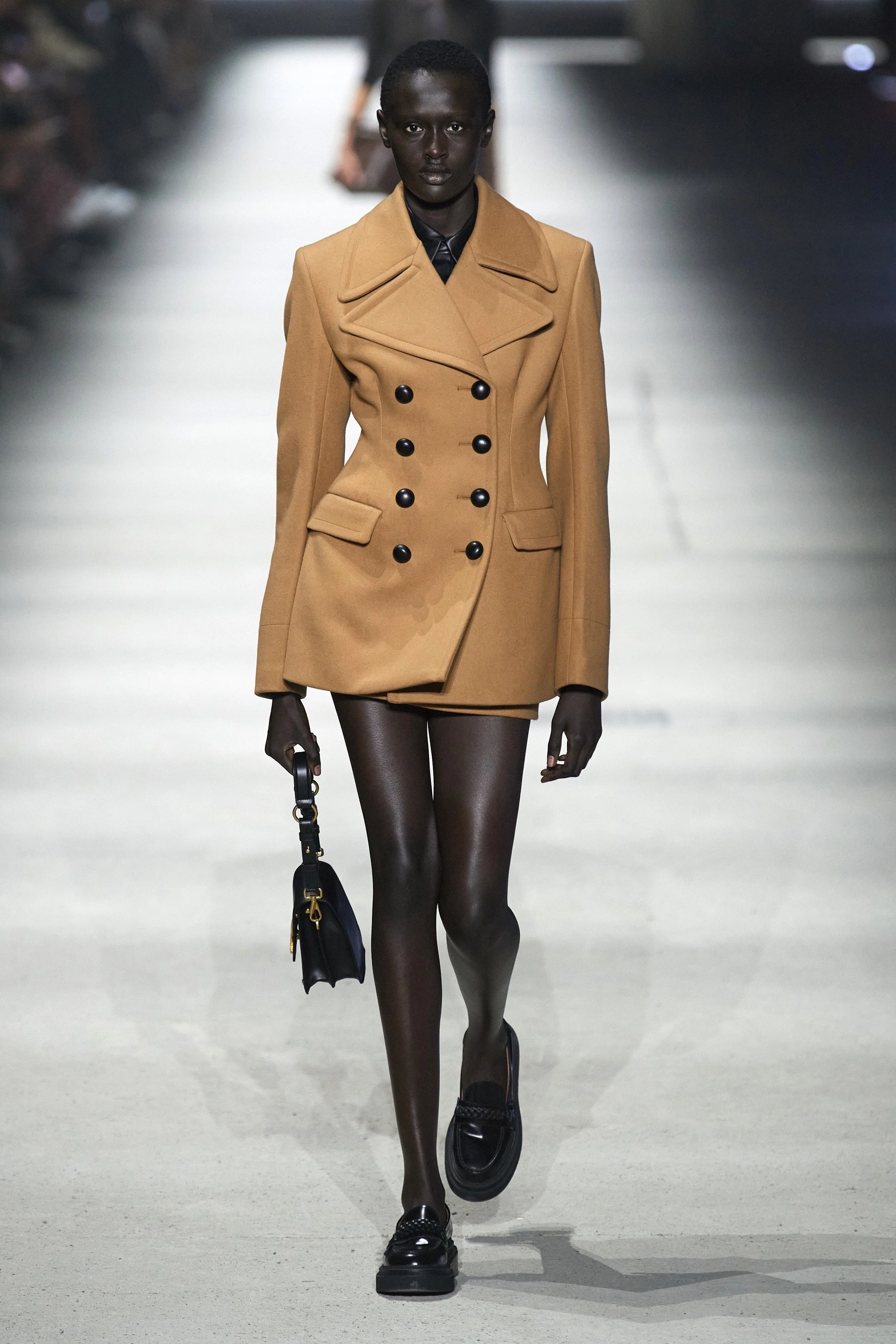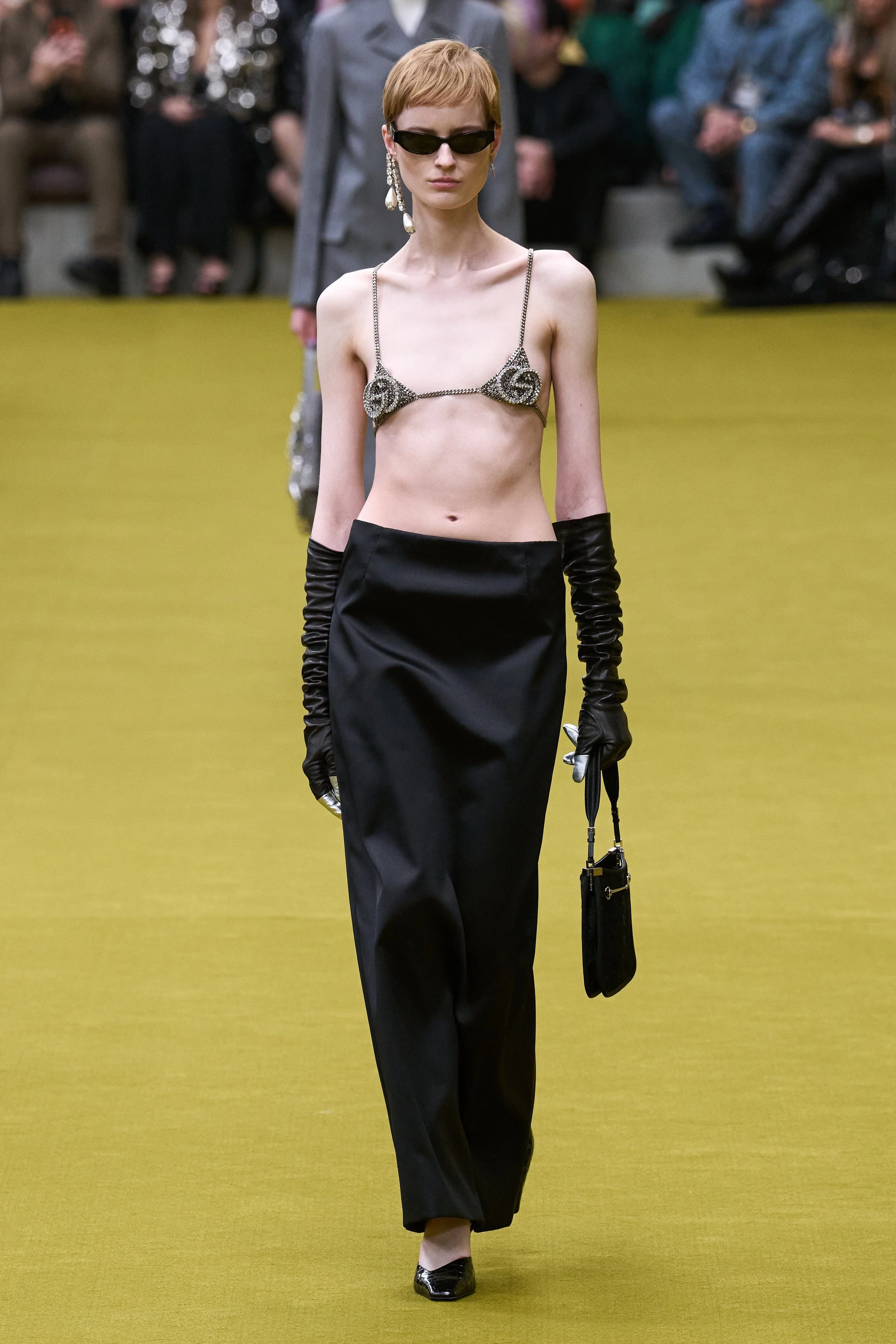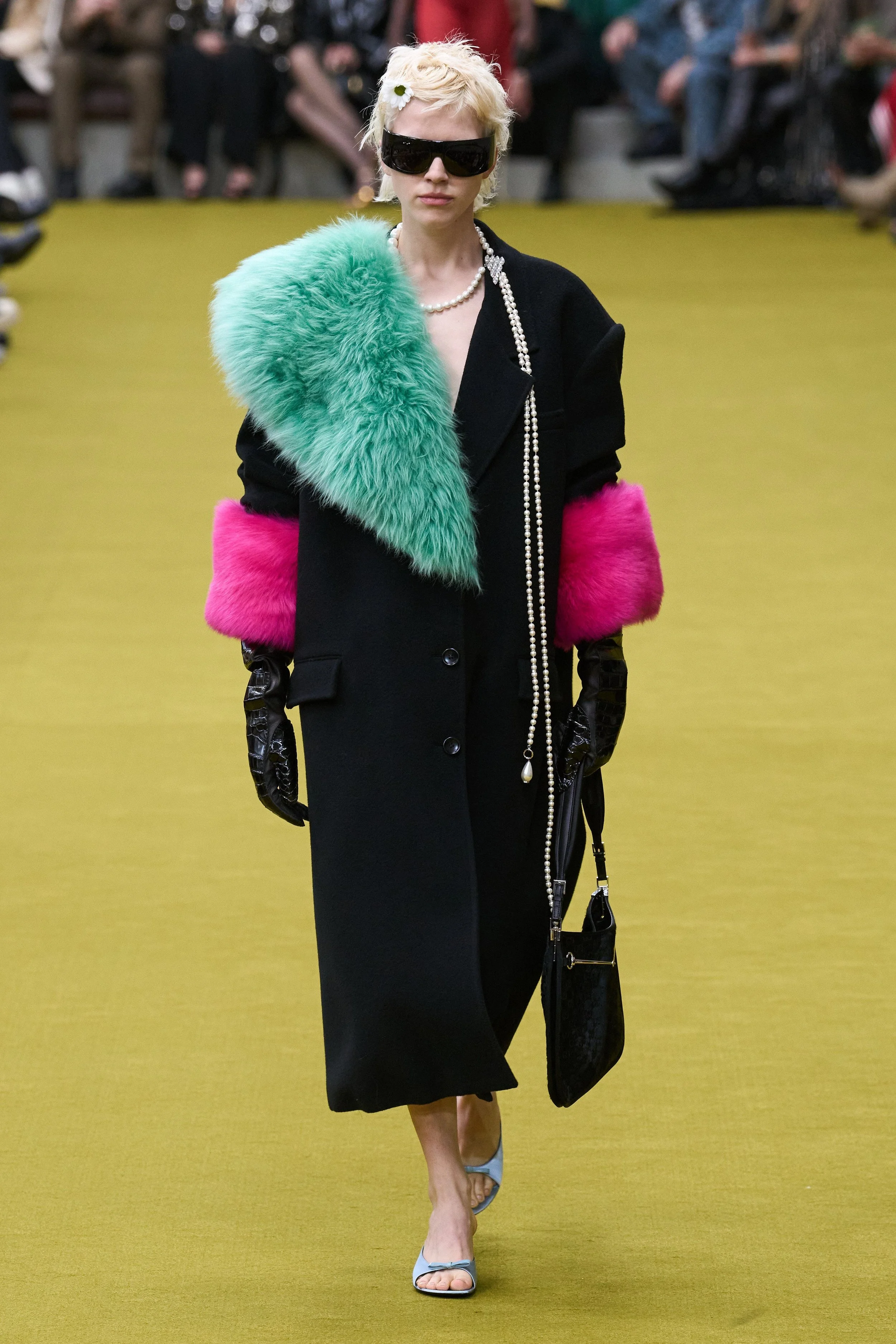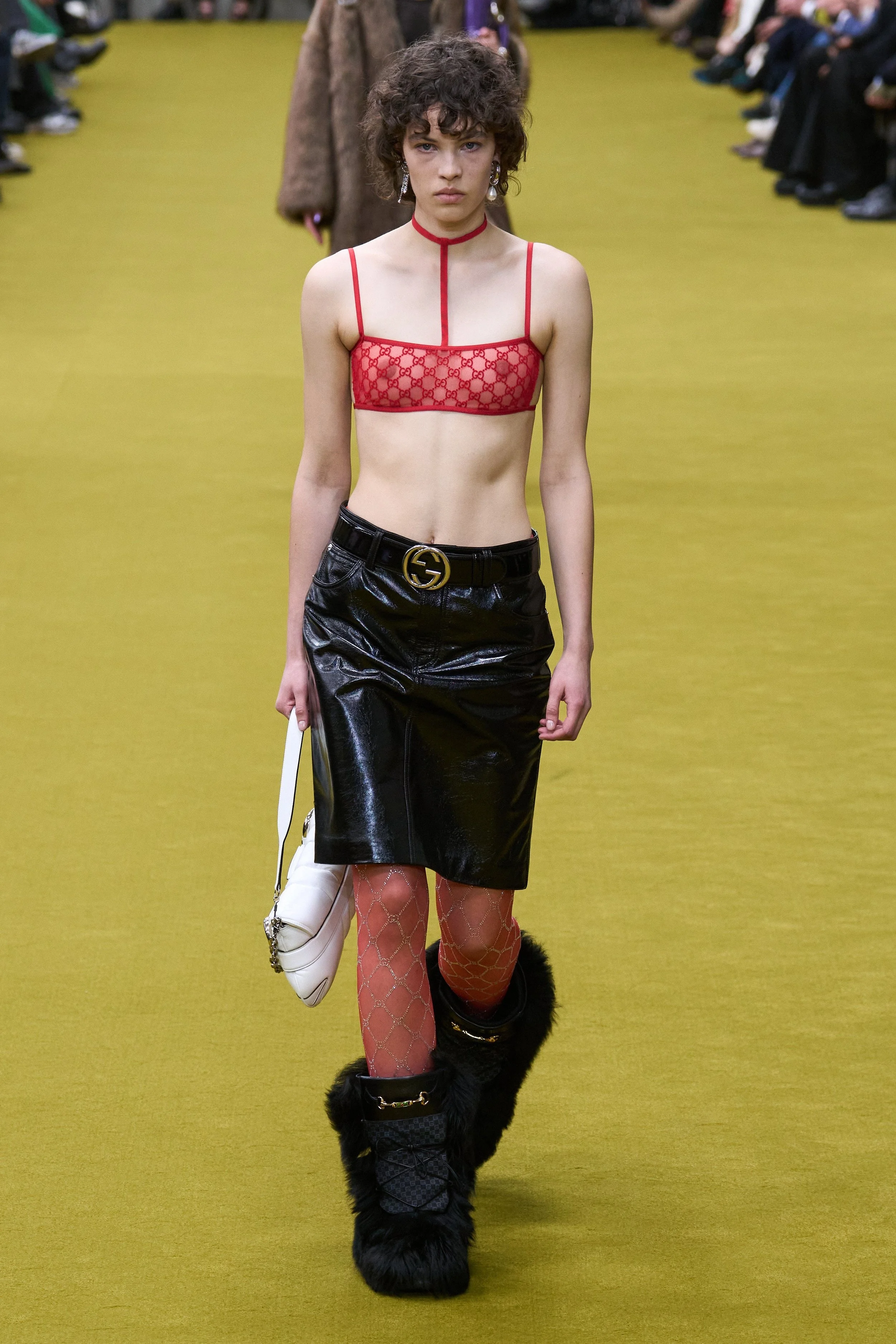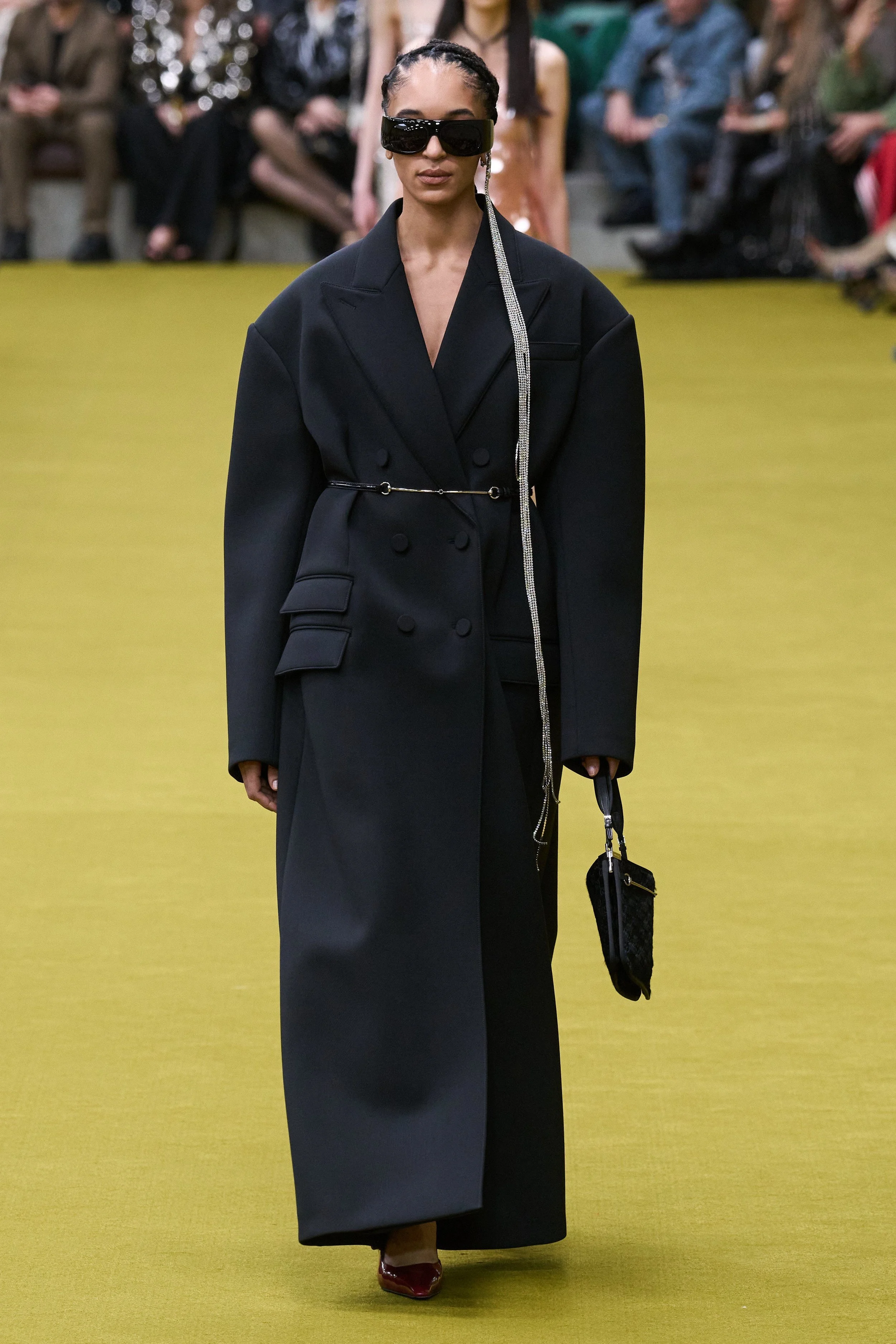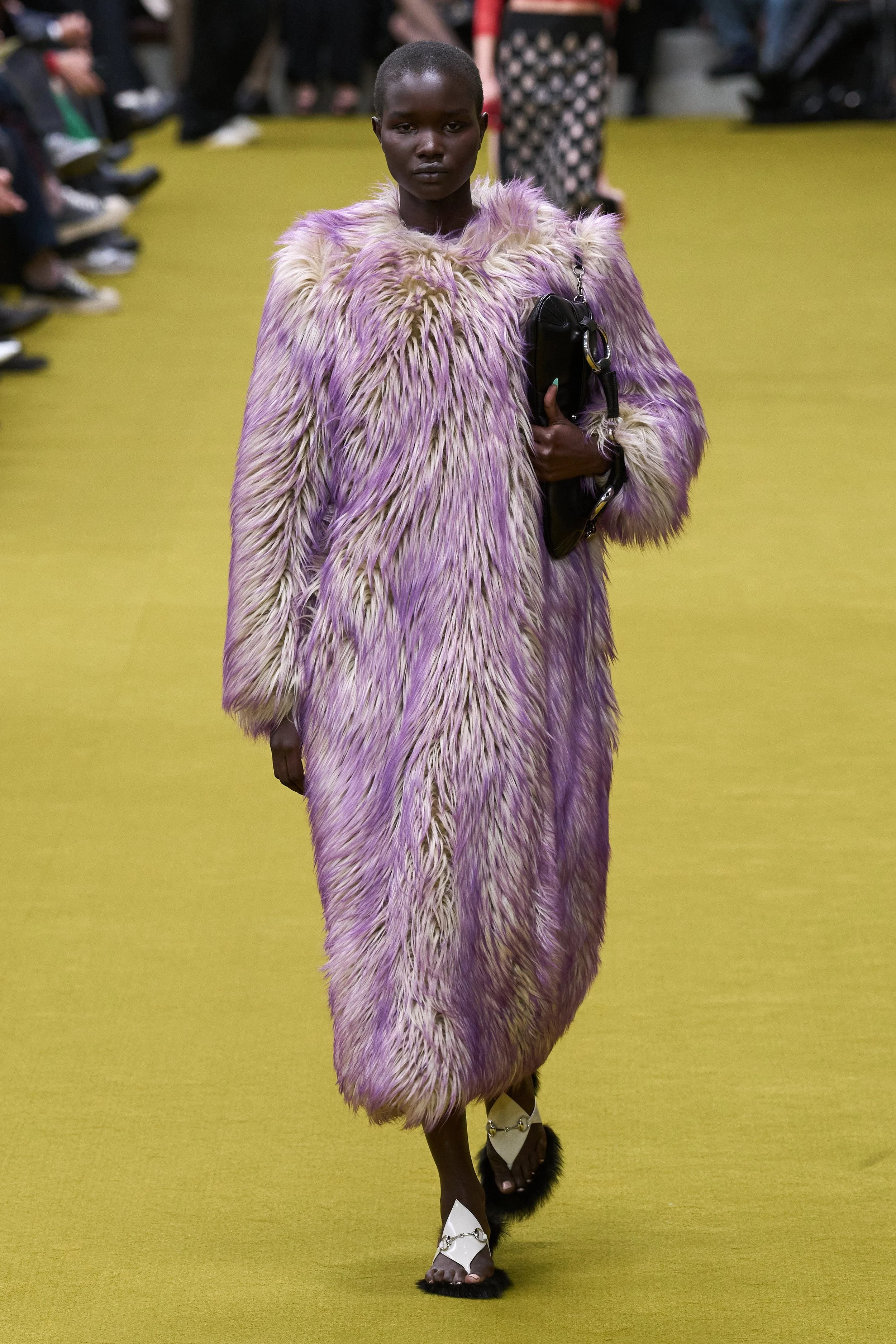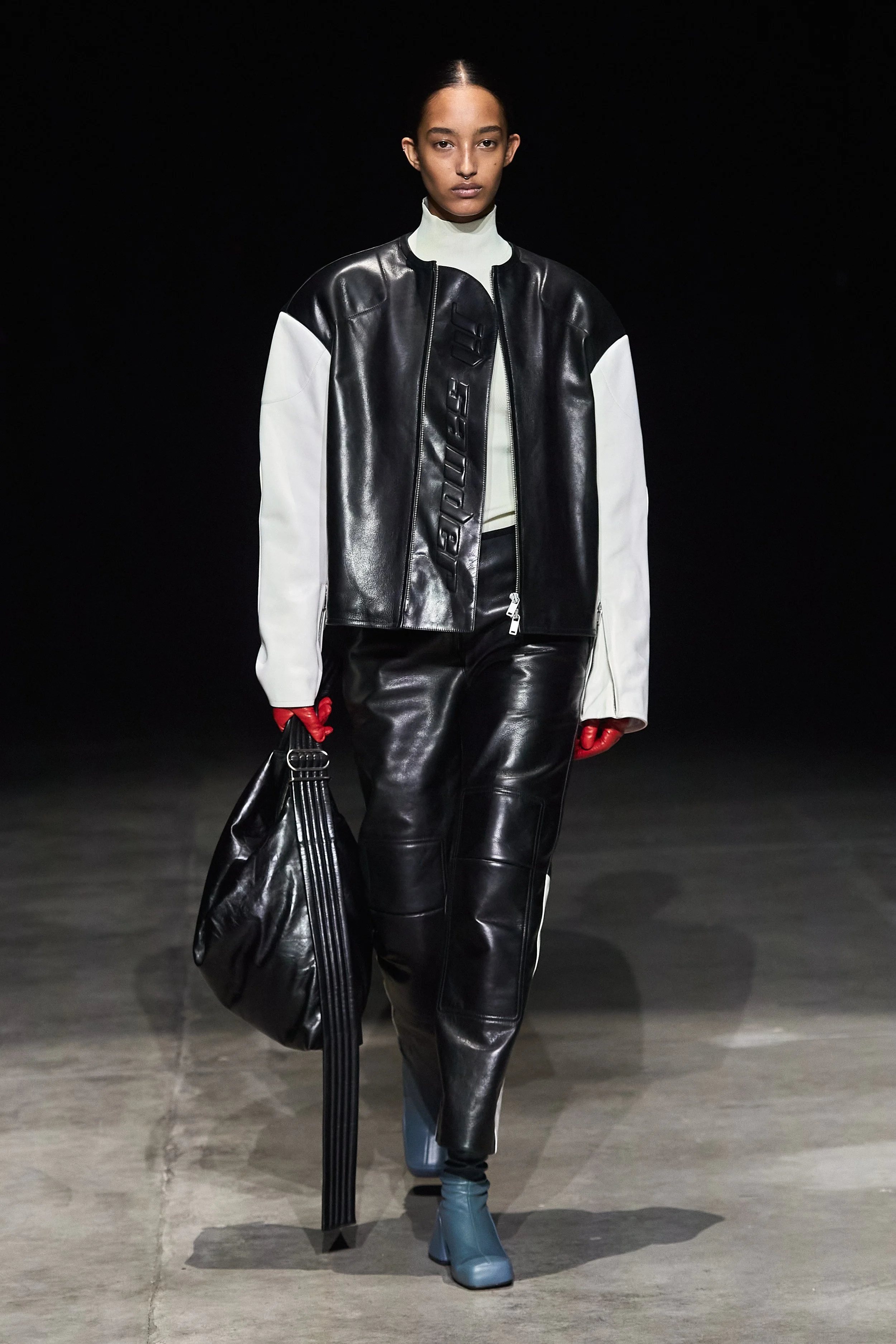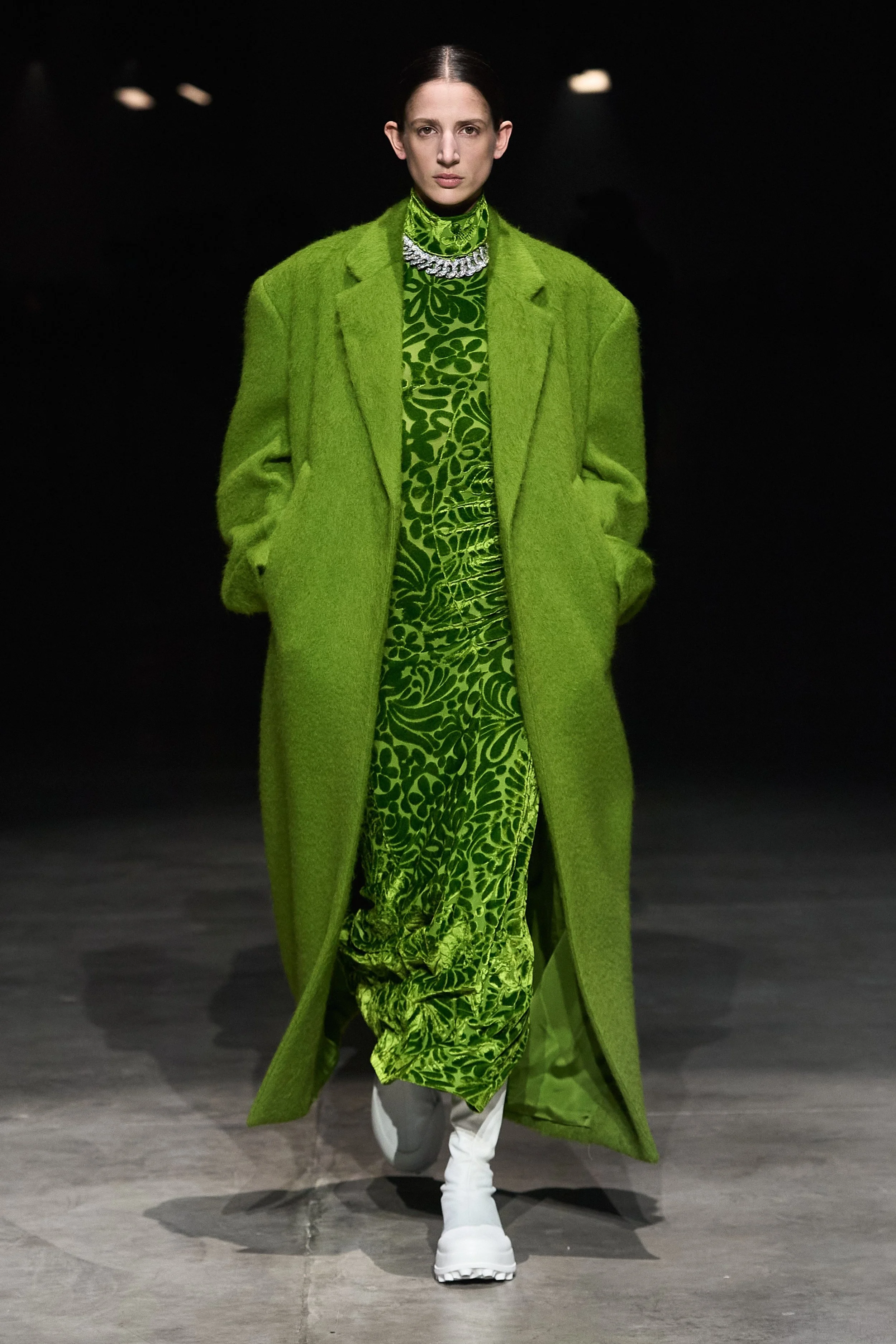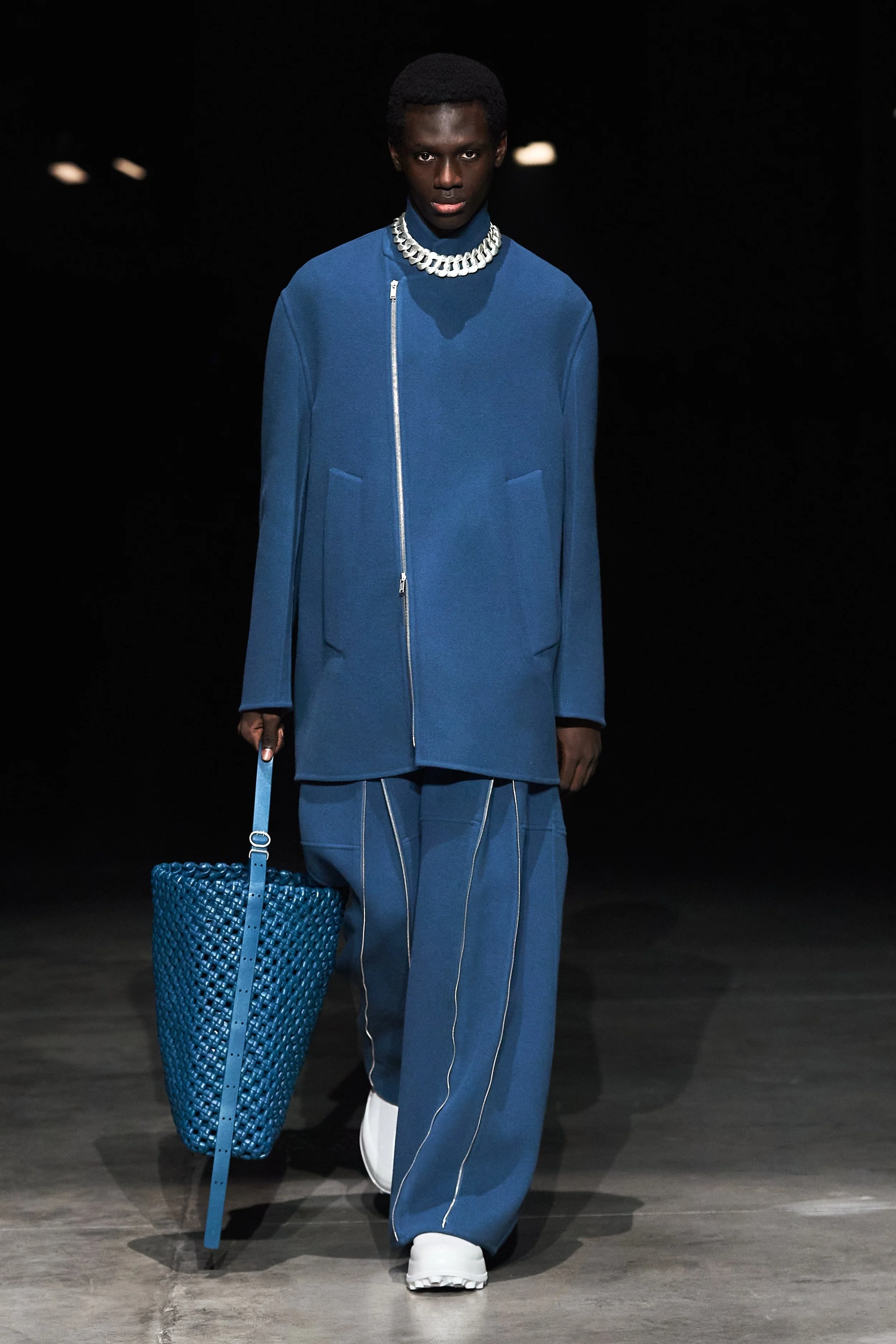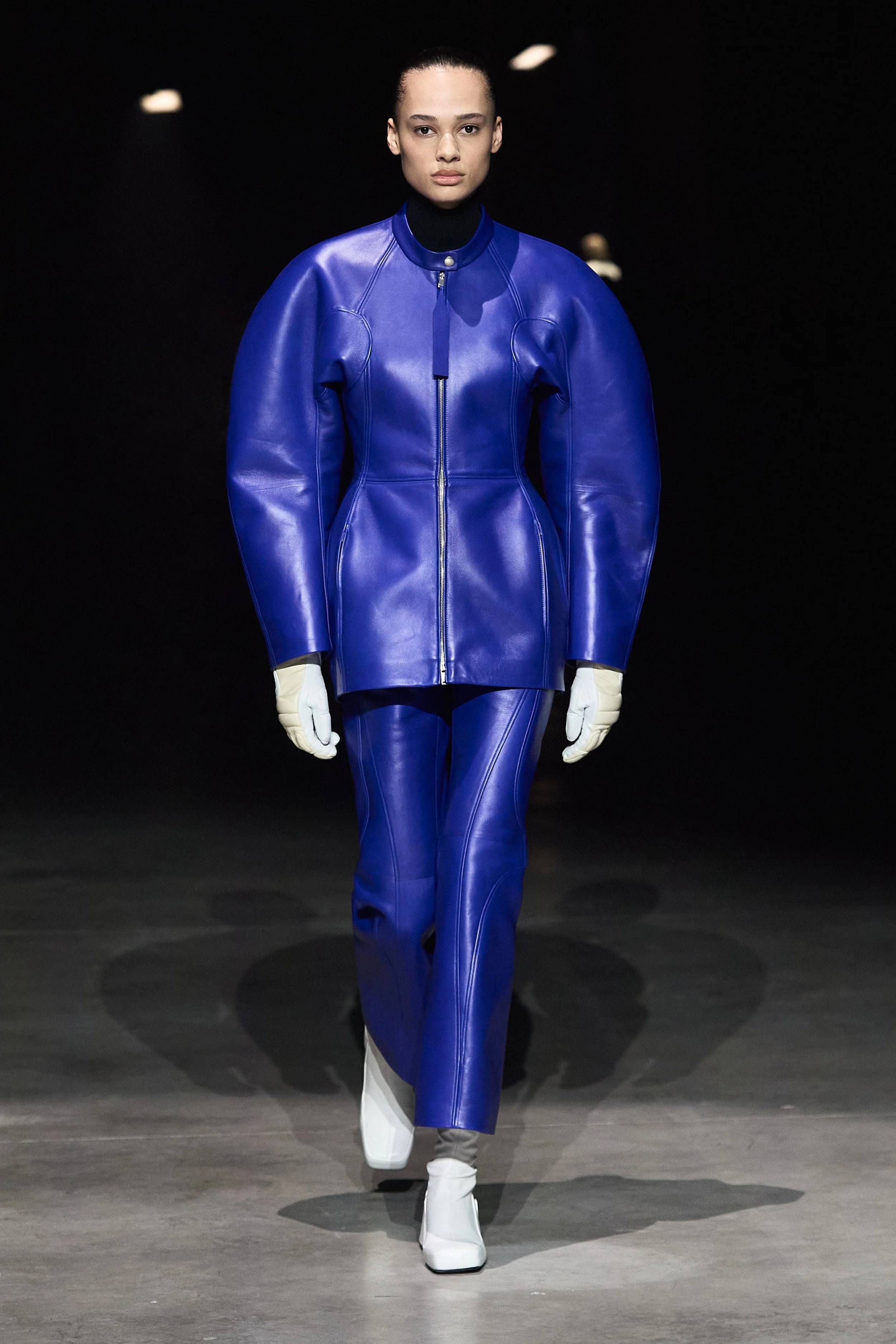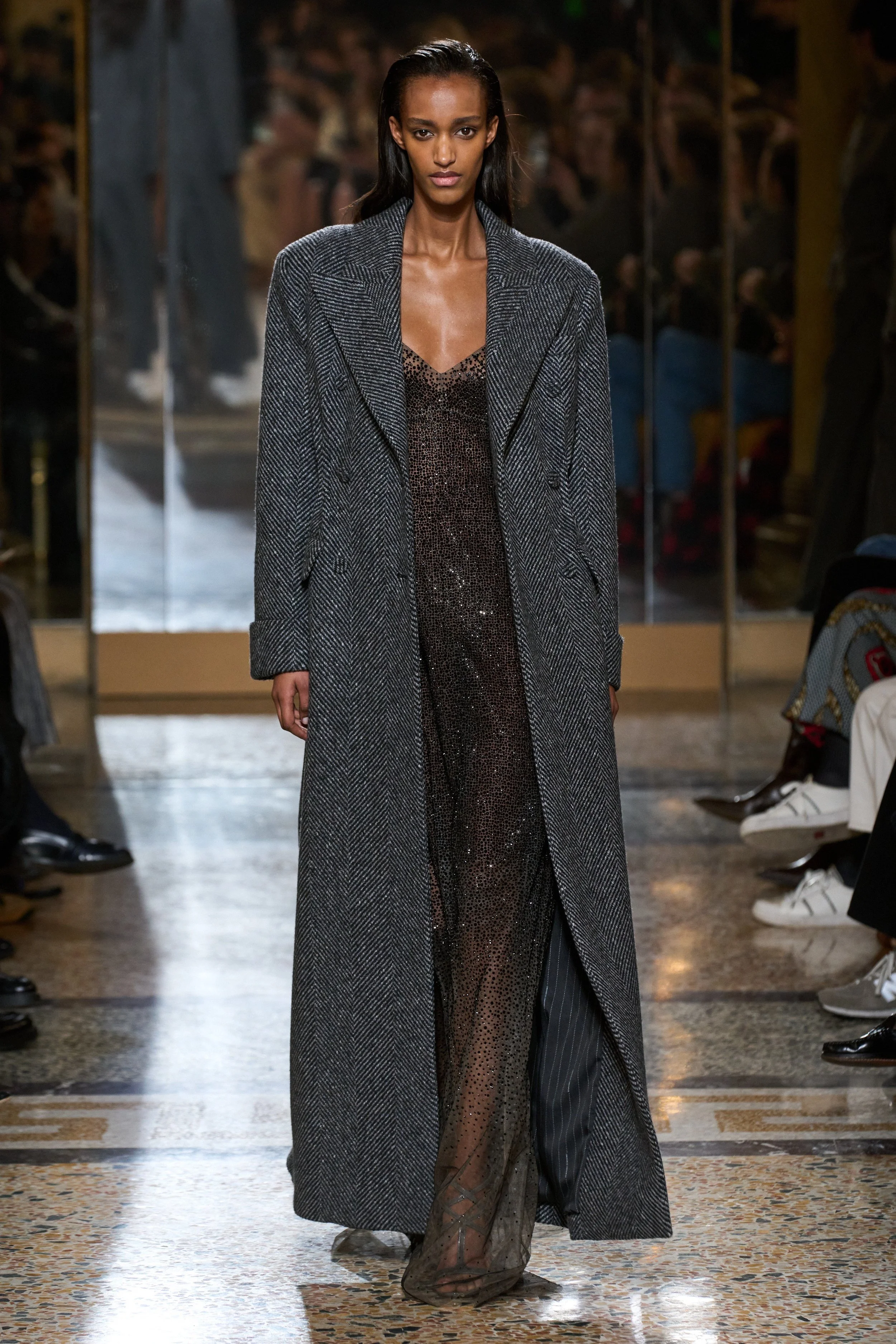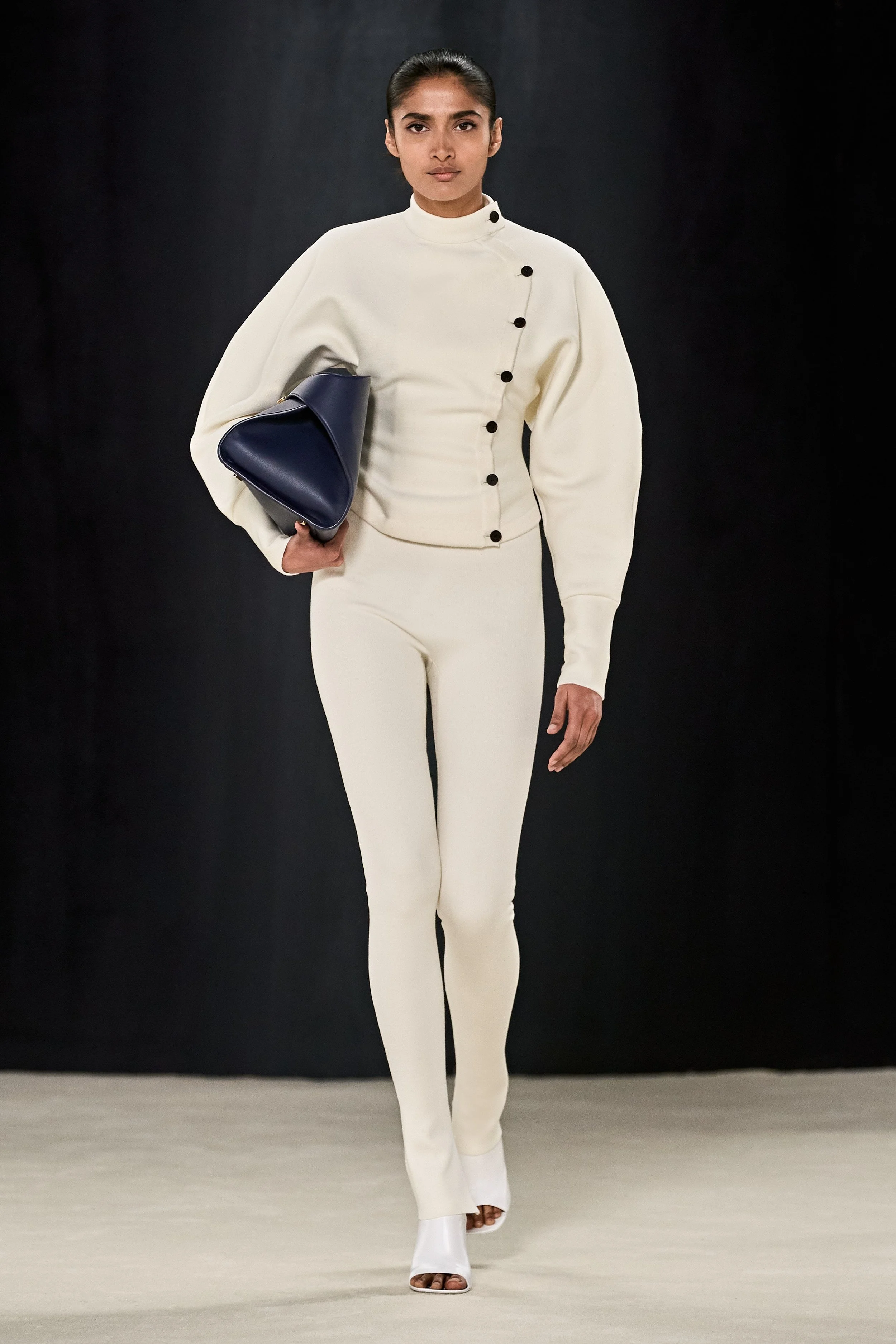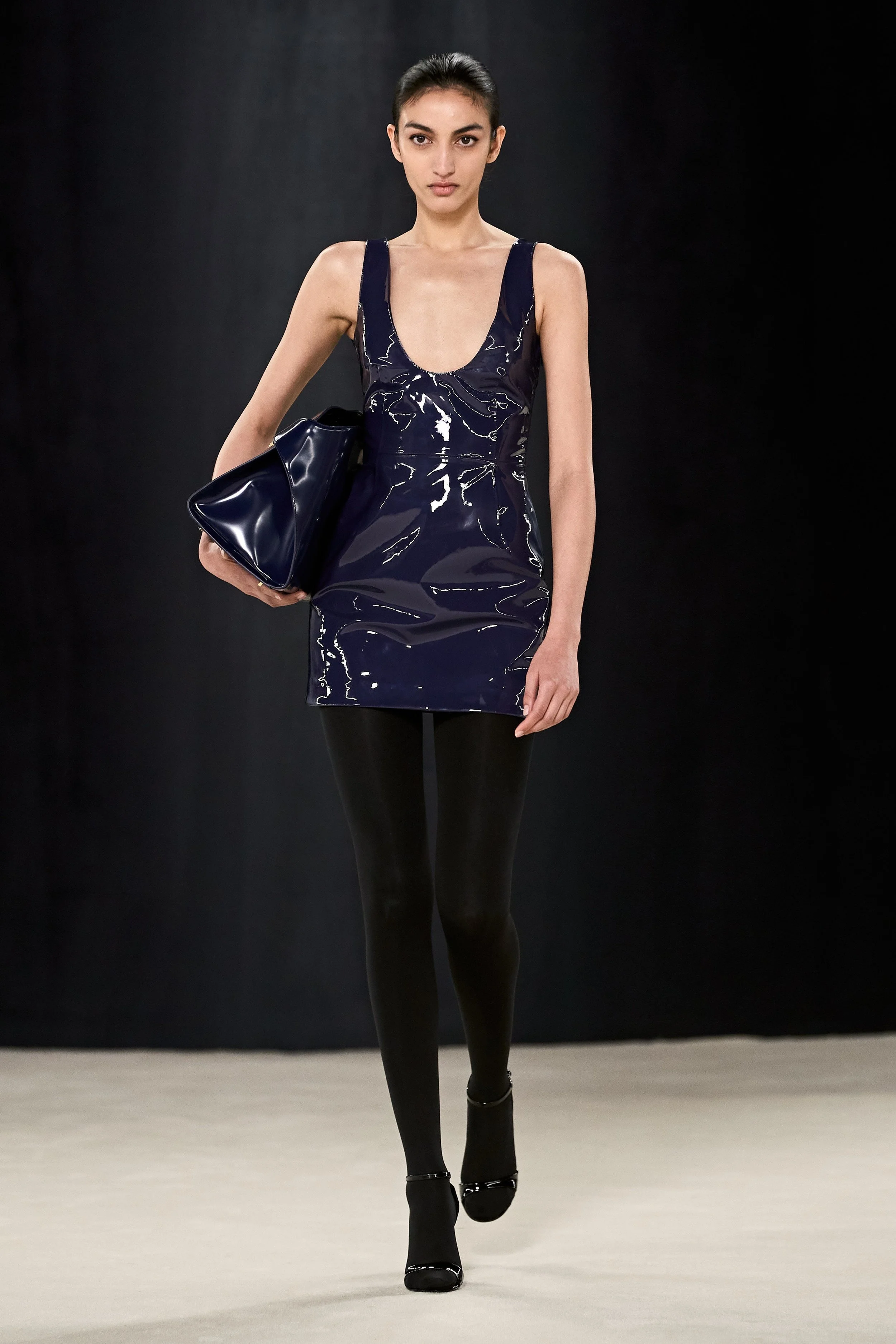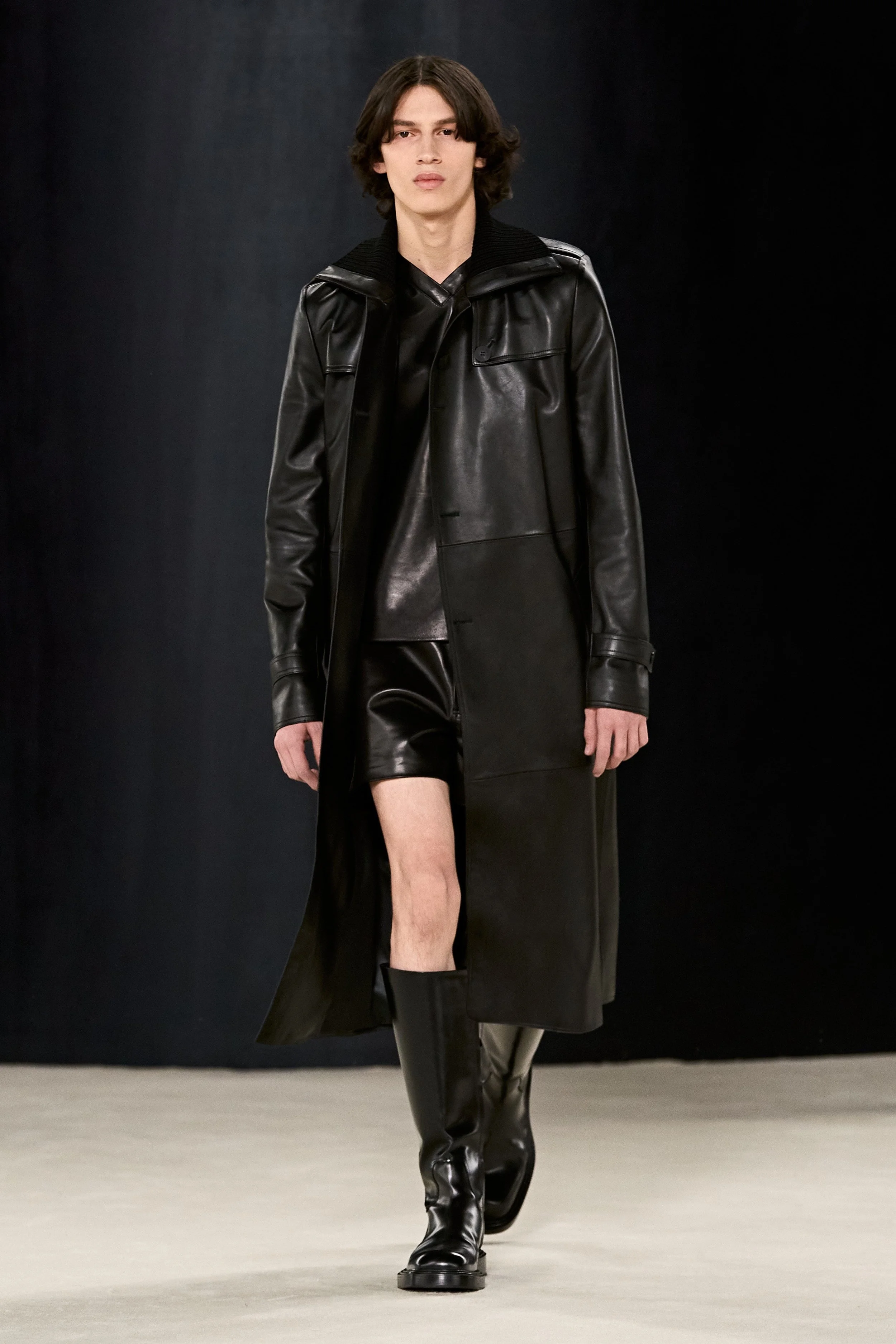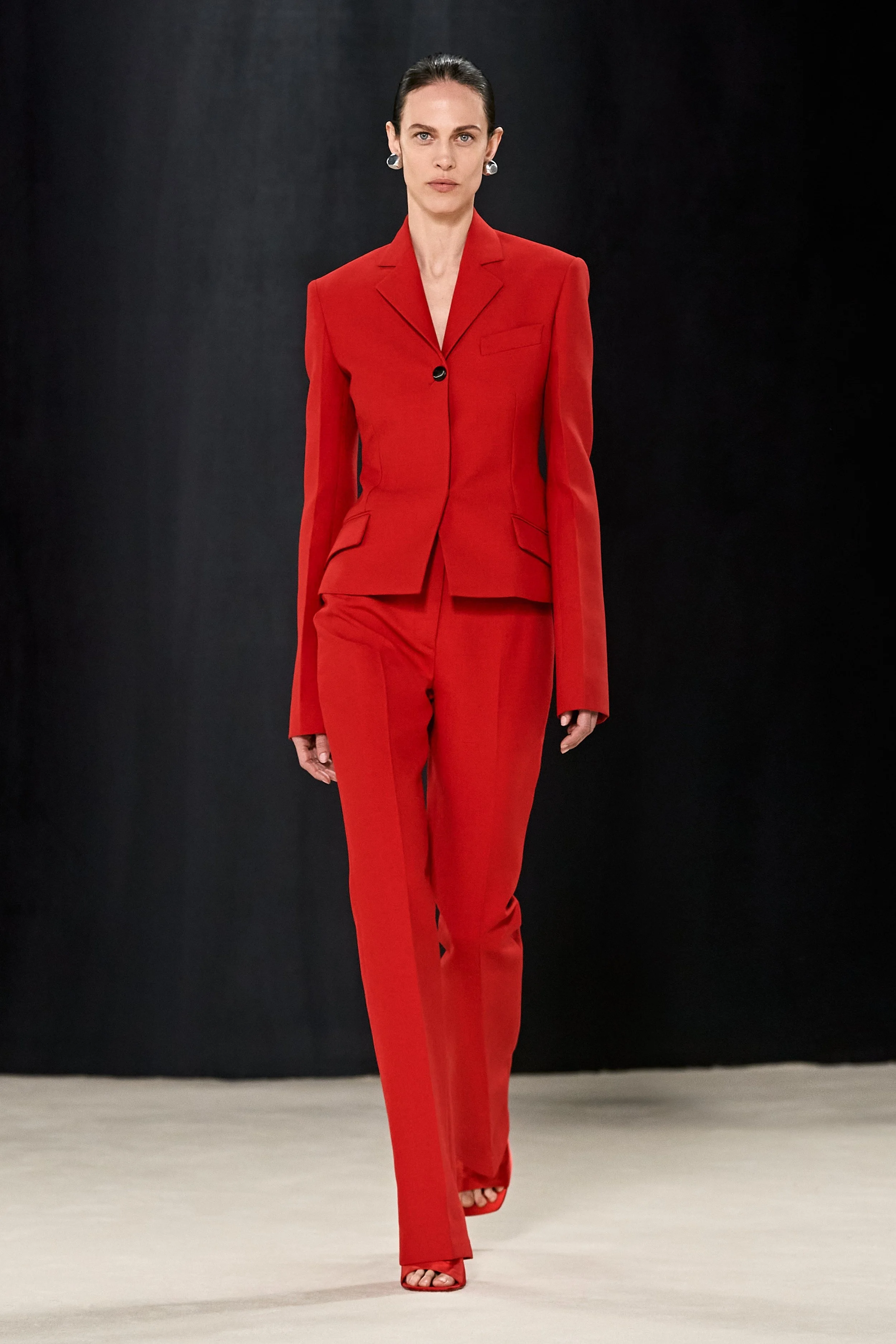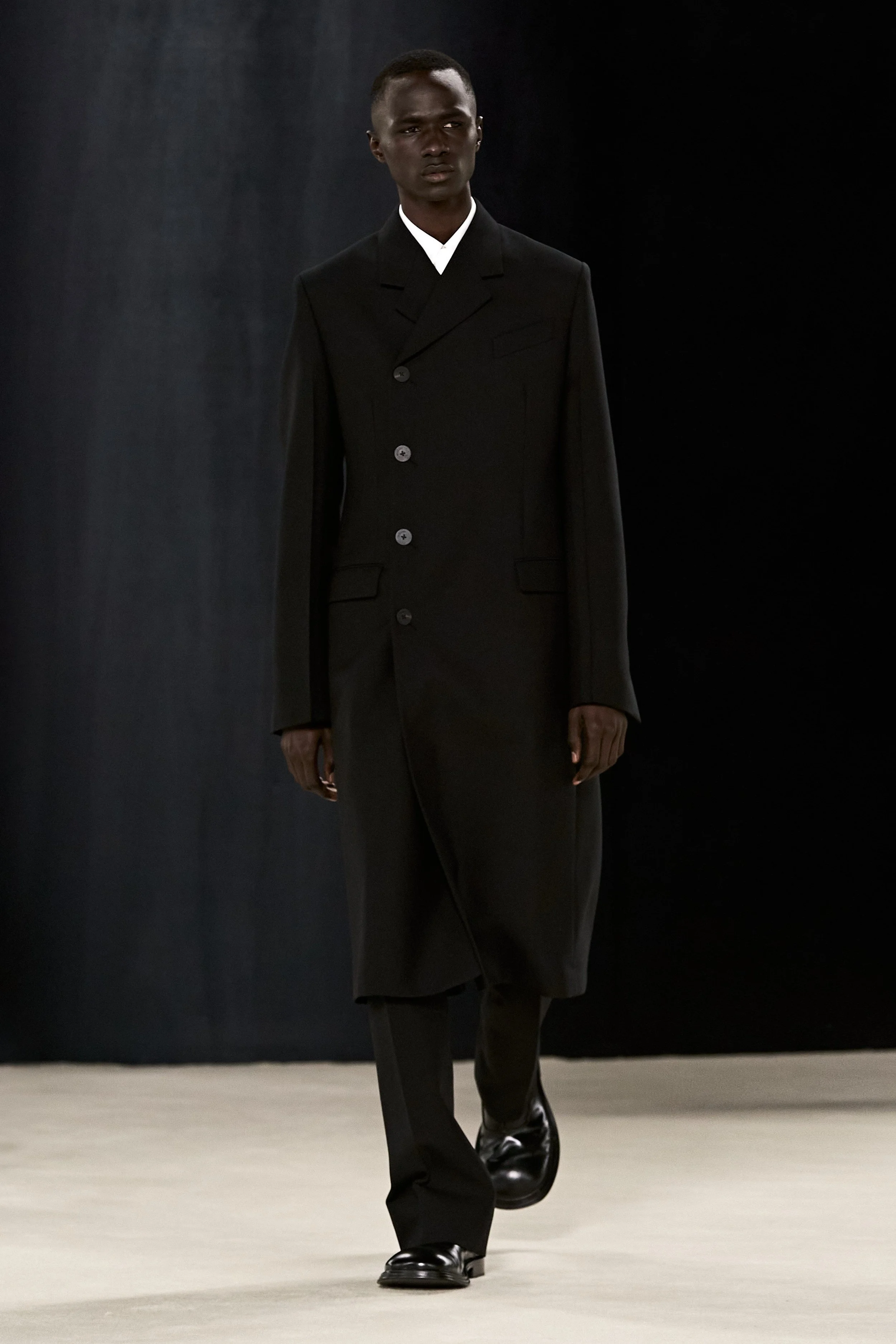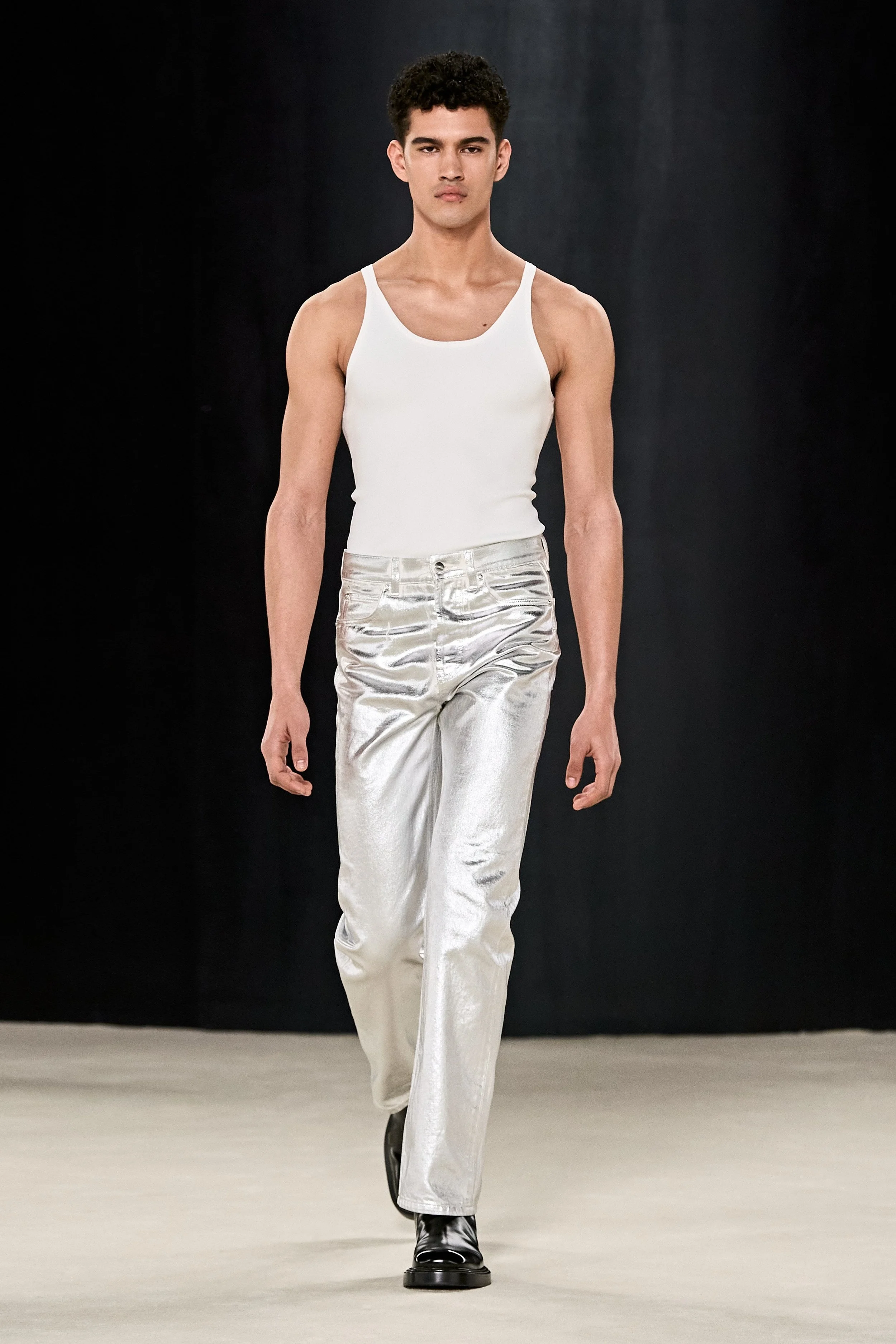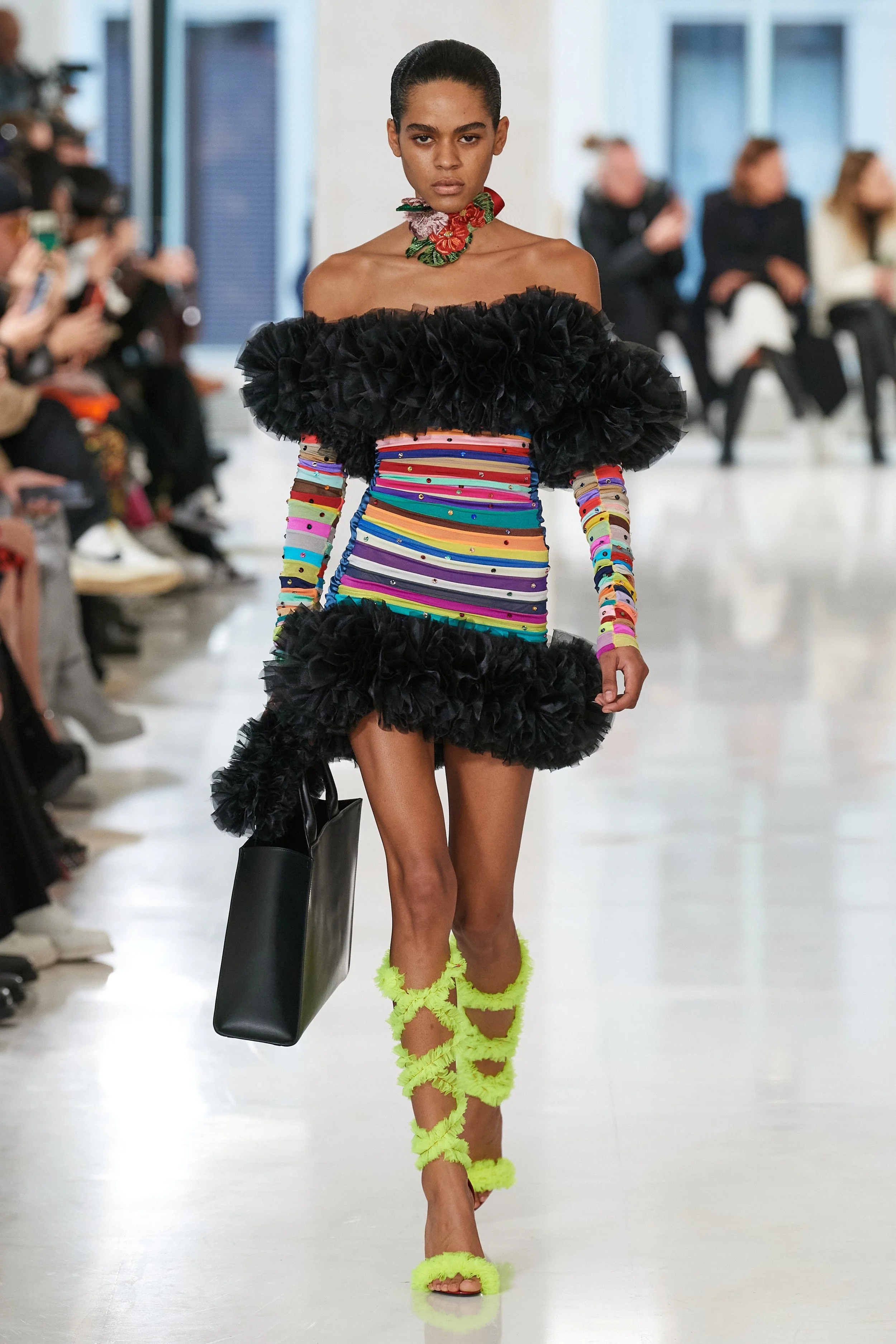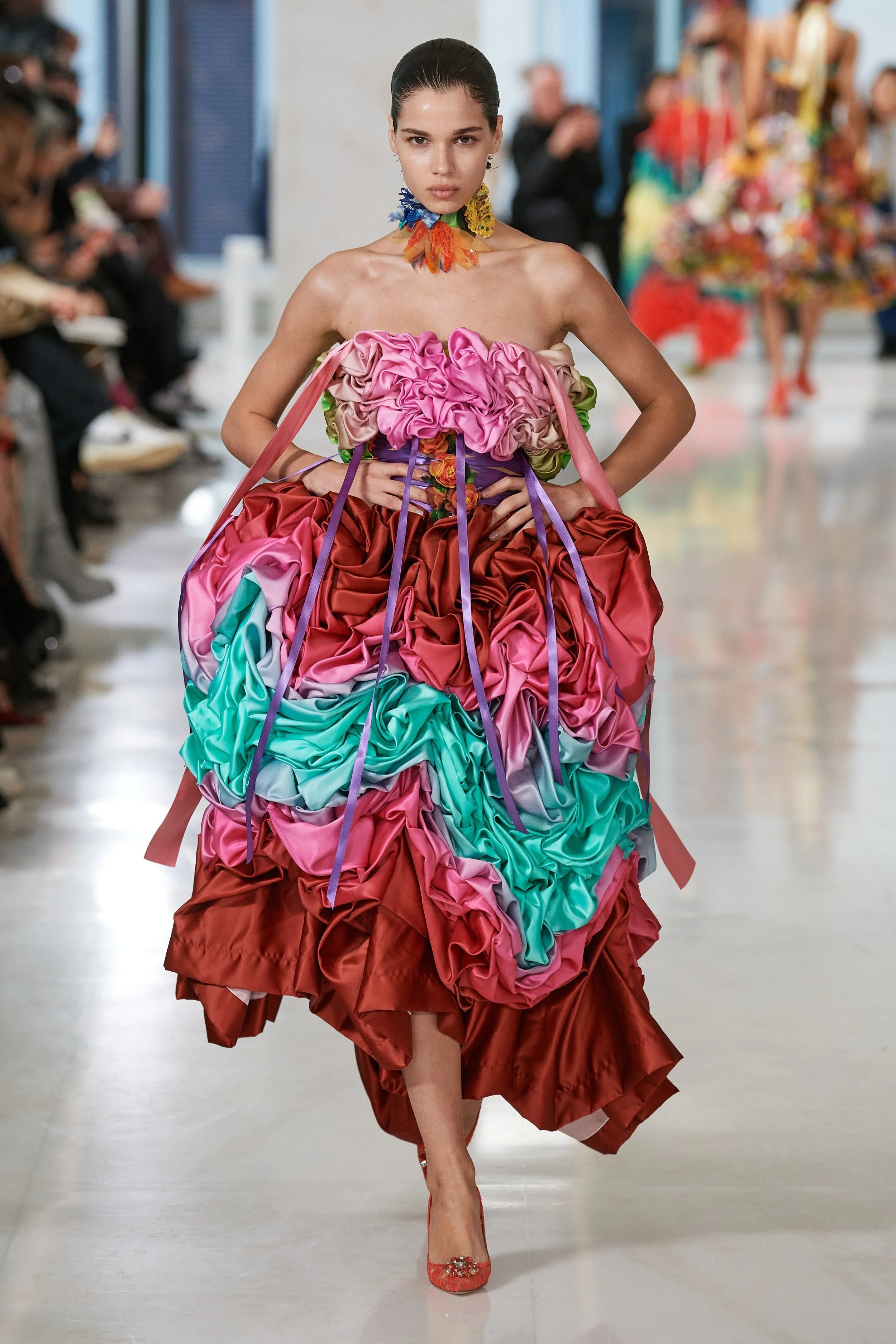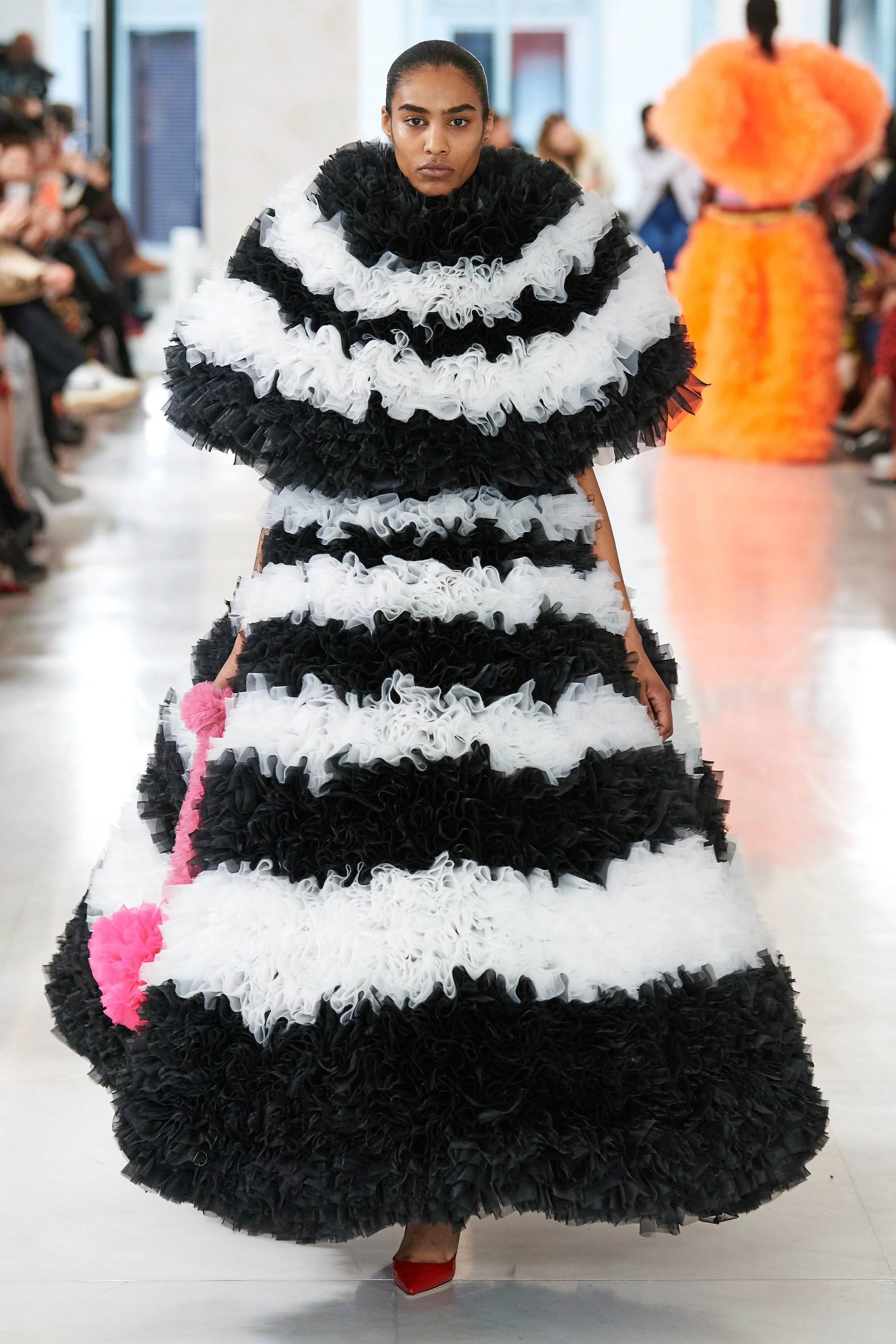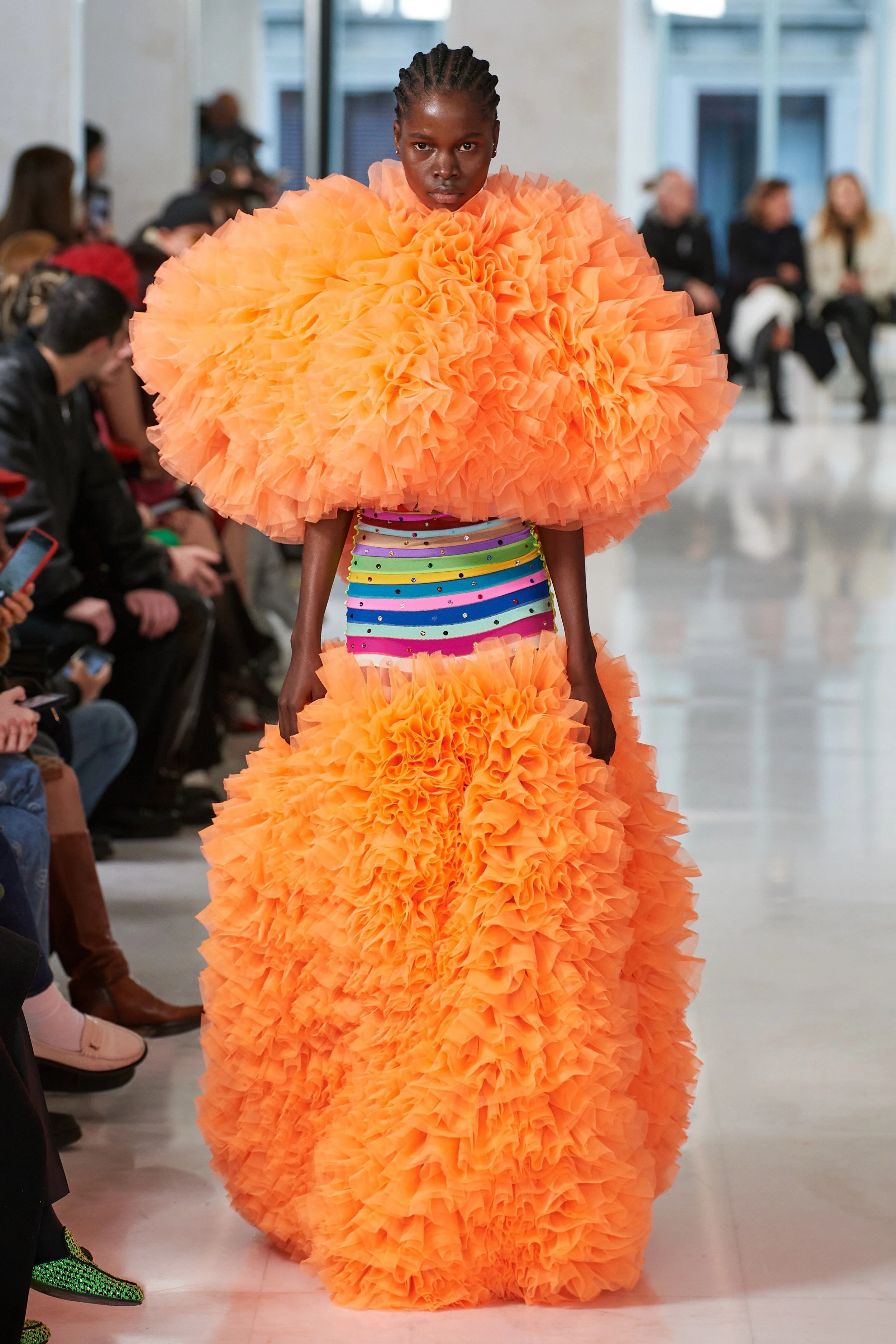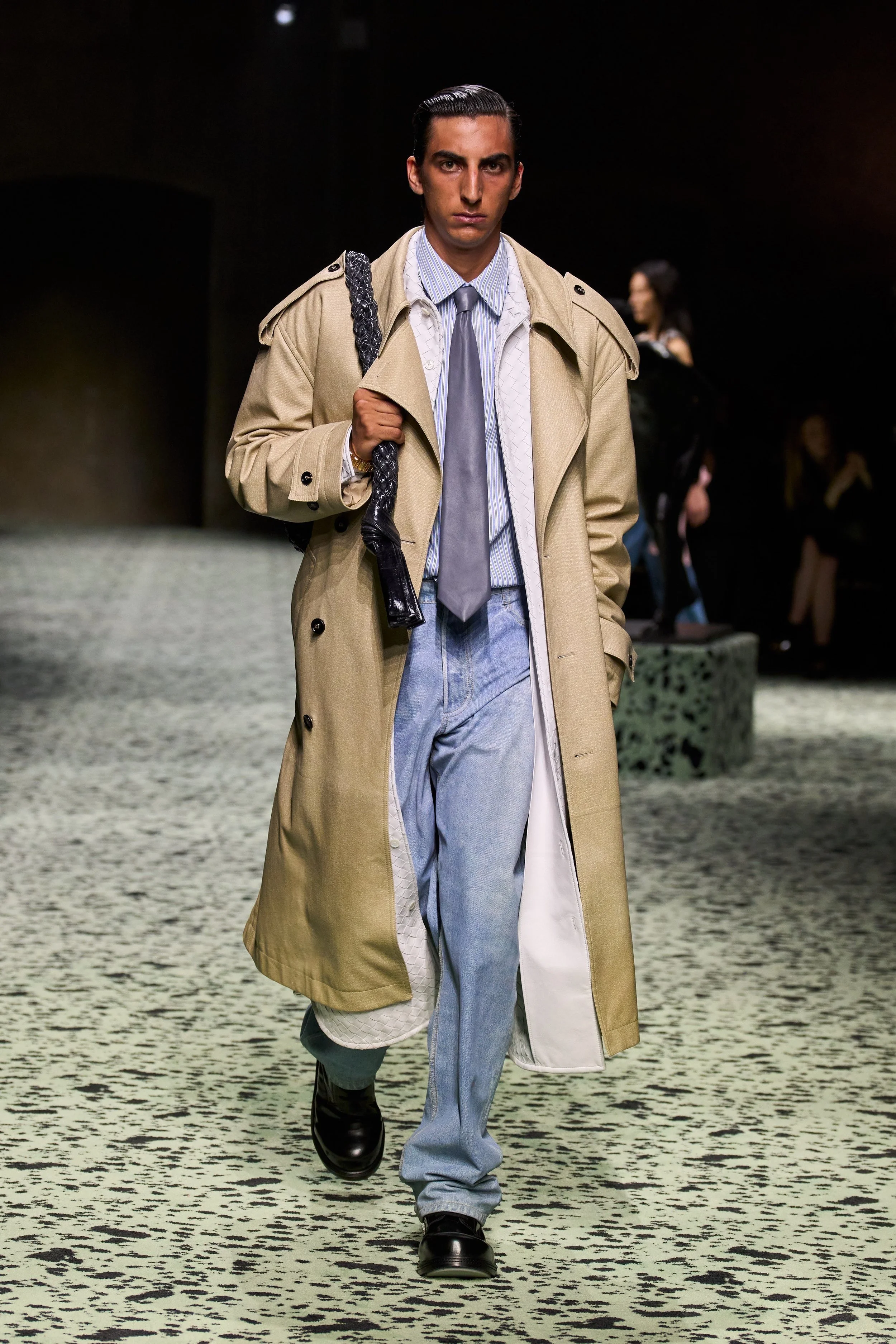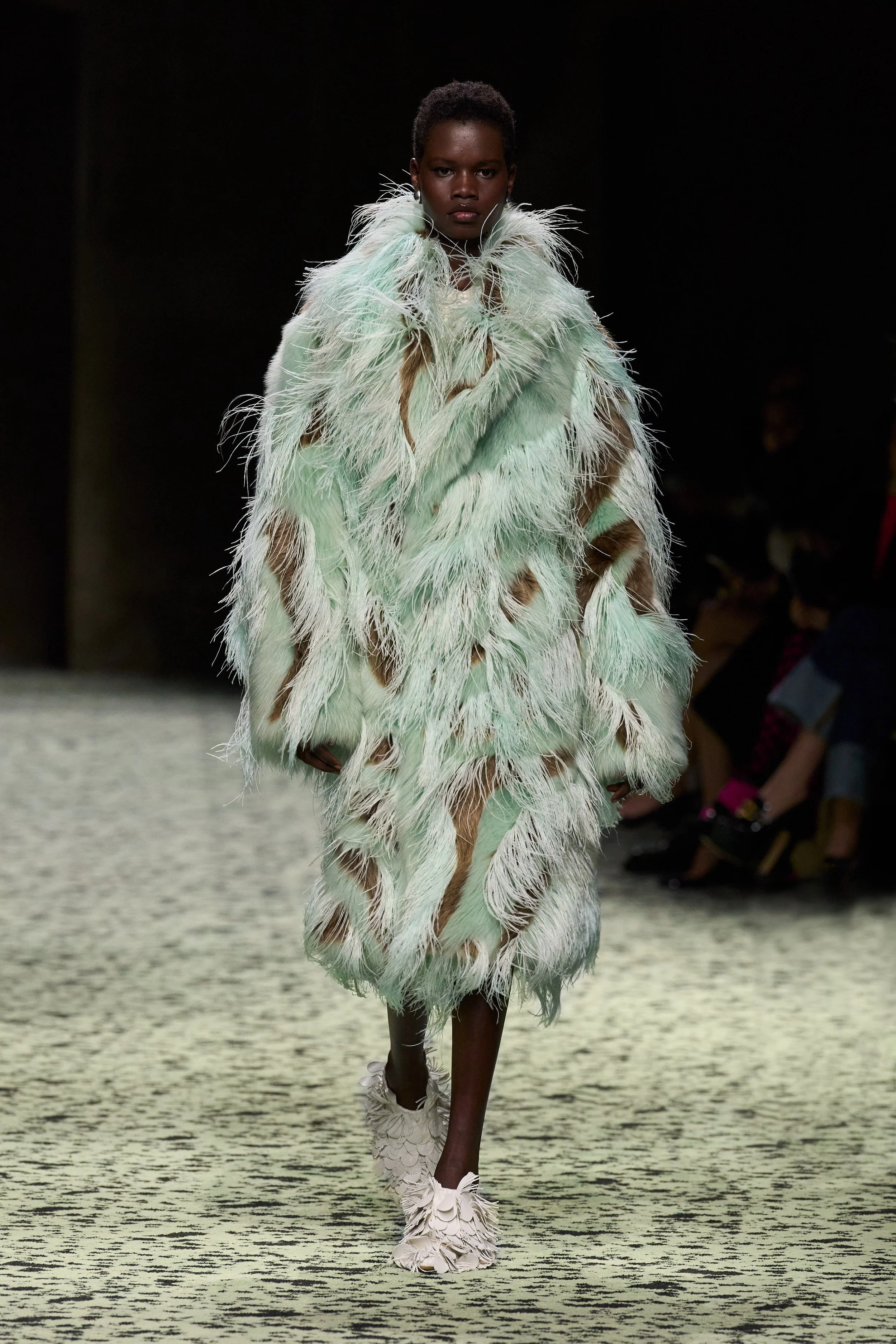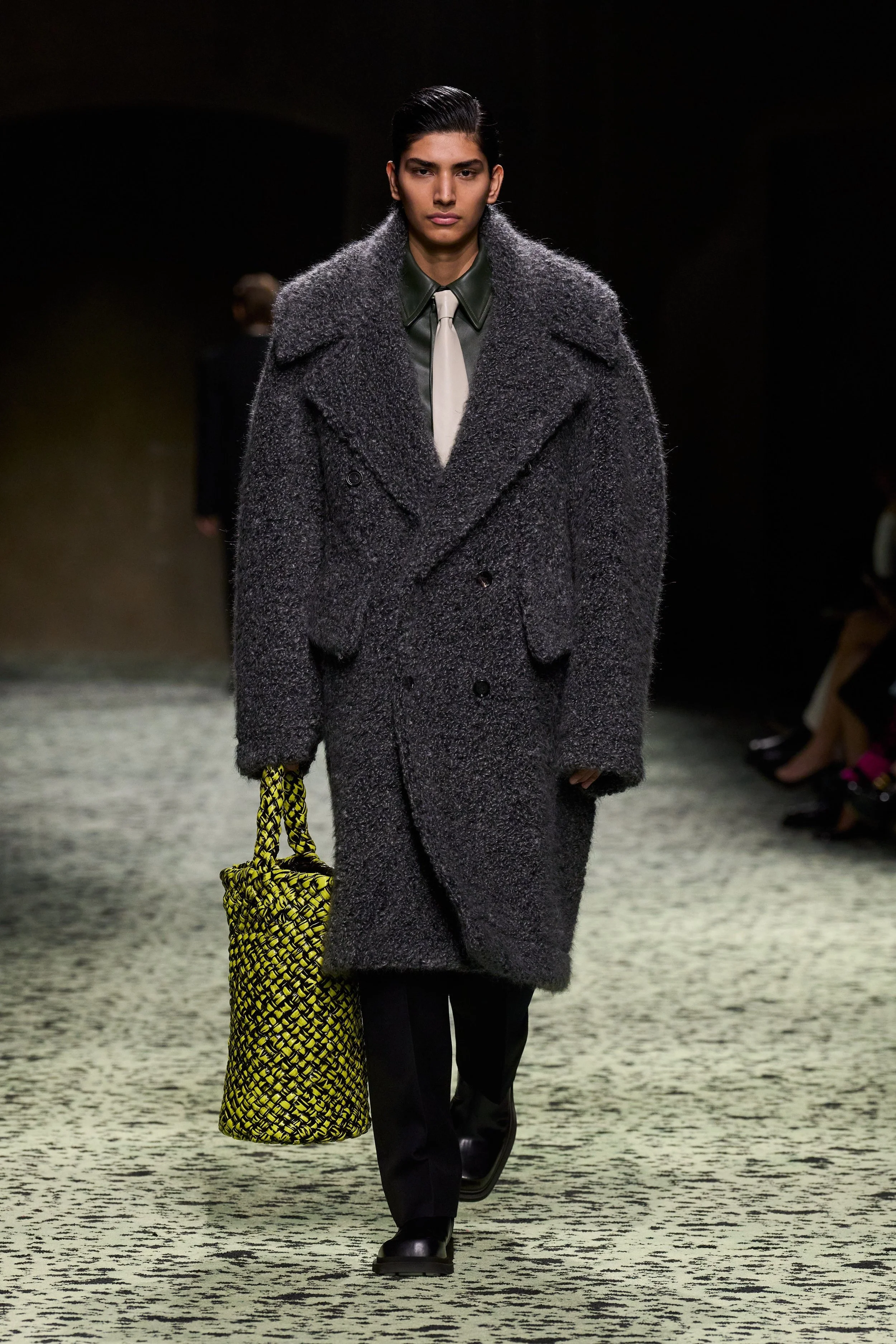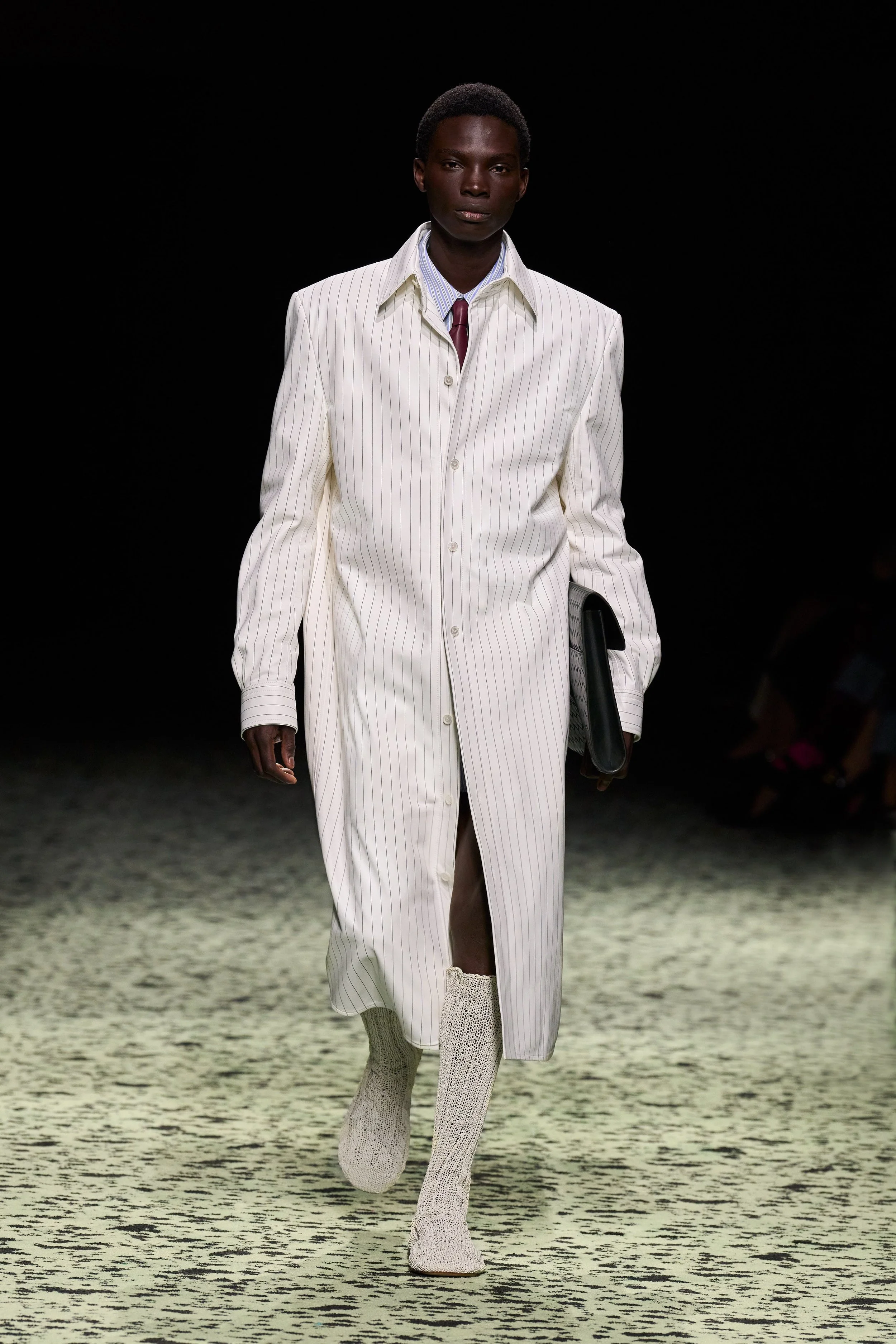Minimalism is dead…long live minimalism?: What Milan Fashion Week taught us this AW23 season.
Walking into the fashion week season, there are oftentimes different expectations that mirror the global zeitgeist, and this season Milan brought on a juxtaposition of minimalism - could it be a coincidence of designers inching away from Y2K and glimmering sequins, or is it a reflection upon a world of conflict, both economically and environmentally? As the world inches closer to a recession, hints of shrinkage, cocooning and closing yourself off from the world were first evident during the menswear season in the month prior - models walking out in disjointed, simple tailoring in a chaotic, fast paced and rushed way, with designers aiming to share their inner feeling of economic, social and environmental chaos. With womenswear, we often witness a different reality of optimism, an inner sense of colour and glimmers of fun in the shape of epaulettes, sequins and fringe. For many seasons, Milan has given us an old-school sense of splashy optimism, however this season it honed in on the sobering state of the world, reverting back to the basics - shape, silhouette, technique and fabric. Minimalism is dead…long live minimalism?
Diesel.
Many things can be said about the genius of Glenn Martens and his key consistency of creating identities across Diesel and Y/PROJECT. Jolting the audience awake with the soundtrack of intense moaning, and mountains of Durex condoms, Martens expressed that there is one simple joie de vivre that will never be taken away - the pleasure of sex. Opening with low-cut, cheeky denim that feels Y2K in a glamorously futuristic way, meshed with lace and shearling into a devoré technique, the collection further progressed in combining the three pillars of the Glenn Martens core - craft, pleasure and construction. The immense detail of the handmade artisanal pieces that replicated cracked leather, melted slime-like and coats For AW23, Diesel is bridging the past and the future together - Dune-esque models walking across with distressed oversized leather jackets, draped and ruched mini skirts with matching tops, finishing off with the camp element of taking poster girl billboard smiles and applying them onto puffer jackets. The Glenn Martens effect - ribbed for your pleasure.
Fendi.
When it comes to pure sartorialism, Kim Jones is the one to call. Ushering a new sense of detailed attention towards shape, fabric and feeling, this collection began with an observation of combining dichotomies of colour - a bright and upbeat pale blue, with a serious grey detailed on sharply bias-cut trousers that flowed against the catwalk in a determined way. “This season I wanted to focus on complex simplicity” ushered Jones backstage after the show, bringing forward what he does best - combining skill and craft into garments that usher the studying of every line and curve. The dark and pale purple-spectrum show space brought together the designer’s feeling behind Fendi Couture and Ready To Wear - both collections ushering layers of flow and movement as the main inspiration. Layers upon layers of cream pleats, asymmetrical lace and 1996 Karl Lagerfeld-inspired knits provided us with a finished sense of how to navigate day-to-day dressing, purely inspired by the art of simplicity.
Max Mara.
In an interesting twist, Ian Griffiths had found himself thinking about the 18th century French Revolution, and more specifically the earlier periods of women that redefined and intercepted the timeline of how they were seen in society at the time, and more specifically the French philosopher Émilie du Châtelet. Retrospecting back to a period where fashion was a strongly defined set of rules and boundaries, upheld by the patriarchy, Griffits brought forward a concept of expanding the imagination of the progressive women at the time, fighting and demolishing archaic views and stereotypes. Borrowing from 18th century gilded menswear - more specifically the pannier skirt and the shell opening coat (reimagined into Max Mara’s signature Teddy silhouette), or the hard leather corset that ushers a statuesque stance, the feeling behind his historical deep-dive was to parallel the modern woman and expand the imagination of how in 2023 we use clothing more and more as armour to cocoon and protect ourselves in. Creating the collection in the intricacy of the signature Max Mara fabrics of cashmere and wool in earthy and soft tones, Griffits grounded the feeling of power into confidence, and more specifically knowledge of who you are.
Prada.
Miuccia Prada has always looked deeper into the reflection of human truths and connections. Together with Raf Simons, the Prada feeling has always been to provide a commentary about the larger state of the world, specifically in 2023 where violence and war run rampant across the world. “I wanted to appreciate and value the simplicity and modesty of hard-working people, and their spirit.” expressed Mrs. Prada backstage after the show, with a collection that focused on the simple beauty of the world. Sharp, simple clean lines across silk skirts, embellished with flowers, elongated tailoring with a popping collar in Prada’s signature deep grey, and uniform-inspired parkas and jackets all nodded towards the recognition of unsung everyday acts of humanity using fashion to spotlight the people and stories that matter.
Blumarine.
Nicola Brognano is revisiting the 90s through a Jean D’Arc lens. Transfixed on Milla Jovovich’s 1999 film portrayal in the messenger, the designer ushered back to the Blumarine archive and explored what the idea of the heroïne is nowadays. Dark, metallic, short and tight were all elements to his AW23 collection, as models walked bouldering moss and a ring of fire, lit up in the Blumarine logo, set ablaze with power. Shearling cropped jackets were met with metallic silver short skirts and leggings, draped off-the-shoulder dresses formed with high slits and knee-high boots and signature low-waisted trousers matched with a Y2K oversized belts were all character-defining looks, turning over a new page for Brognano’s vision at Blumarine - alluring, darker and more powerful.
Moschino.
Surrealism, in the face of Salvador Dalí’s Melting Clocks was Jeremy Scott’s last frontier of exploration for his final Moschino collection. Mirroring the uncertainty of society, the designer opted in for a conversation about confusion, experimentation and overall darkness that prevails in society. “It’s really about just figuring things out, much like the entire world is doing right now.”
Bringing together signature Moschino elements of the skirt-knit combo or the leather jacket reimagined into new force each season, Scott relied on well-known silhouettes to bring a sense of haziness. The collection, stripped down of any fanfare and incorporating jewels and gold surrealistic elements embellished onto white cardigans, blown-up quilted denim skirt sets and purple bustle gowns, the essence of the feeling behind it was embellishing yourself in the search for answers, letting in a child-like imagination run wild. At the time, we did not know this was going to be Jeremy Scott’s last showcase for the Moschino, but reflecting upon it now, there is an evident somber sense of ending in it, by displaying all of the little details and quirks that defined Moschino for the last decade, and Scott’s pure imagination and soul poured out for us all to take in.
Tod’s.
For Tod’s, the essence is in the energy of the silhouette. Walter Chiapponi has been experimenting with protrusion in the Tod’s signature craftsmanship techniques in the last couple of seasons, and this time around the proportions are reaching new heights. A fan of juxtapositions, Chiapponi likes to bring together the two opposites - short, belted skirts with an elongated leather coat, drifting away from the body. As a heritage fashion house, Tod’s has always put big emphasis on the materials - smooth leather bags, slouched and carried under one’s shoulder, or a head-to-toe leather look in ashy grey, fine and delicate with an upbeat energy. This season, the designer brought together an archetype of his muse, and with it a finished wardrobe spanning across from light and airy beige oversized tailoring, and dark blue wrap-around dressing all the way to military-inspired shearling coats in loaded greens and dark oversized wool car-coats, thrown over a white shirt dress. In the Tod’s universe, simplicity, detail and craft have always gone together as one.
Gucci.
It has been a whirlwind of a season for Gucci. With the departure of Alessandro Michele, witnessed by us all online in November, the Italian fashion house has sparked many conversations about who is best fit to carve a completely new era of design. Picking out a fashion veteran in the face of Sabato De Sarno as their new creative director, fashion folks are in trepidation about what a fresh face in the house will bring. His first collection for the house will be debuted in September, but for now, the creative design collective is bringing an amalgamation of many ideas, past and p resent, to the forefront of our attention.
Staging their show in Gucci HQ, the show space was redesigned to resemble a “a collaborative circularity at the heart of Gucci’s creative community”, bringing together many conversations across the industry about the influence of the brand, and the importance of not just a creative director, but a team. Each look was brightly put together - aqua blue fur coats, black low waisted silk skirts, dark faux fur-trimmed elongated tailoring and the revamp of the horsebit element across shoulder bags and accessories. The collection in question presented many ideas that felt retrospective towards different eras of ready to wear - a lingerie and leather nod towards Tom Ford’s era, a maximalist and tactile approach from Michele’s time, or the experimental muse bridging all eras into one, putting a sharply contrasting mirror up to the Gucci archetypes - where are they now and how do they evolve?
Jil Sander.
In a season of reminiscence, Luke and Lucie Meier are looking back at a more optimistic time, taking us back to their beginnings in the 90s. For the duo, retrospecting back allows for them to understand better fashion’s transformative power, seen specifically with this nostalgic collection. The brilliant colour story of deep Yves Klein blues in a detailed take on vintage moto jackets, juxtaposed with the pillowy and tactile soft whites and beiges in true Jil Sander fashion seen across long coats and boiler suits, one could be transported into two places at once - the smell of gasoline in the 90s or the precariousness of the current state of the world, and the urge to escape. After 5 years at Jil Sander, the Meier duo is ready to steer into a more experimental course, by bringing forward harsher influences in the face of structured leather, cinched zip trousers, parachute dresses and cherry-graphics splashed across slouched silhouettes. The state of Jil Sander always brings a masterclass in shape, but now it also begins to take on a new role across of fashion, confidently steered by Luke and Lucie Meier.
Ermanno Scervino.
Ermanno Scervino is looking to inject optimism with a specific nod to Hollywood movie starlet of the 1940s, Ava Gardner. From the opening look, a gold silk corset dress with a french lace overlay, it was obvious that Scervino wants to incorporate star power and fantasy into AW23, a moment to let our imagination wild with the unobstructed glamour. Following suit, the collection played upon juxtapositioning soft, delicate and intricate tactile silk silhouettes in the forms of wide trousers, alongside poignant chartreuse and fiery merlot red leather coats and high-waisted tailoring. In the ultimate selection of pick-your-fighter selection of silhouettes, the ending brought together a sobering collective of black, elegant sheer evening wear that encompassed the Ermanno Scervino feeling for life - equal amounts of softly dangerous and subversively confident.
Ferragamo.
Maximillian Davis has made Milan his place. Bringing forward a second collection under his belt for the Italian heritage brand Ferragamo, his path towards finding his sweet spot included looking back at the Hollywood obsessed 1950s, ushering the sense of motion picture excitement and glitz that skyrocketed actresses like Elizabeth Taylor and James Mansfield into the stratosphere, representing the epitome of style. This collection brought together the strong essence of transporting back in time - silhouettes sharper, paired back with emphasis on sweetheart necklines on dresses, oversized tactile coats and draping of leather and lamé. In the menswear side of things, a contemporary touch was added by bringing boxy sportswear style to the forefront next to styles in the vibrant Ferragamo red, as well as Davis’ take on sensuality with black patent leather, reflecting back across the futuristic show space of the MiCo Convention Center. The feeling of the menswear part of the collection ushered futurism, whilst womenswear looked back at the past. With the feeling of time-travel, Maximillian Davis is studying the Ferragamo glamour, full of essence and life, curiously peeking out into the future that awaits.
Tomo Koizumi, supported by Dolce & Gabbana.
A beaming sense of joy could be witnessed with Tomo Koizumi’s debut in Milan and his utmost sense of volume and expression, ruffles becoming higher and silhouettes becoming bigger. Showcasing in the Dolce & Gabbana HQ in Milan, he expressed that this collection is titled Don’t Forget to Bring Your Flowers as a sign of the utmost respect and connection amongst friends, but also as a peace offering towards the world - struck by violence like the War in Ukraine and in many places across the world, followed by difficult years of conflict. The signature Koizumi ruffles progressed with the show, opening with a short black striped look, and proceeding to let us enter the multiverse of colour with each following model. The complexity of the three-dimensional ruffles could be witnessed in a masterclass of colour - deep greens flowing into an ocean scape of aqua, or baby pinks striped into darker magenta. For the finale, the designer brought out a five-person rainbow dress that encompassed the purity of his personality and imagination - harnessing the power of bright thinking and extending joy and peace out into a world that so desperately needs it.
Bottega Veneta.
What a better way to close a demure Milan season other than with Matthieu Blazy’s masterclass of tactility and craftsmanship. With two seasons at Bottega Veneta under his belt, Blazy has understood the specificity of bridging multiple identities, and has created a world of belonging - a place where clothes are perfectly representative of their wearer. He is making the fashion that we all can relate to, and wear.
For this season, Blazy expressed that he has built a series of archetypes “I studied encounters between people - people that you meet on the street and strike a chord inside you.” And that is exactly what he did. As each model walked out across the Roman bronze statues in the show space, the clothes told all the story - a confident woman in a sheer evening dress, ready to take on the night, an enamoured man in an all-leather black oversized tailoring enthralled with the future, a 1950s starlet in a mint feathered slung-back gown awaiting her debut, all stories that we witness day to day around us. The craftsmanship, as important as those developing characters, also brought together the Bottega Veneta spirit, featuring the signature Blazy all-leather jeans-and-a-shirt looks that take on a new feeling when touched and studied up-close. The authenticity and genuine curiosity with which Matthieu Blazy carves fashion is at the very core as to why we all urge to be in a place where creatives come to dream and to tell stories - to capture the subtlety of what makes us all human and connected amongst each other.
